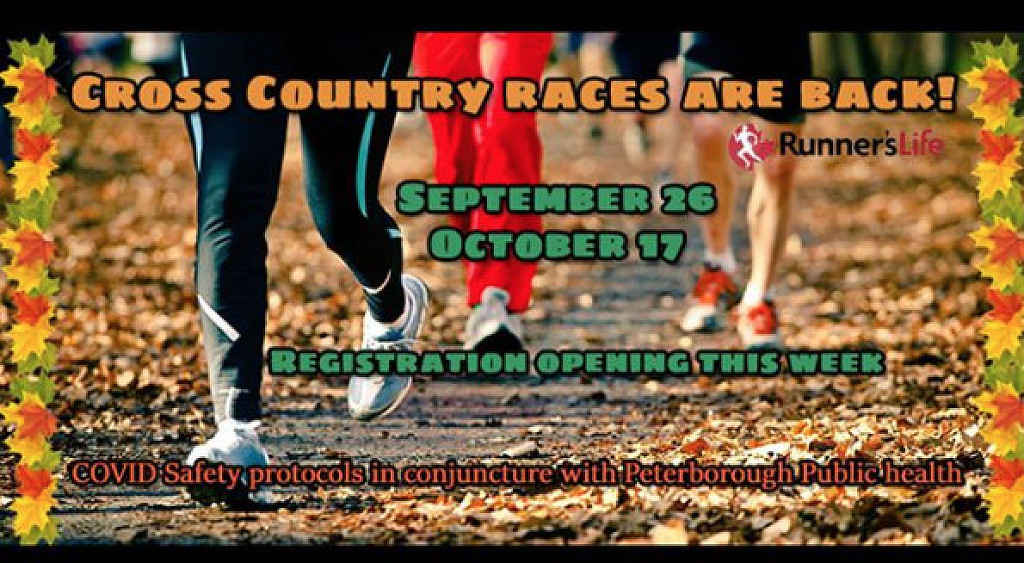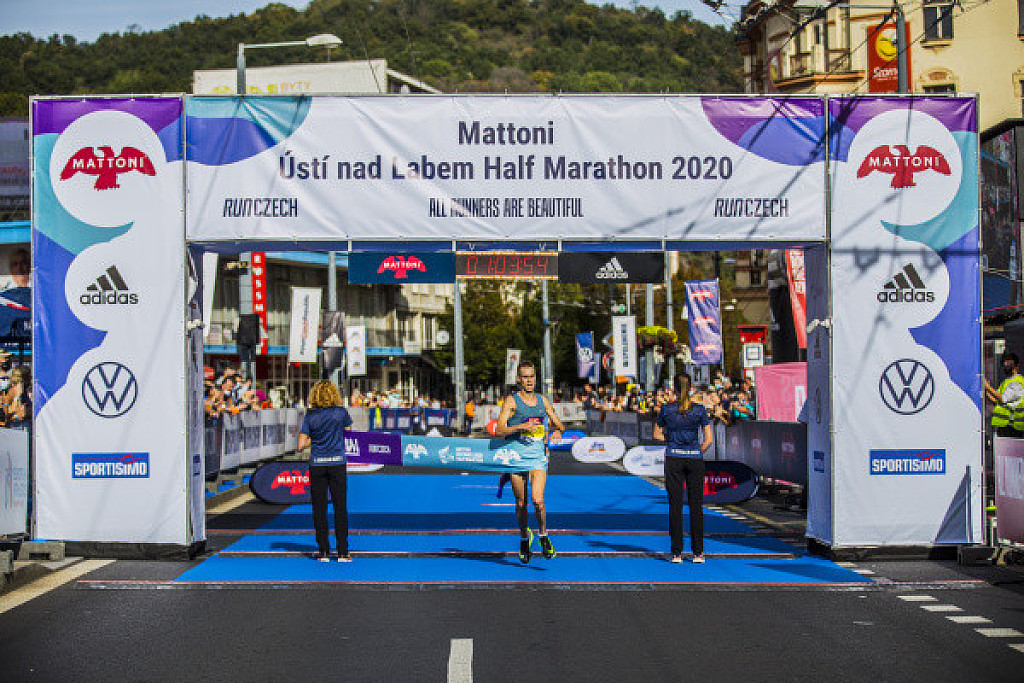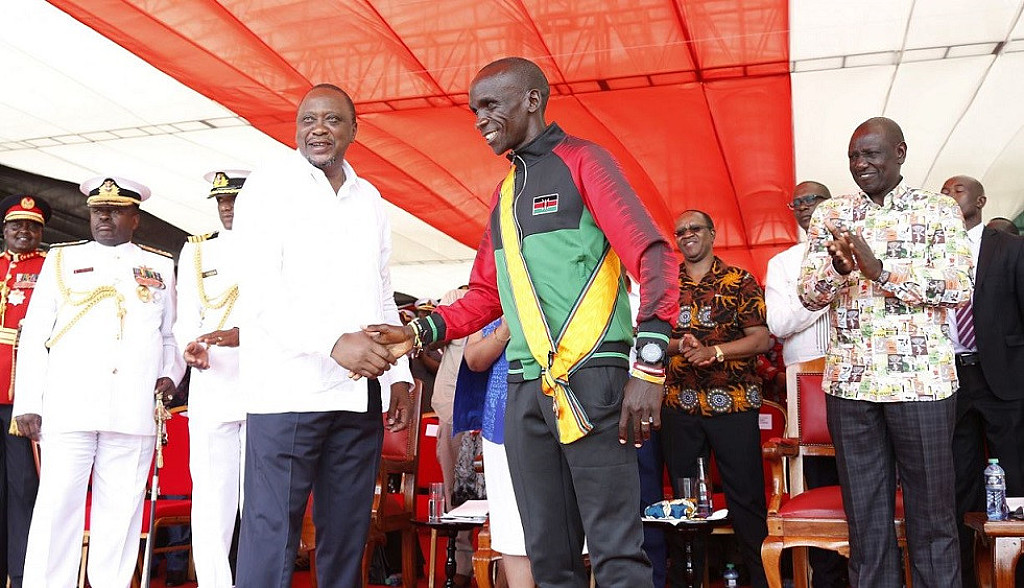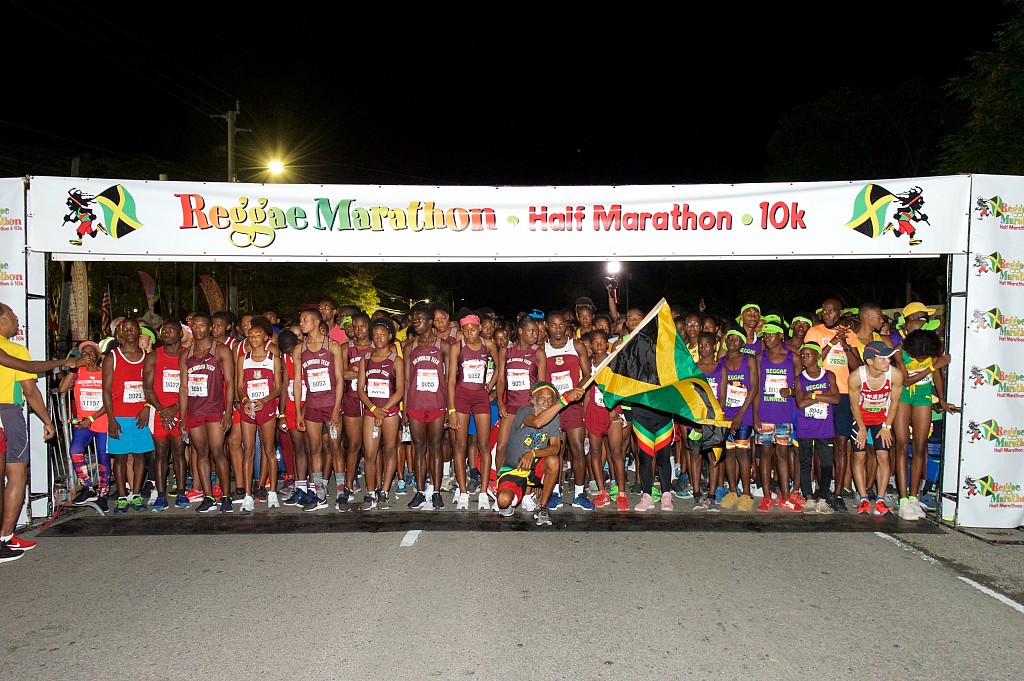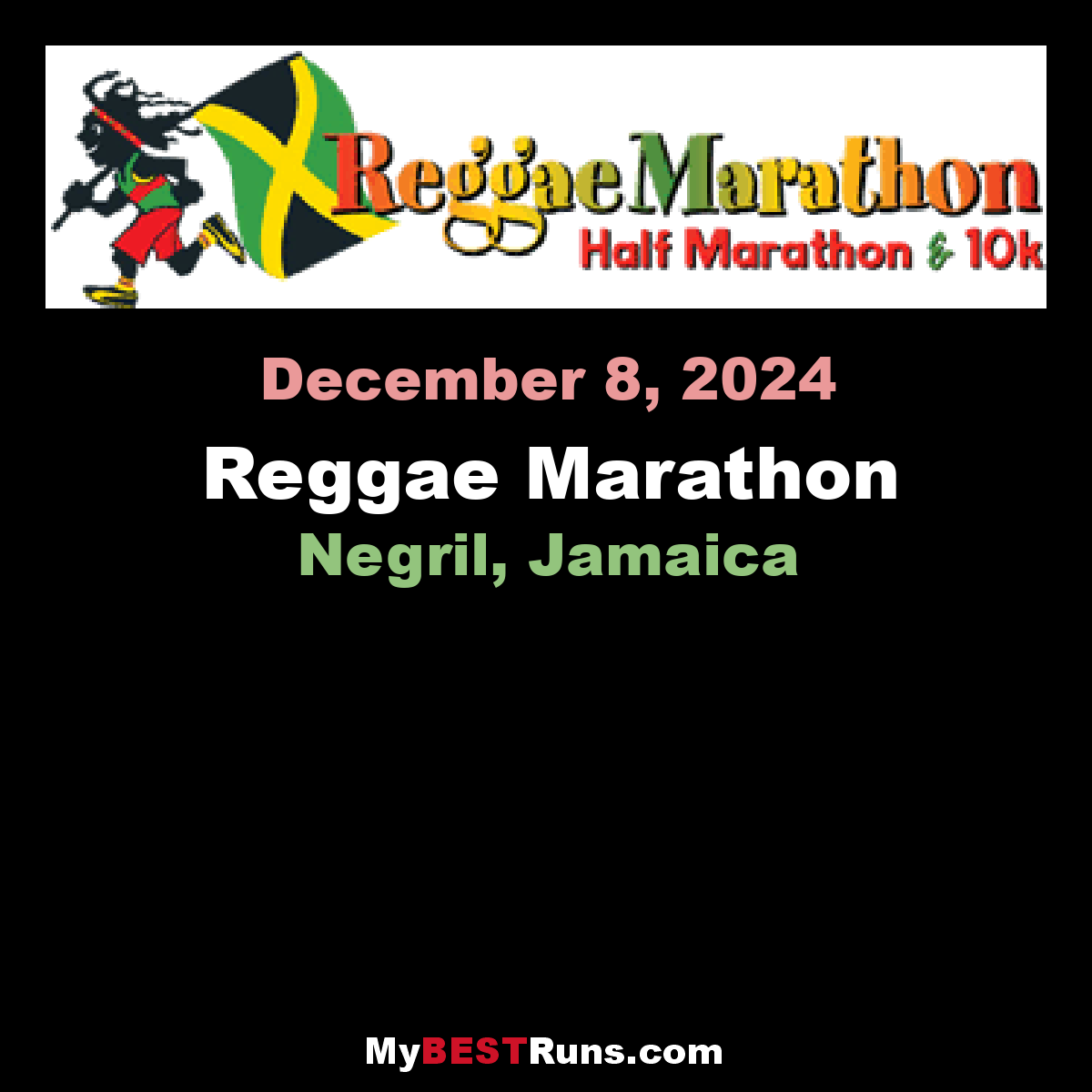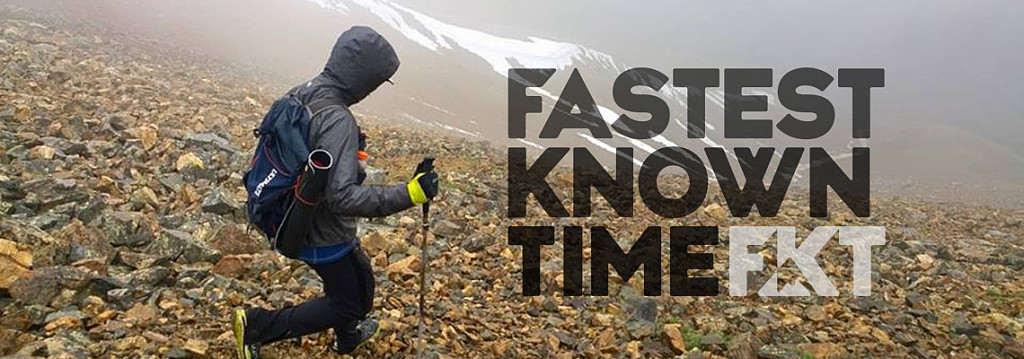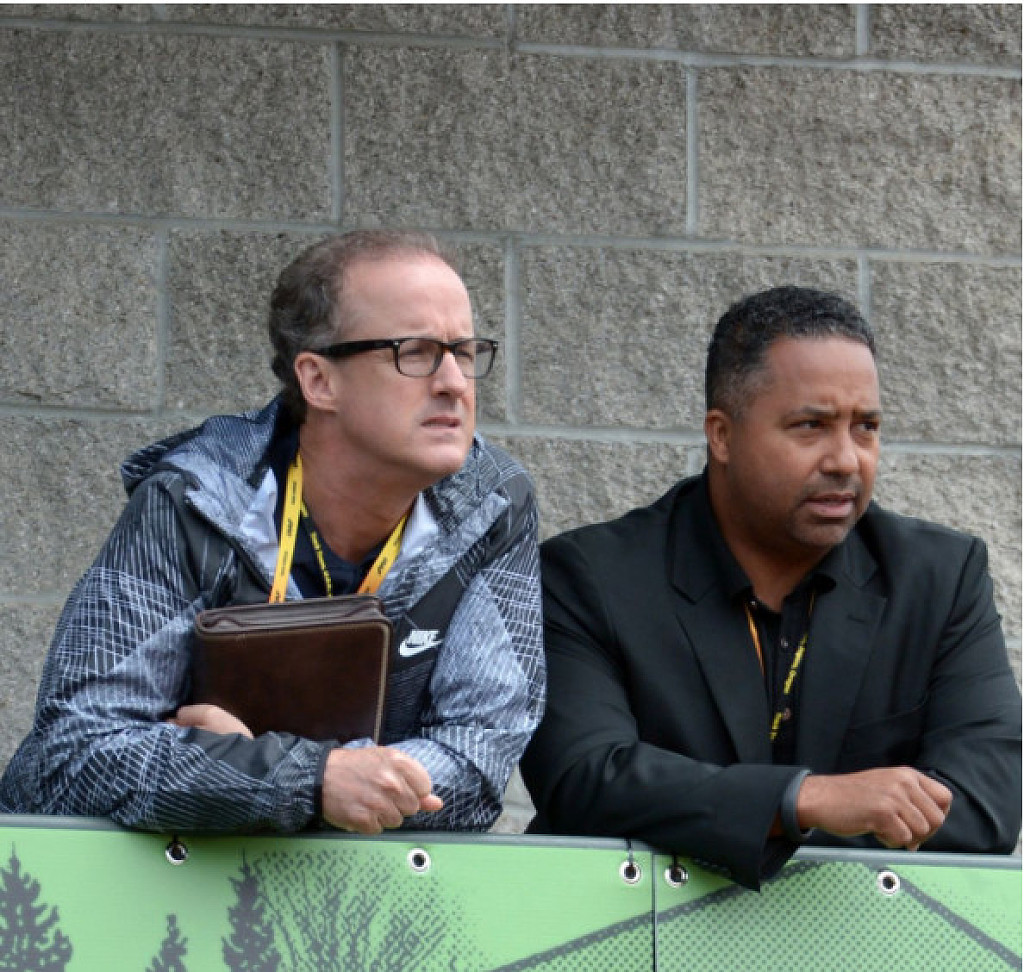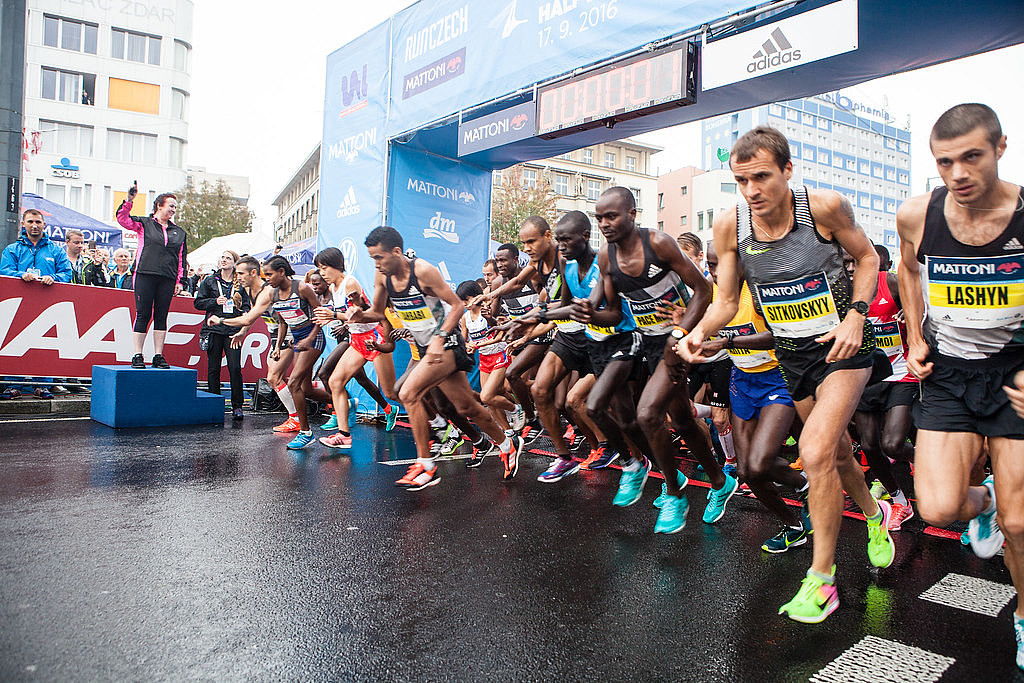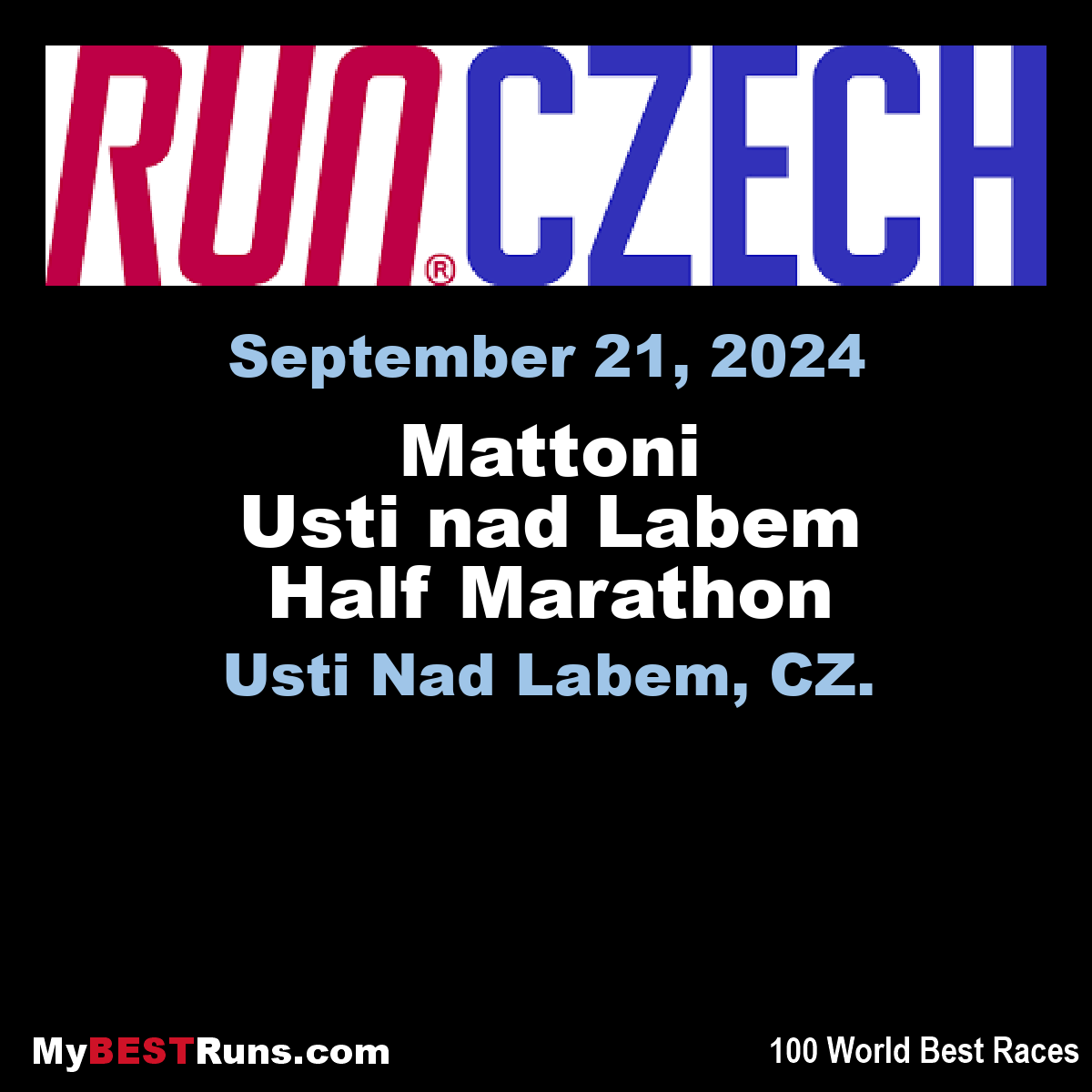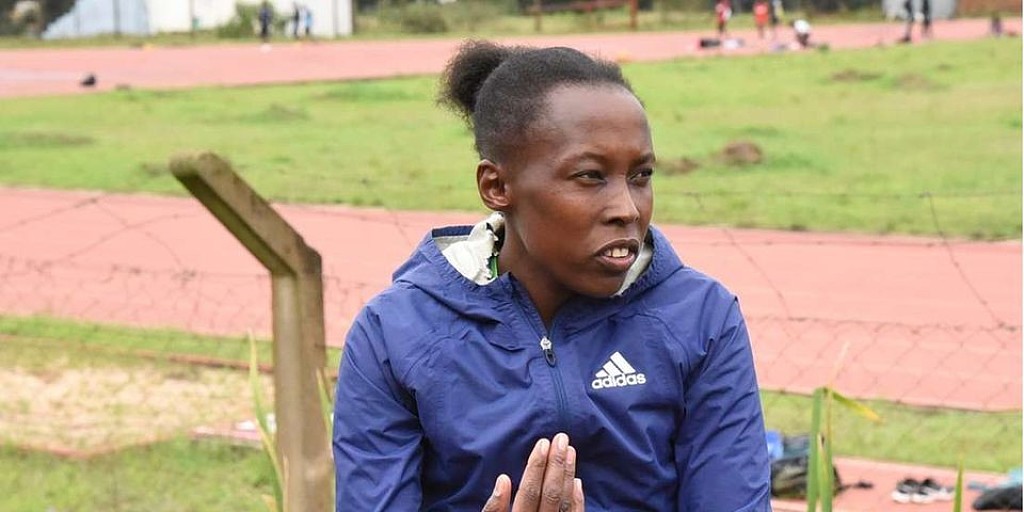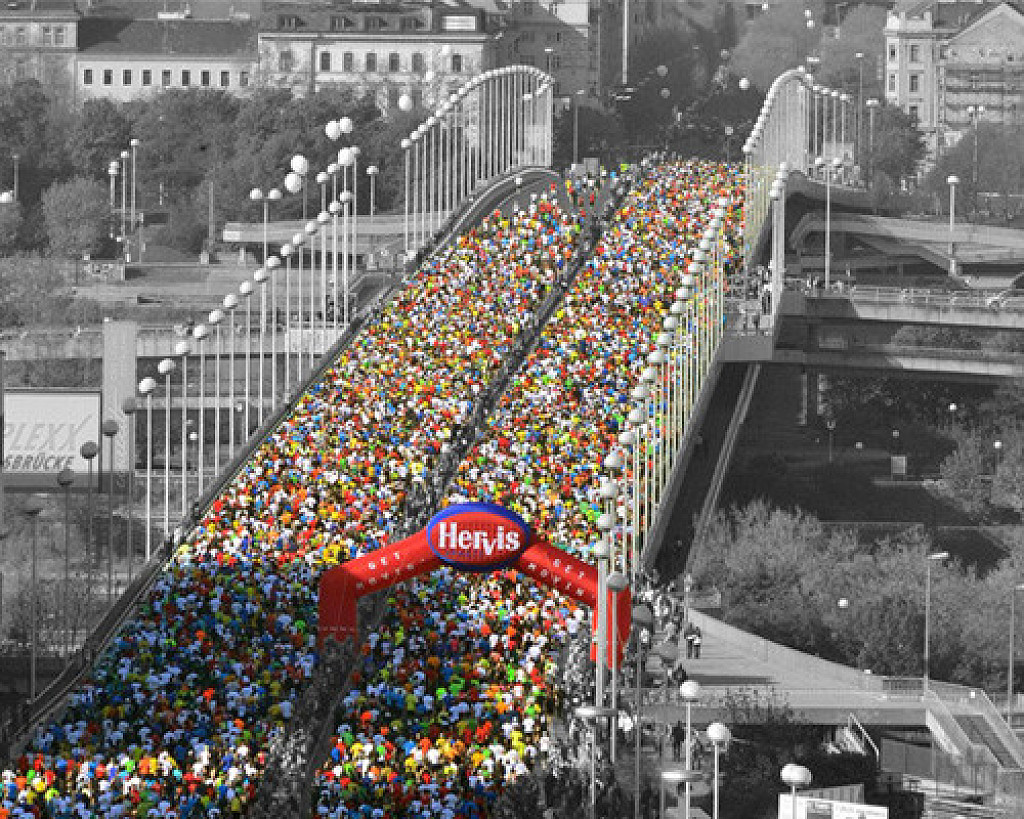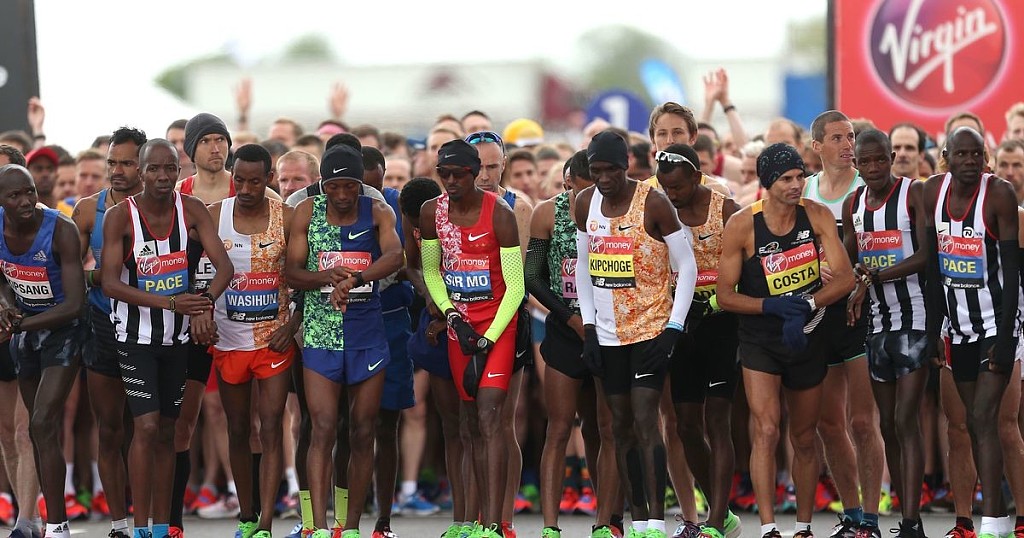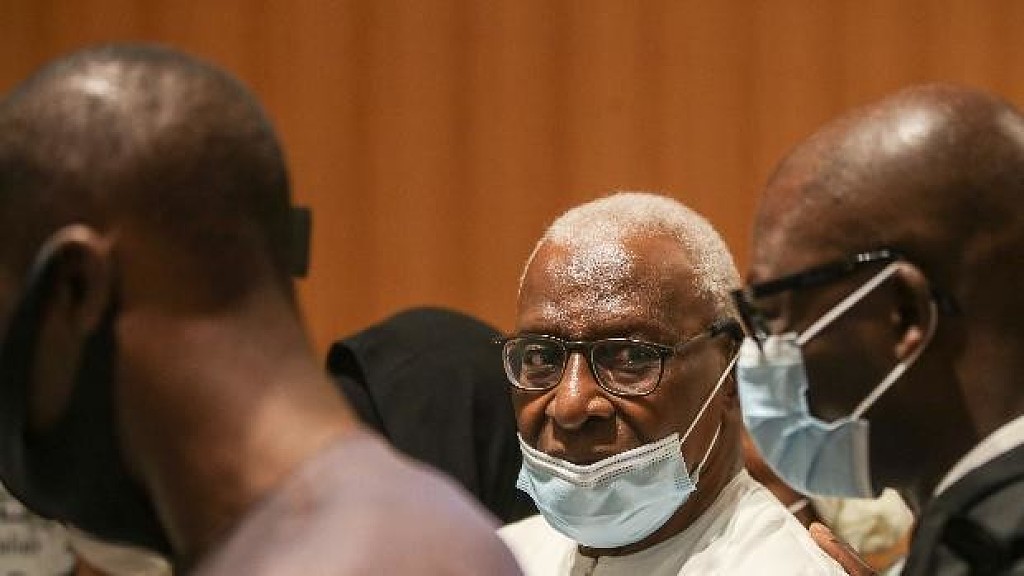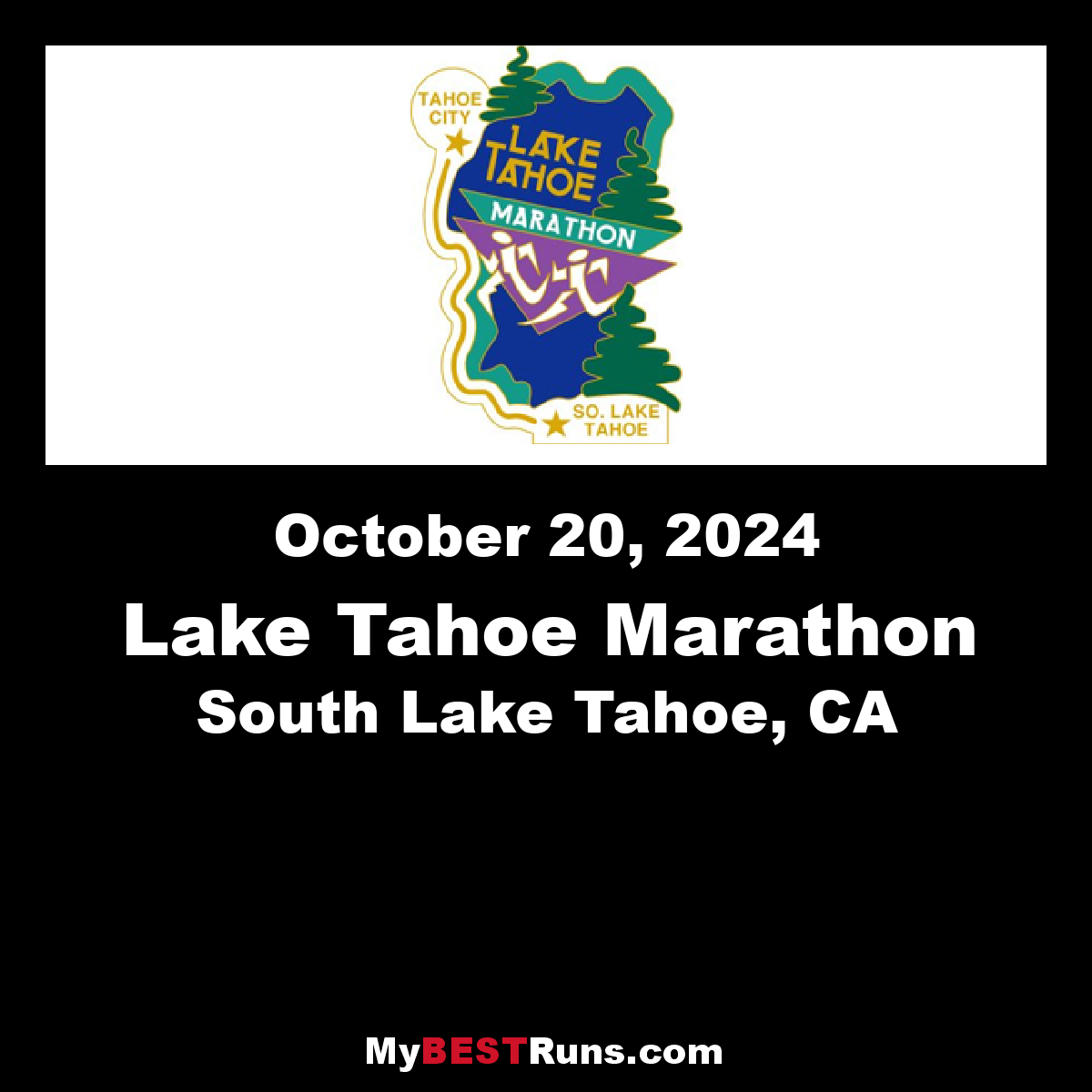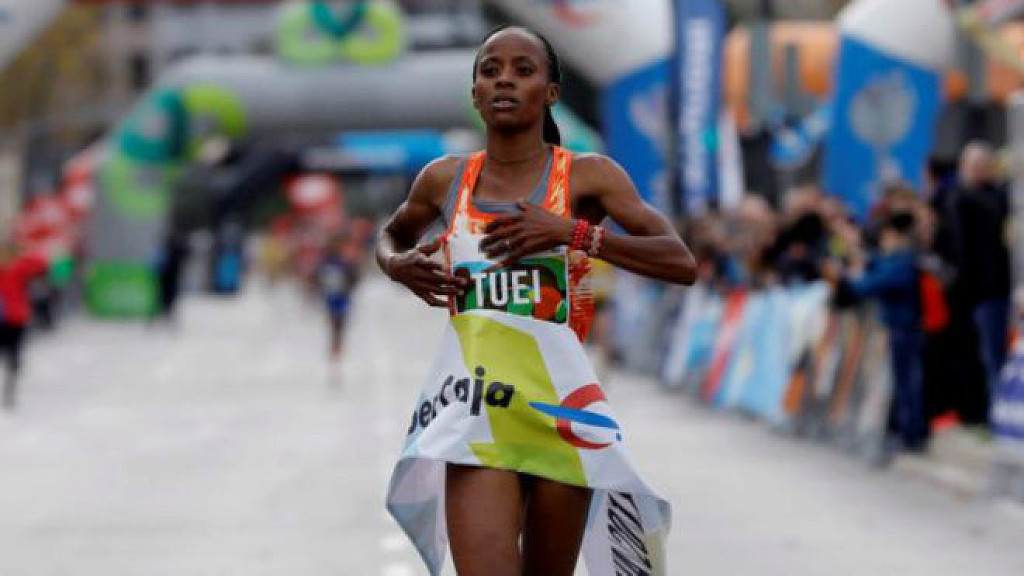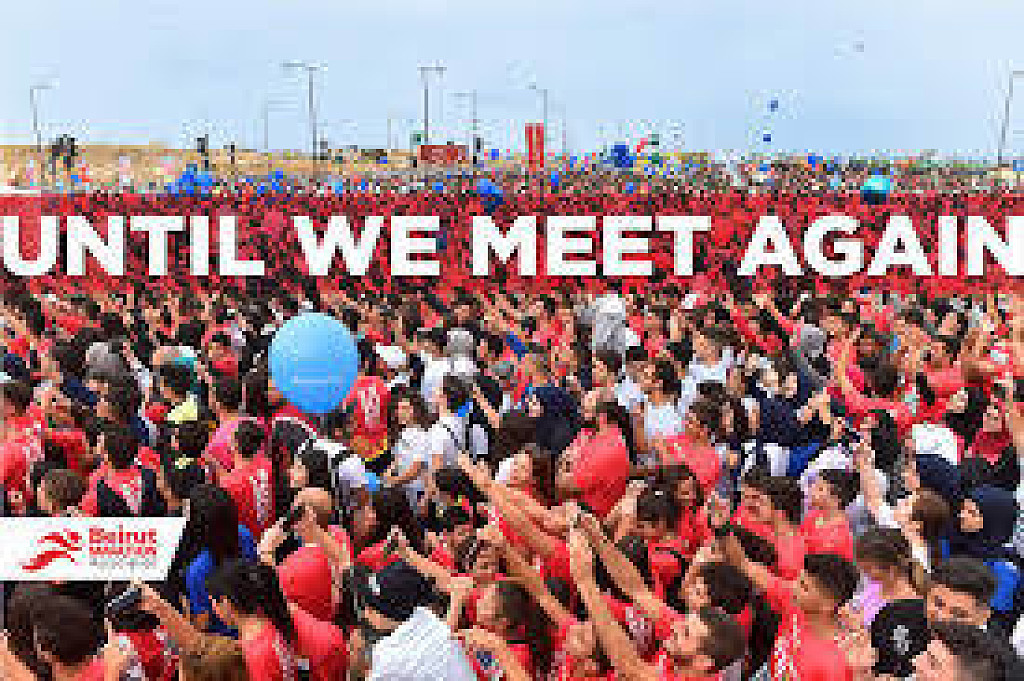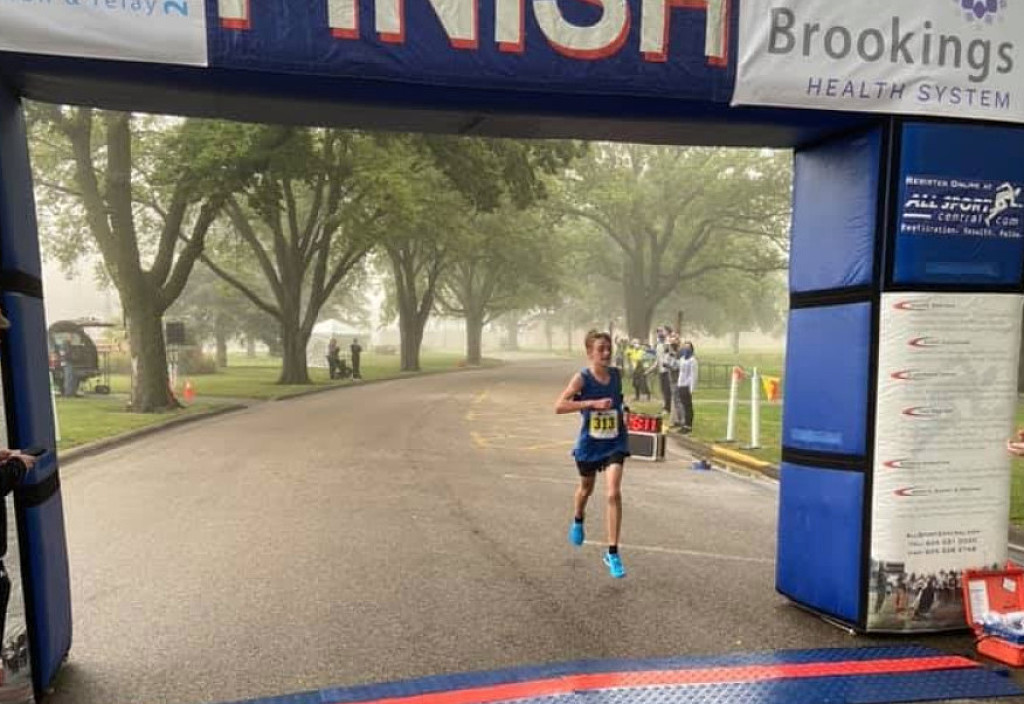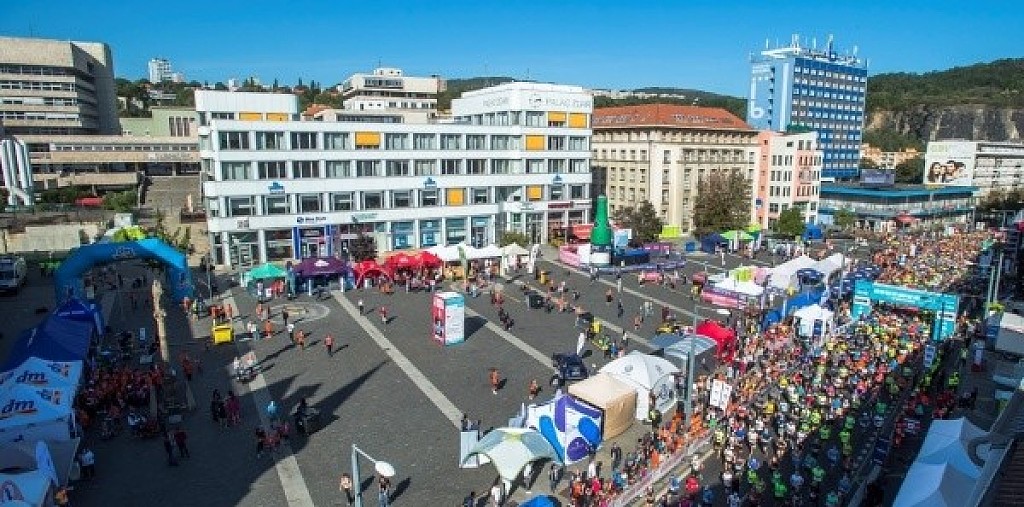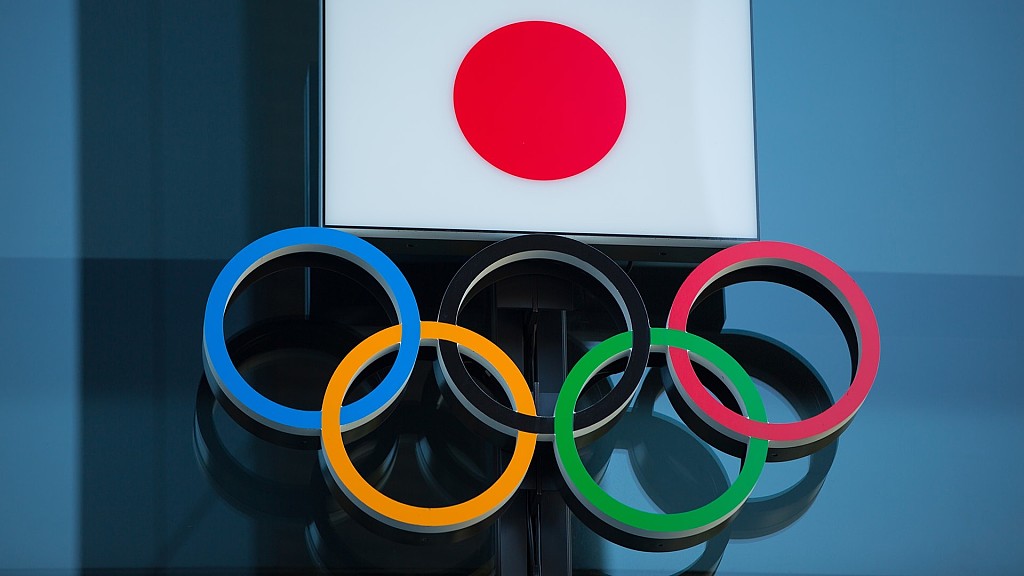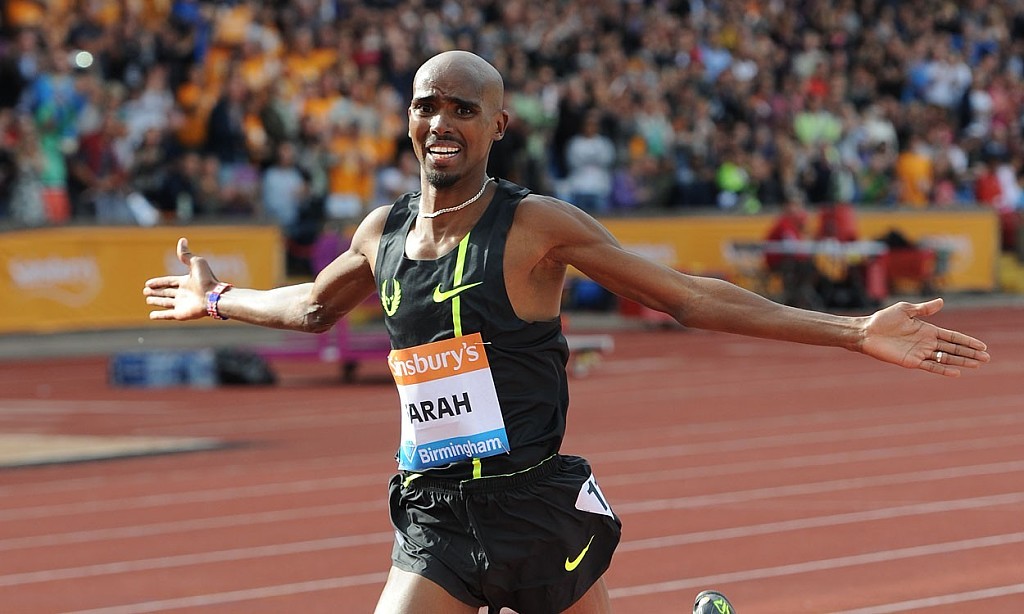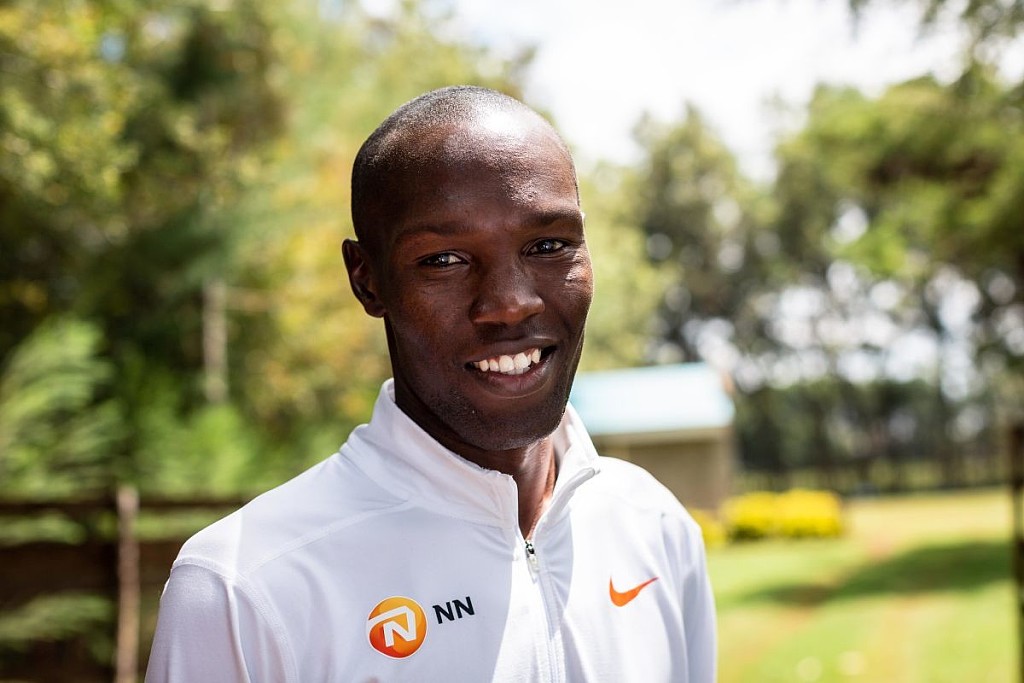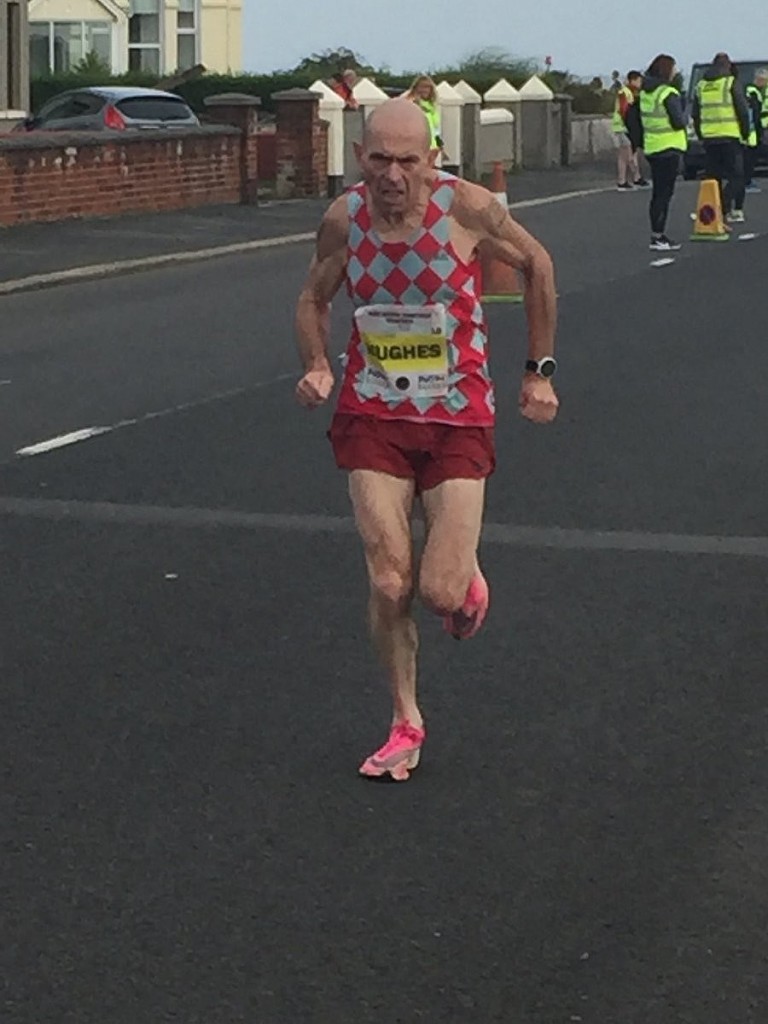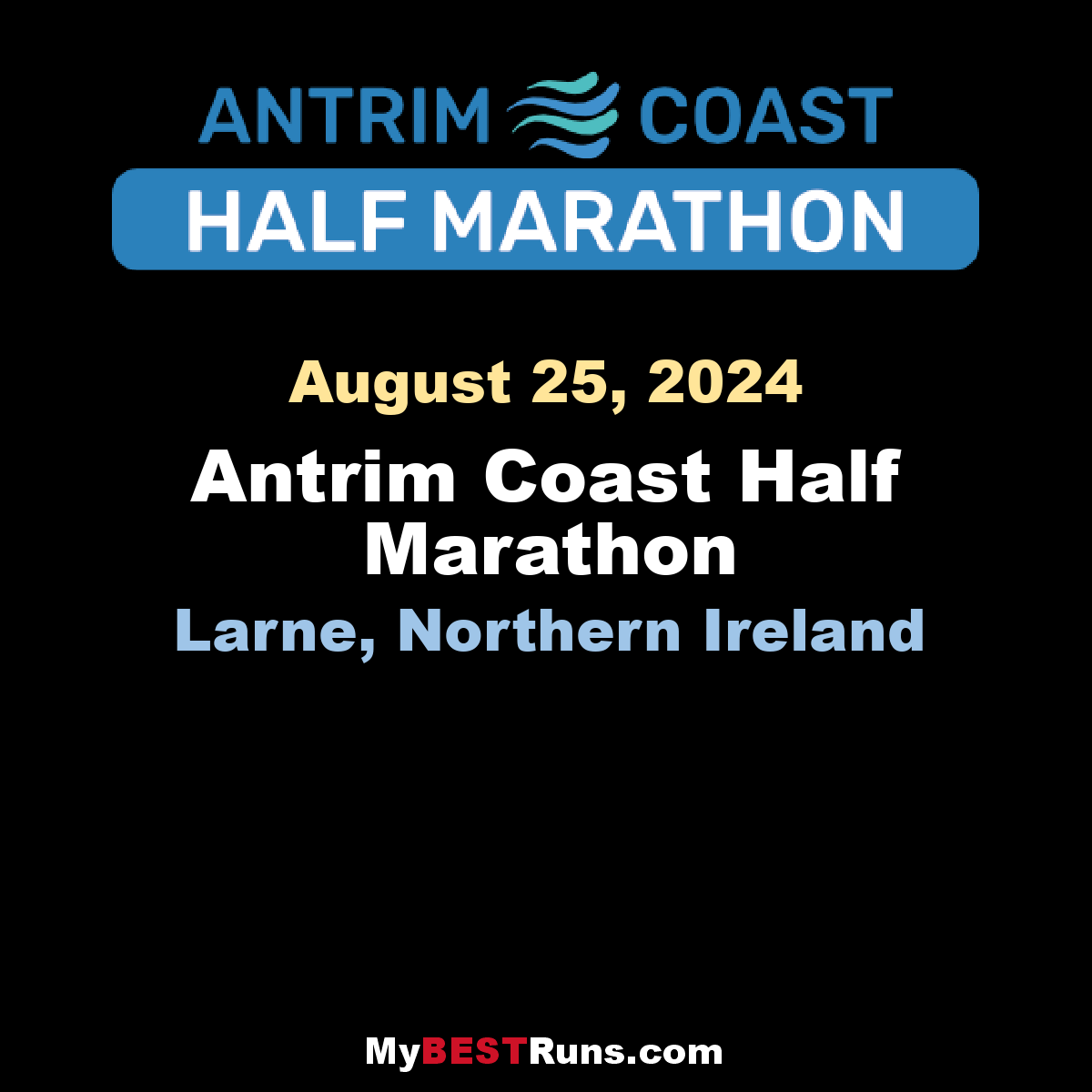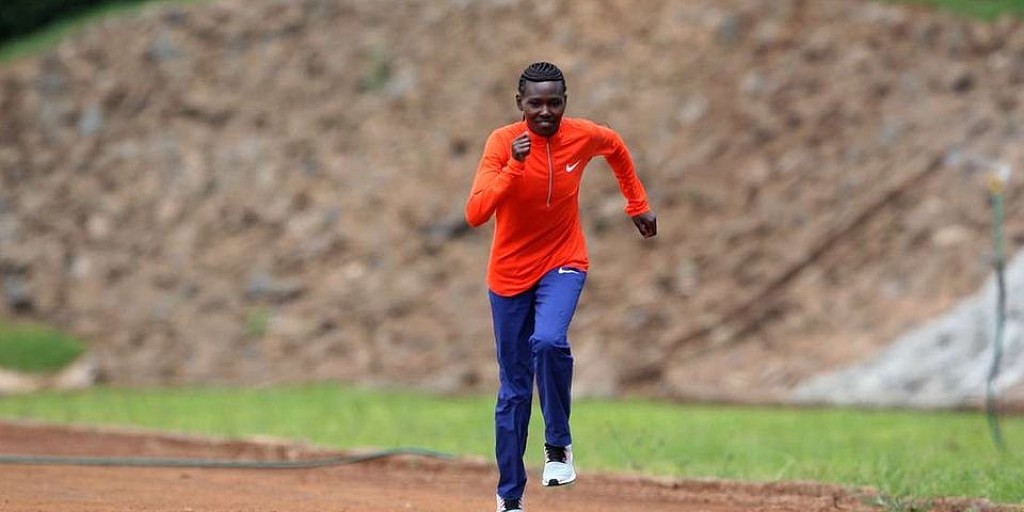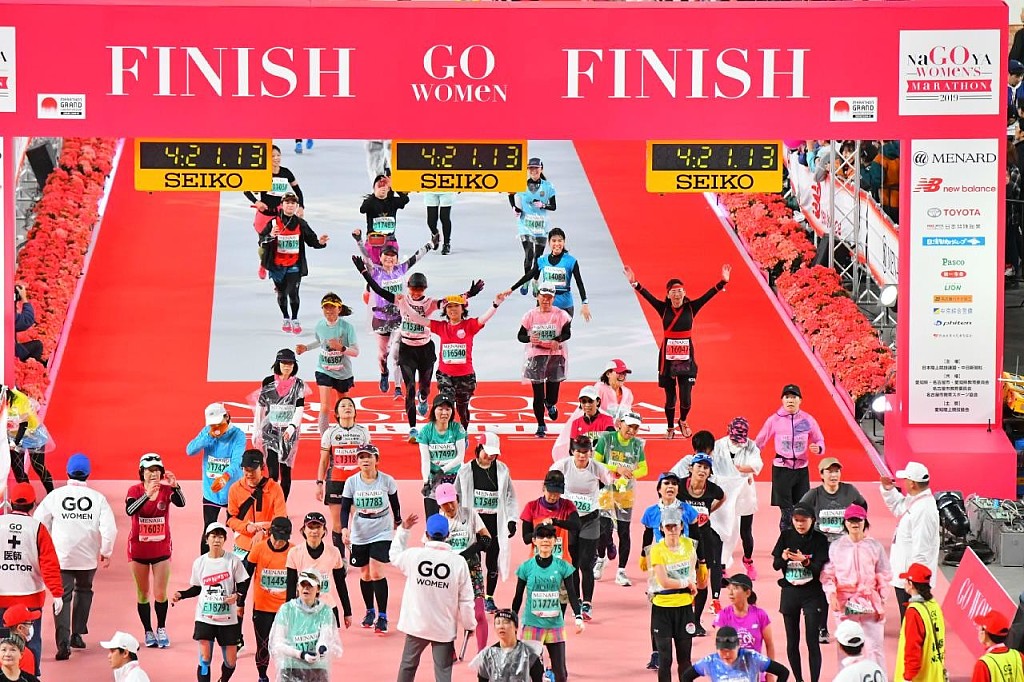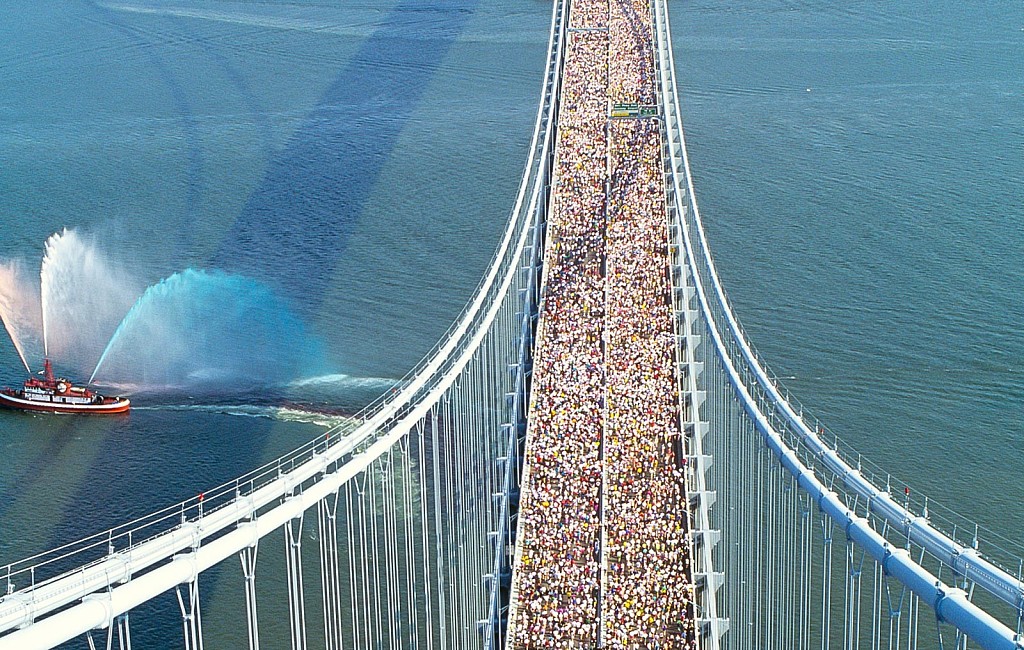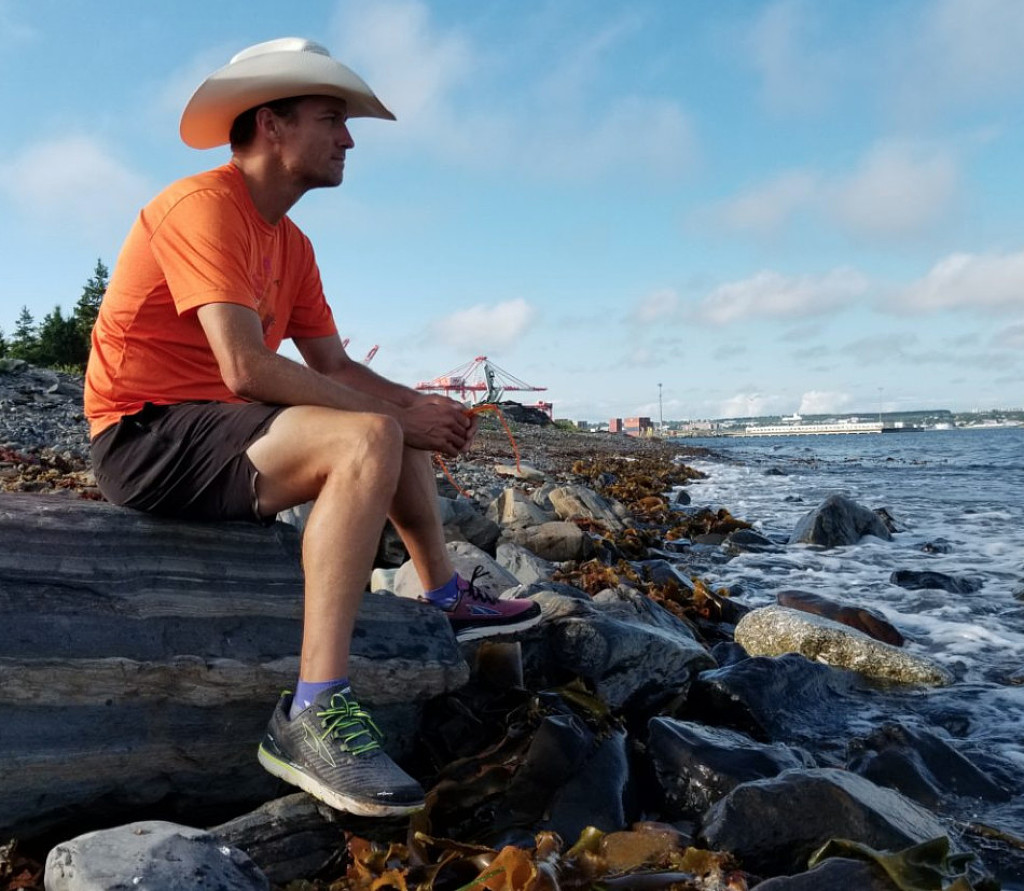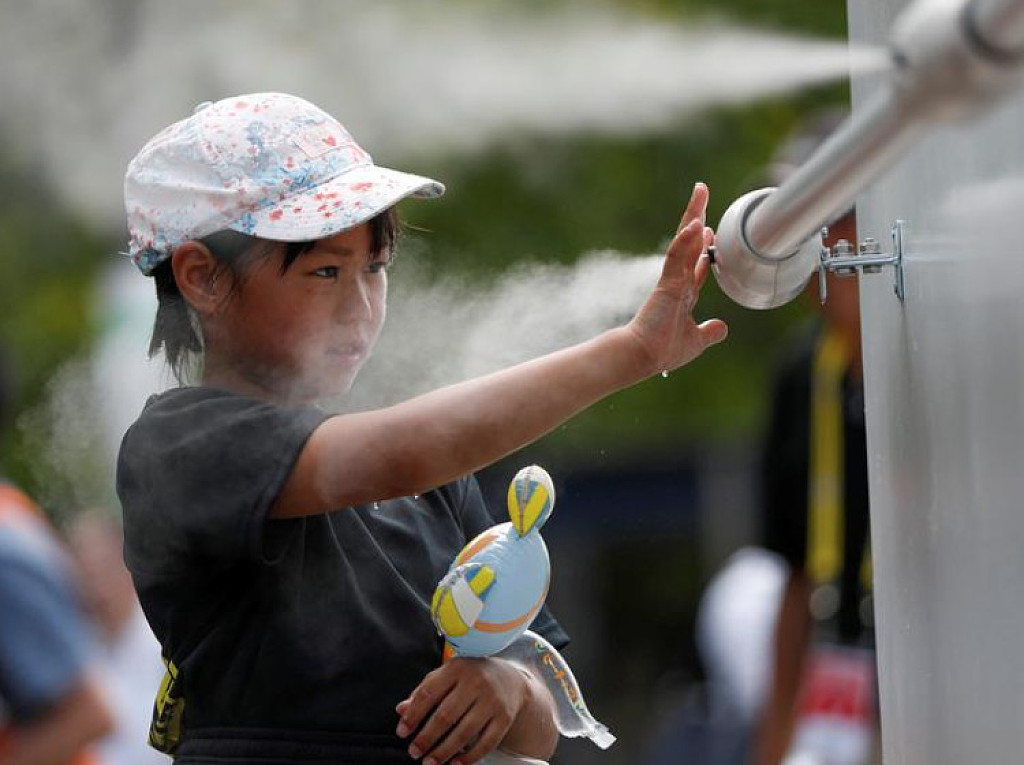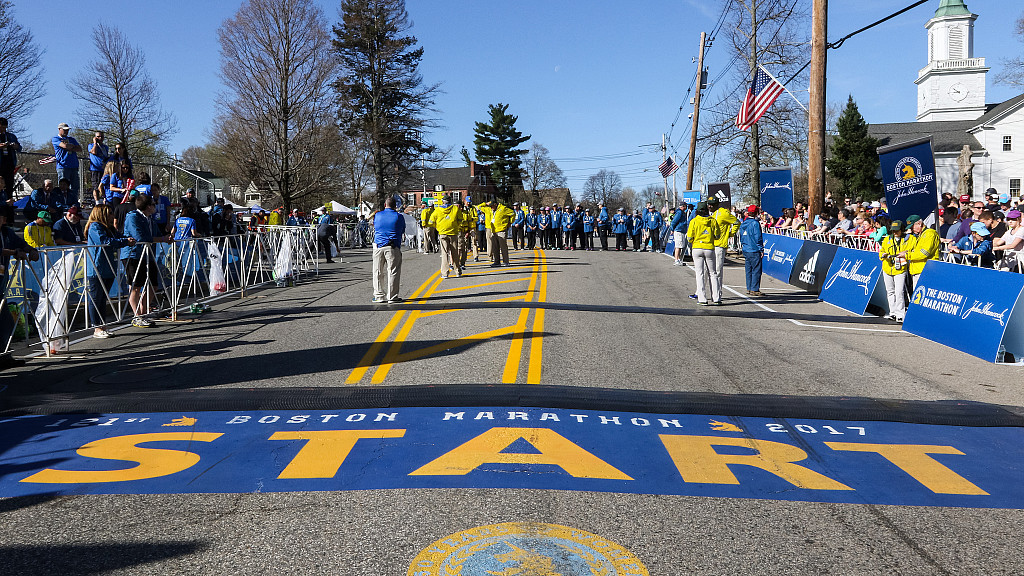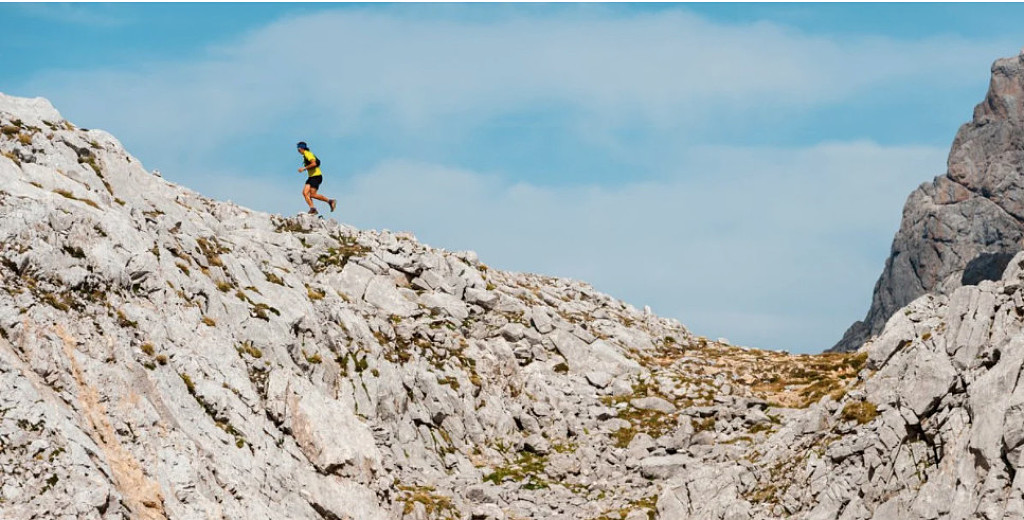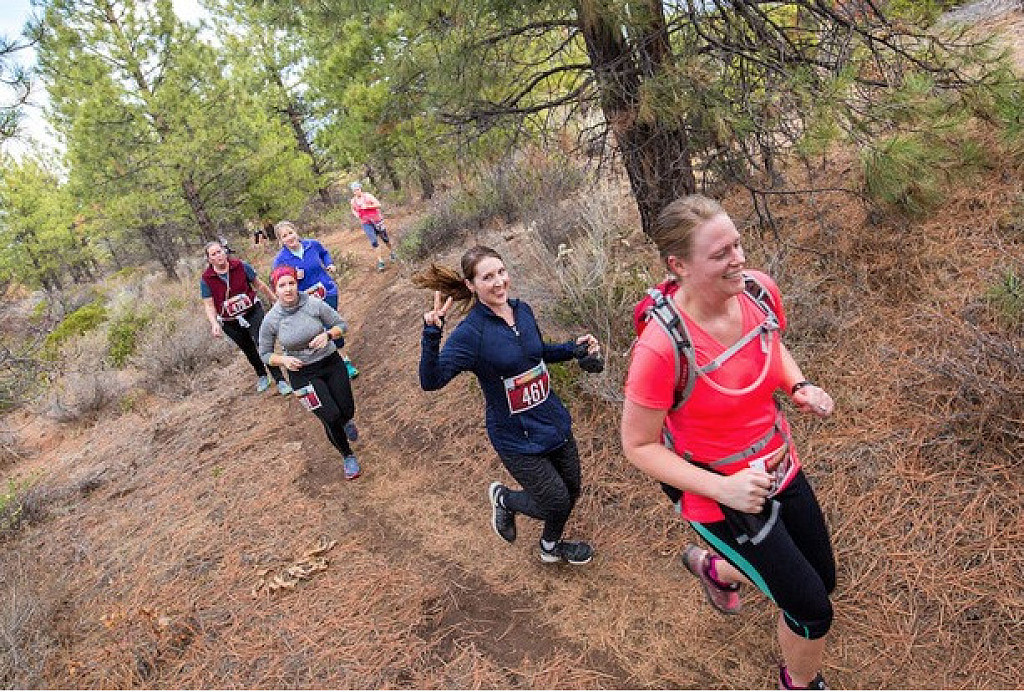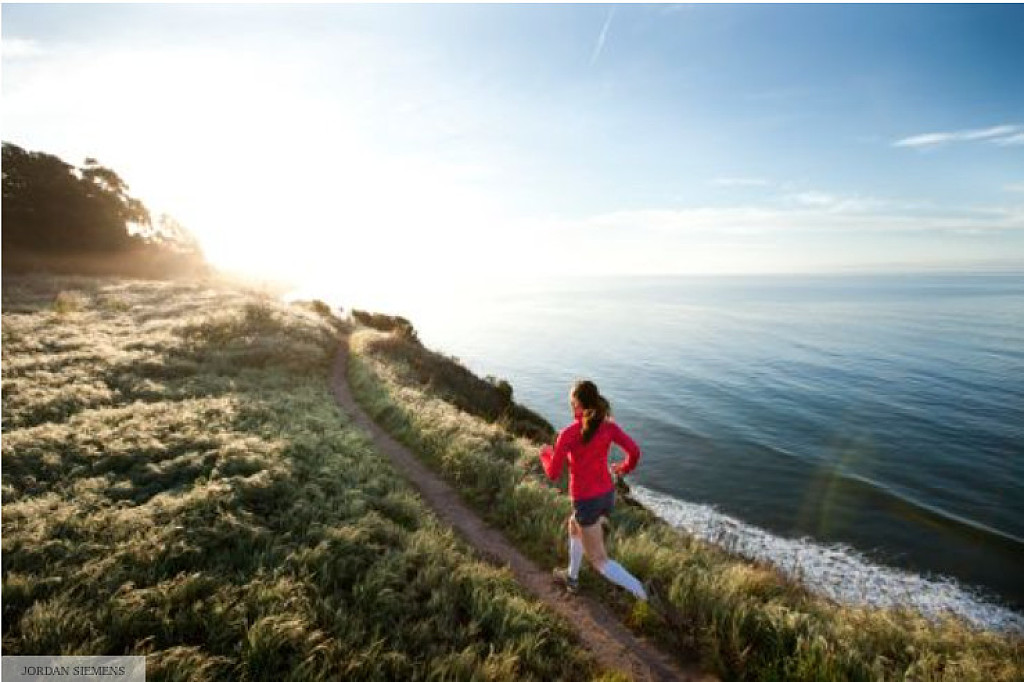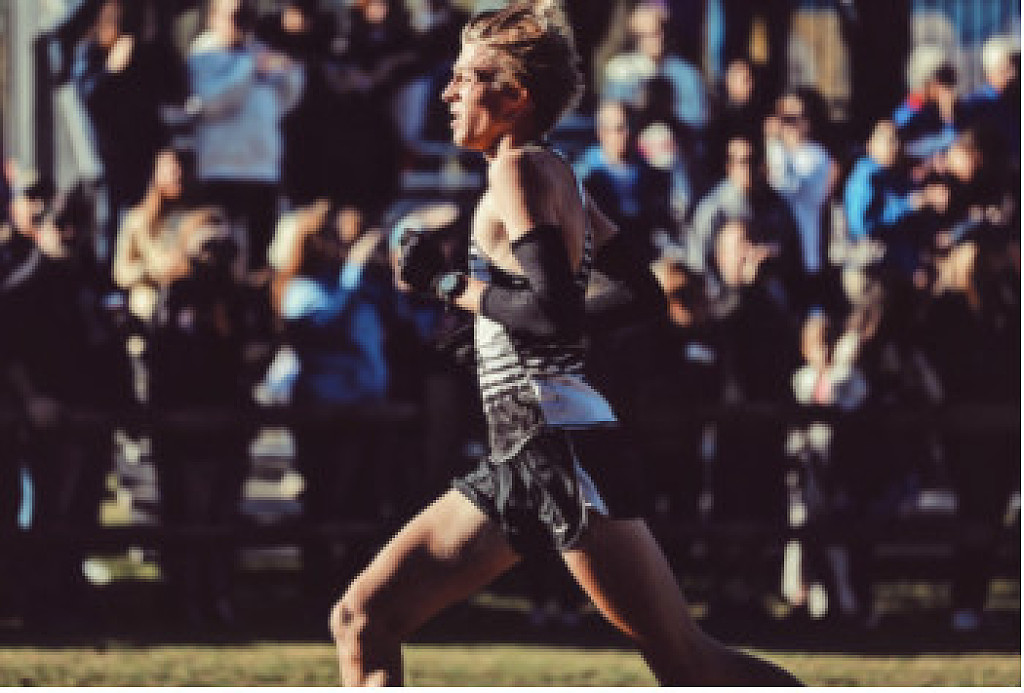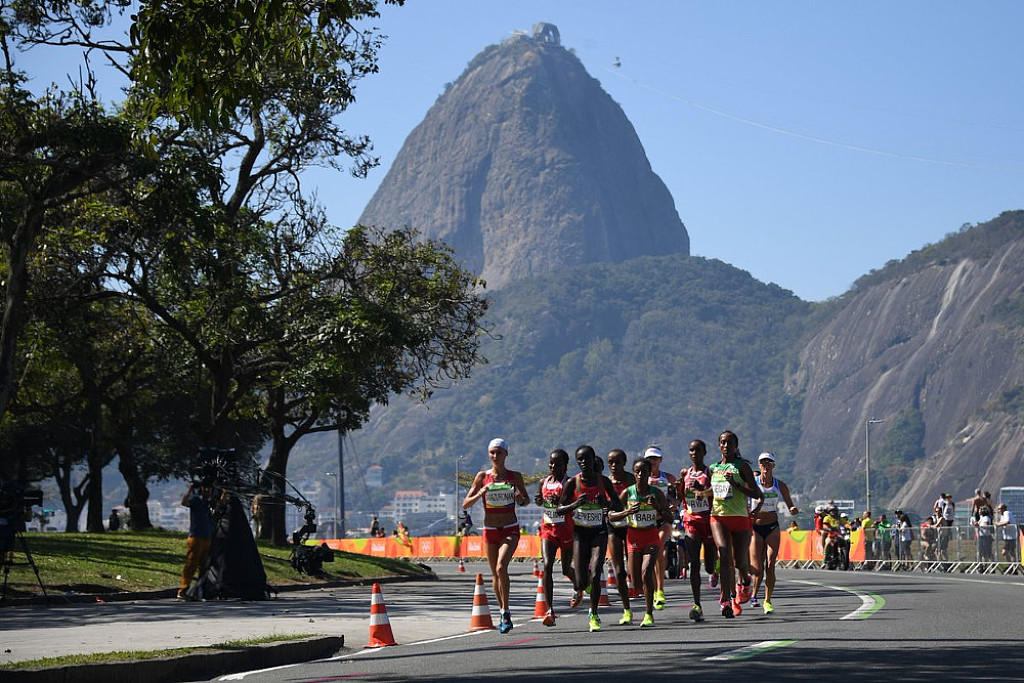Running News Daily
Running News Daily is edited by Bob Anderson in Mountain View, California USA and team in Thika Kenya, La Piedad Mexico, Bend Oregon, Chandler Arizona and Monforte da Beira Portugal. Send your news items to bob@mybestruns.com Advertising opportunities available. Over one million readers and growing. Train the Kenyan Way at KATA Running Retreat Kenya. (Kenyan Athletics Training Academy) in Thika Kenya. Opening in june 2024 KATA Running retreat Portugal. Learn more about Bob Anderson, MBR publisher and KATA director/owner, take a look at A Long Run the movie covering Bob's 50 race challenge.
Index to Daily Posts · Sign Up For Updates · Run The World Feed
In-person race set for September 26 in Peterborough, Ont.
The 2020 Ankle Breaker XC Run will see 200 participants run 2.5K and 5K races
As track season fades into cross-country season, we will hopefully see some in-person races pop up around Canada for the general public to enter. The bulk of the cross-country season is still a few weeks away, but a race that’s coming up quickly is the Ankle Breaker XC Run Peterborough, Ont. The event will take place at Peterborough’s Nicholls Oval Park on September 26, and 200 people will be permitted to race in either 2.5K or 5K options. The groups will be split into waves to comply with provincial health and safety guidelines, and there will be other COVID-19 protocols in effect on race day as well. Registration is now open for the run, and with limited spots in the field, it’s apt to fill up quickly.


Race organizers have worked closely with Peterborough Public Health and the City of Peterborough to set the event’s COVID-19 protocols. A key element of this is of course social distancing. The provincial government has a 100-person limit on social gatherings, which is why there will be two waves of 100 people run three hours apart. The first wave actually consists of two races: a 5K for runners who can run sub-23 minutes for the distance and a 2.5K run for kids. The 5K will kick off at 9:30 a.m. and be limited to 60 people, and 40 people (including kids and any parents who want to run with their children) will be permitted to start the 2.5K.
At 12:30 p.m., well after those races are finished, the second 5K of the day will begin. This race is reserved for runners with expected 5K times of 23 minutes or more. Since this will be the only race held in the afternoon, this field is open to 100 runners. For the two 5K races, no spectators will be allowed, and only one parent or guardian is allowed onsite per child in the 2.5K.
The races will be very basic, with no aid stations in the registration area or on the course, no post-race food or refreshments and no awards. Racers will receive ankle timing chips, which will be the only interaction (conducted two metres apart) that runners can expect to have with event staff and volunteers.
A lot of thought and care was always required when organizing races, but even more is needed for any in-person events in the world of COVID-19. Running in limited fields with next to no spectators present isn’t what we’re all used to, but any in-person race is better than none, and this will likely be the way things remain for the foreseeable future.
To learn more about the Ankle Breaker XC Run, click here.
(09/20/2020) ⚡AMPby Running Magazine
The 10th Mattoni Ústà nad Labem Half Marathon succeeded the pandemic challenge
Over two thousand runners flooded the streets of Ústí nad Labem during the jubilee 10th year of the Mattoni Half 10th year of the Mattoni Half Marathon. The event showed that even in difficult times caused by the coronavirus pandemic, it is worth fighting. The race was won by the Ukrainian runner Ivan-Bohdan Horodyskyi in men’s category, and dominated by a German in women’s. Kristina Hendel. Vít Pavlišta and Marcela Joglová confirmed this year's half-marathon dominance among the Czechs.
The 10th Mattoni Ústí nad Labem Half Marathon was organized in difficult conditions. Masks were worn everywhere except on the course itself; runners had to deal with limited refreshment stations. "It was not easy at all, but thanks to the cooperation with the region, the city, hygiene offices and everyone else, we succeeded. I am proud that Ústí could see a great race and I hope that we have inspired organizers of mass participation races in our country and in the world“, says Carlo Capalbo, President of the RunCzech Organizing Committee.
Ukrainian runner Ivan-Bohdan Horodyskyi finished in first place with a time of 1:03:54, Italian Said El Otmani (1:04:00) finished second, and Emmanuel Roudolff-Levisse (1:04:35) third. The best Czech Vít Pavlišta finished close behind him in a personal record of 1:04:48.
Thanks to Marcela Joglová and Eva Vrabcová Nývltová, the Czech flag appeared at the head of the women's race until halfway through, but in the end the European rivals were stronger. Gold is taken by Kristina Hendel from Germany (1:13:29), silver by Nuria Lugueros Diaz from Spain (1:14:17) and bronze by Italian Fatna Maraqui (1:14:34).
The fastest Czech woman Marcela Joglová finished in the overall fourth position in the time of 1:15:12. Eva Vrabcová Nývltová took second place during the big half marathon return. "Five kilometers of run, then next fifteen a struggle, and last two almost a walk. It was really hard," Eva evaluated her time 1:18:21 and added: "Some speed remained there, I have to pick up the pace again and not burn it next time. It is difficult with breastfeeding, my heartbeats jump a lot, and it’s like up and down.”
Part of the Saturday event was the traditional Spolchemie Czech Championship in Handbike and also a dm Family Run with 1113 participants. “Organizing an event seems to be a small miracle these days. Due to the special circumstances, we feel we are doing double more work in double less time. Practically, we are adding whole one more chapter of Covid 19 prevention in our organizing manuals”, says tiredly but obviously satisfied Tomaš Coufal, the director of this race.
However, even in this difficult times, RunCzech celebrated the 10th anniversary of the race with a beautiful present for all runners. A 10th anniversary jubillee high quality adidas running t-shirt.
Women
Women ranking | Name | Result | Nationality
1 | Hendel Kristina | 1:13:29 | GER
2 | Lugueros Diaz Nuria | 1:14:17 | ESP
3 | Maraoui Fatna | 1:14:34 | ITA
4 | Joglová Marcela | 1:15:12 | CZE
5 | Korneenko Ekaterina | 1:16:35 | BLR
6 | Vrabcová Nývltová Eva | 1:18:21 | CZE
7 | Hrochová Tereza | 1:19:45 | CZE
8 | Sekyrová Ivana | 1:21:42 | CZE
9 | Jíšová Barbora | 1:23:06 | CZE
10 | Davidová Lucie | 1:25:04 | CZE
Men
Men ranking | Name | Result | Nationality
1 | Horodyskyi Bohdan-Ivan | 1:03:54 | UKR
2 | El Otmani Said | 1:04:00 | ITA
3 | Roudolff-Levisse Emmanuel | 1:04:35 | FRA
4 | Pavlišta Vít | 1:04:48 | CZE
5 | Habz Azeddine | 1:04:53 | FRA
6 | Jimenez Alejandro | 1:05:06 | ESP
7 | Zemaník Jakub | 1:07:27 | CZE
8 | Vejmelka Daniel | 1:09:56 | CZE
9 | Sansom Ruben | 1:10:00 | NED
10 | HomoláÄ JiÅ™í | 1:11:47 | CZE
(09/19/2020) ⚡AMPPresident Uhuru Kenyatta's gift, Kipchoge library project
With the London Marathon just over two weeks away, defending champion and world record holder Eliud Kipchoge maintained his tight programme on Wednesday, making time for the ground-breaking ceremony for a library project that he inspired.
He was joined at the ceremony at Kapsisiywa Secondary School in his home Nandi County by Education Cabinet Secretary George Magoha.

The project has been funded by President Uhuru Kenyatta.
The marathon great narrated that at a meeting in Mombasa last year President Kenyatta asked him what gift he wanted after his exploits on the world stage, and he settled for a communal library.

“I'm here to witness one of my dreams come true. My vision to transform my community has come true courtesy of the President.
“I appreciate the President's gesture which confirms to me that, indeed, no human is limited," said an elated Kipchoge who was accompanied by his family.
Kipchoge said it came as a big surprise to him when the President made the offer.
“The answer is what we have here today,” Kipchoge said, noting that a library is crucial and that reading had expanded his thinking and outlook in life.
“Books have been my loyal friend. Books are the perfect mode to travel out of any locality through. Books have helped me navigate through many challenges in life. I'm happy the President will be with us in every step of the way in this project,” added Kipchoge, with his usual touch of philosophy.
President Kenyatta last year issued a directive for the construction of a multi-million library at Kipchoge’s home village of Kapsisiywa.
“Eliud Kipchoge who is alive and here with us has also inspired the world that no human effort is futile, that we can dream and make our dreams a possibility. He has demonstrated that through integrity, hard work and commitment to excellence nothing is out of reach,” said the President when he honoured the athlete last year after his successful exploits in Austria when he broke the two-hour barrier for the marathon.
President Kenyatta decorated Kipchoge with the Elder of the Order of the Golden Heart (E.G.H) award, lauding his work in inspiring future generations to achieve the seemingly impossible.
Magoha, accompanied by Ministry officials, on November 22 last year delivered the offer letter from the President to the famous athlete as well as the Kapsisiywa Secondary School principal.
Kipchoge made history last year after becoming the first man to run a marathon in under two hours – clocking one hour, 59 minutes and 40 seconds at the “Ineos 1:59 Challenge” staged in Vienna, Austria.
(09/19/2020) ⚡AMPby Wycliff Kipsang & Tom Matoke
Registration is now open for local and international participants in this year’s Virtual Reggae Marathon, Half Marathon and 10K
Participants are invited to register via www.reggaemarathon.com and choose their virtual event. Registration remains open until November 30 and runners/walkers can complete their choice of event between November 14 to December 6.

“The virtual event is a first for Reggae Marathon, Half Marathon and 10K now in its 20th year. We decided to go virtual so as not to disappoint the thousands of local and international participants who were looking forward to arriving in Negril for the event this year,” said race director Alfred Francis.

Under the new arrangement, each participant anywhere in the world will be able to run their own individual race between November 14 and December 6 and submit their times. Each runner or walker will receive a digital finisher certificate and runner’s bib, while post-race, each will get a medal, signature Reggae Marathon T-shirt and branded tote bag.
Francis also disclosed that going forward the Virtual Reggae Marathon will be held along with the physical race. “We are excited about this new feature and the possibilities in store for our charity partner, the Heart Foundation of Jamaica,” he noted.
Organisers say that since its inception in 2001, the Reggae Marathon has had 24,890 participants, with 13,169, or 53 per cent, being entries from over 40 countries.
(09/19/2020) ⚡AMPReggae Marathon
The Reggae Marathon & Half Marathon is Jamaica’s premier International Marathon Event. Marathoners, sports enthusiasts as well as beginners, converge in Negril, Jamaica’s capital of casual, for a fun event characterized by good vibes and lots of Reggae music. Enthusiastic supporters come out along the looped, internationally certified course to support participants. Meanwhile, hard working volunteers offer uniquely packaged water...
more...Runners sponsored by smaller companies might be in a better position than those who are signed by major brands
Earlier this week, the Swiss running shoe company On announced that it was starting an elite training group in Boulder, Colorado, called the On Athletics Club. It’s safe to say that this doesn’t seem like the most auspicious time to invest in professional running. Even though the Diamond League—the world’s premier track and field competition circuit—is scheduled to begin an abridged summer season on Friday, this year has seen an unprecedented number of race cancellations and it’s difficult to predict when the bleeding will stop.
International Olympic Committee President Thomas Bach has already gone on record saying that the Tokyo Games, which have been postponed to summer 2021, will not be delayed a second time. If they can’t be staged next August, the Olympics will be canceled outright, thus depriving track athletes of their quadrennial moment in the sun.

According to Steve DeKoker, On’s Global Sports Marketing Manager, the company has long been looking to develop an elite running team and the Boulder-based group represents the most significant move in that direction to date. For now, the On Athletics Club consists of eight runners, all of whom are in their 20s and were standout NCAA athletes (the University of Colorado’s Joe Klecker and the University of Wisconsin’s Alicia Monson are the headliners).
Recently retired Olympian Dathan Ritzenhein will act as coach. It has been disclosed that these athletes will be signing multi-year deals with no reduction clauses (i.e. performance quotas)—a risky move, perhaps, but one that On might currently be well-positioned to make thanks to a potential pandemic-inspired uptick in recreational running.

“Running is kind of experiencing this second boom,” DeKoker told Letsrun.com. “We’ve got all these folks at home who are struggling with different issues, but running is a viable activity for them. Whereas if you’re Nike, and you’re in 50 different verticals, running might be a positive one, but you’ve got a bunch of other sports that are hemorrhaging right now.”
There has been some evidence to bear this out. Nike has reported a 38 percent decline in total revenue through May 31. More specifically, last week, the market research company NPD published an article noting that prominent brands (Nike, Adidas, Under Armour) had an overall sales decline in athletic footwear in the first half of 2020, while several running-focused shoe companies had fared conspicuously well.
Hoka One One and On, in particular, saw year-over-year sales increases of 75 and over 50 percent, respectively. (An On representative has confirmed this, and added that the brand had recorded its highest ever sales month in June 2020.) Matt Taylor, the co-founder and CEO of the independent running apparel brand Tracksmith, told me that “there’s been a noticeable uptick in people running over the last few months,” and that Tracksmith was “seeing this trend reflected” in its business.
While the running industry will never be entirely insulated from the state of the overall economy, there is some logic to the notion that the sport is well-suited to weather a financial downturn. To use DeKoker’s term, running is a “viable activity” for many people because it is relatively cheap, accessible, and offers both physical and mental health benefits during times of uncertainty.
The most recent running boom occurred during the years immediately following the Great Recession; starting around 2008, there was a continual increase in running event participation, culminating in 2013, when a record 19 million runners took part in U.S. road races.
Of course, from a running perspective, one of the uniquely cruel aspects of the COVID-19 recession is that the pandemic has precluded the staging of most mass participation events. The New York Road Runners, the largest non-profit running events company in the United States, laid off eleven percent of its employees and furloughed an additional 28 percent in July. Hence, any discussion about how the pandemic might end up “benefiting” the running industry in shoe or apparel sales must be weighed against this freeze of running events.
For professional runners, meanwhile, the cancellation of big-ticket races signifies a loss in prospective appearance fees and prize money. Some athletes might also be contractually obligated to run a pre-set number of races, which, needless to say, has not been so easy in 2020. That’s why this has been the summer of intrasquad competitions, in which training partners take part in de facto time trials that have been spruced up just enough to qualify as official meets. While some of these events have yielded impressive performances—most notably Shelby Houlihan, of the Bowerman Track Club, breaking her own American record in the 5,000-meters—there have also been farcical scenarios where world-class athletes phoned it in, presumably so that they can reach their race quotas. (Last week, reigning Olympic 1,500-meter champion Matthew Centrowitz “raced” an 800... and ran 3:08. His personal best in the event is 1:44.)
It’s not a coincidence that the most prominent examples of these sham races have involved Nike athletes. After all, the Oregon-based company sponsors far more runners than any other brand. They have the funds to do it, but casting a wide net might also make it more difficult for Nike to offer elite runners the contractual perks of smaller, running-focused companies like Oiselle, On, and, recently, Tracksmith. For now, reduction clauses still seem to be the norm for the typical Nike track athlete. (A Nike spokesperson told me that the company does not comment on athlete contracts.)
Hawi Keflezighi, an agent whose clients include his brother Meb Keflezighi and recent U.S. Olympic Trials Marathon champion Aliphine Tuliamuk, agreed that this was likely to be the case. “I think Nike deserves credit for all the athletes and events that they sponsor, but at the same time, within that business model, if you have a lot of athletes, you can’t be as flexible as when you only have five or ten athletes on your roster,” Keflezighi, whose brother was a Nike athlete for years before signing with Skechers in 2011, told me. He added that, while it’s typical for companies to reassess which athletes they want to sponsor at the end of an Olympic cycle, the current uncertainty surrounding the fate of the Games, and looming recession, mean that conditions for athletes are even more cutthroat than usual.
“I think the bigger brands definitely have tougher decisions to make, just because they have a bigger investment overall,” Keflezighi says. “The athletes with those brands, especially if they are not medal contenders or in a great position to make the US Olympic team—under this environment, those athletes’ contracts are a little bit more vulnerable. If you have a smaller roster of athletes, you might be able to say, ‘Hey, you know what? Let me give that athlete an extra year or two.”
DeKoker echoed this sentiment. “Obviously, performance is going to be a key element, but it’s not the only element with On,” he says. “I do think that, at some of these other companies, it’s much more of a numbers game and unfortunately some athletes are going to be on the losing end of that.”
What will the “numbers game” look like in a worst case scenario where next year’s Olympics ultimately do get canceled? With any luck, we won’t get to find out.
(09/19/2020) ⚡AMPby Outside Online
The Enduring Appeal of the Fastest Known Time
Race cancellations have produced an uptick in FKTs, but the obsession predates the pandemic
Last week, there was big news in the world of “fell running,” a sport that can perhaps be described as the soggier, hillier, and more misery-inducing cousin of cross-country. Great Britain’s Beth Pascall set a new women’s record for the Bob Graham Round, the legendary 66-mile loop in England’s Lake District, which includes roughly 27,000 feet of elevation gain. Pascall completed the route in a remarkable 14 hours and 34 minutes. When she returned to Moot Hall, the Round’s start and finish point in the village of Keswick, a waiter emerged from a local pub to present her with a celebratory pint. Three cheers for Cumbrian hospitality.

Like the rest of humanity, Pascall had originally intended to spend the summer of 2020 doing something else. In her case, she’d planned on contesting several high-profile races on the ultra circuit, including UTMB and Western States—events where she’d previously finished in the top five. That was before the coronavirus pandemic led to the cancellation of every major race under the sun.
“When all the races were canceled back in March, I was like, right, I’m going to do it,” Pascall says. “It didn’t cross my mind to do anything else, to be honest—just because the Bob Graham record is the most prestigious fell running record that exists.”
Needless to say, such solitary bids for glory have seen a rise in popularity in recent months. In a story for FiveThirtyEight, Anna Wiederkehr reported that the website FastestKnownTime.com had recorded nearly four times as many FKTs from runners through the first half of 2020, compared to the same time period in 2019. Last week, Wiederkehr appeared on NPR’s All Things Considered to explain the FKT phenomenon to the program’s slightly incredulous host, Ari Shapiro. “Why do people do it if they don’t get the bibs and the crowds and the glory and all the other things that go along with most sports?” Shapiro asked.
Why do people do it? It’s a reasonable question—especially since the FKT boom has been ongoing for years. One answer is that hardcore FKTers are primarily seeking the respect of their fellow endurance junkies. After all, even the mother of all (American) FKTs—the rim-to-rim-to-rim traverse of the Grand Canyon—is, for the most part, meaningful only within the insular world of ultrarunning.
“It’s a lot easier for someone who isn’t into ultrarunning to know what a good 10K or marathon time is, but with some of these FKTs, it’s kind of in the weeds as far as what the standards are,” says Pete Kostelnick, who set a new FKT for running across the United States after trekking from San Francisco to New York in the summer of 2016. (The mark stands at 42 days, six hours, and 30 minutes, in case you’re looking for ideas on how to spend the rest of your summer.)
“I definitely think that most people who do these FKTs are looking for recognition from their peers, certainly more than from people who don’t really understand the sport,” Kostelnick adds.
For an FKT to be accepted by FastestKnownTime.com, a run has to be verified with a GPS data file and the route has to be significant enough to warrant inclusion. Regarding the latter point, the website states that an FKT should be “notable and distinct enough so that others will be interested in repeating it.” Such phrasing leaves things open to interpretation. One recent entry on the website is Joey Campanelli’s new mark for the northbound route of Nolan’s 14, which involves bagging fourteen 14,000-foot peaks in Colorado’s Sawatch Range in 60 hours or less. (I suppose some people might be interested in repeating that.)
Of course, the sheer number of FKTs (there have already been more than 1,700 new additions to FastestKnownTime.com this year) means the majority of these efforts are probably only going to be significant on a hyperlocal level—think Strava CRs for trailheads. Hence, even for top athletes, the pursuit can sometimes be more of a personal challenge, as opposed to a bid for wider recognition.
“For me, it starts as a private goal,” says ultrarunner YiOu Wang, who recently set an FKT for the 40-mile stretch in the Sierra Nevada known as the Rae Lakes Loop. “I enjoy the process of working towards it, achieving it, and then sharing that achievement with the community.”
This private/public dichotomy suggests a sort of paradox at the heart of FKT culture, one that feels appropriate to our social media–saturated age. On the one hand, part of the appeal of these undertakings is that they project an air of spontaneity and wholesome solitude. At its most idealized, the pursuit of an FKT is a way to commune with nature while testing your physical limits. In theory, you can go out and set an FKT whenever the mood strikes or when the weather is favorable. You don’t need anyone’s approval. Unlike in races, where you’re taking part in a prepackaged, carefully regulated event, the hunt for an FKT can feel refreshingly removed from all the noise.
Sign up for our 10-day email challenge to get moving every single day and kickstart a more active lifestyle.
Enter your email address
This site is protected by reCAPTCHA and the Google Privacy Policy and Terms of Service apply.
But for an FKT to become “official,” the feat ultimately still requires external validation, and here the standards are becoming ever more stringent. FastestKnownTime now requests that runners who are attempting FKTs on famous routes state their intentions in advance, provide real-time tracking, and submit photographic evidence. Pics or it didn’t happen.
In the same way that the process of documenting an experience inevitably changes the nature of that experience, having an FKT as the main impetus for an extended traverse will impose certain constraints. (Right now, some intrepid souls are attempting FKTs on both the Appalachian and Pacific Crest Trails. Power to them. But if you were going to spend weeks trekking in the Sierra or the mountains of Appalachia, wouldn’t you want to take your time?)
When I brought this up to Kostelnick, who averaged 72 miles a day on his cross-country run and hence didn’t have much time to stop and smell the sagebrush, he admitted that, looking back, there was a sense of missed opportunity. “I had a lot of regrets,” he says. “I didn’t really soak in any sights, because I was always either moving, eating, or sleeping.” Such was the extent of his retrospective FOMO that, two years after completing his record-setting run, Kostelnick made another trip on foot, this time from Kenai, Alaska, to Key West, Florida, where he made a point of lingering when he felt so inclined. (The pace was a leisurely 50 miles a day.)
For her part, Wang says this was also a concern during her recent FKT attempt in the Sierra Nevada.
“I thought about that a lot, because it was my first time doing the Rae Lakes Loop and I actually wanted to enjoy it,” Wang says. “But a lot of times when you do an FKT, you don’t really enjoy the trail, because you have to be so focused on beating these times—it’s a difficult balance.” Despite such potential caveats, however, Wang feels that allure of the FKT is likely to persist.
As she told me: “If there’s a route out there, someone is going to try to do it as fast as they can.”
(09/19/2020) ⚡AMPby Outside Online
Does apple cider vinegar actually do anything for your body or gut?
Apple cider vinegar (ACV) has been touted as a holistic cure-all for decades, and it’s as popular as ever in the wellness world. Proponents claim the pantry staple has all sorts of positive benefits: reducing inflammation, slowing down aging, and promoting weight loss, to name a few. And in theory, certain properties of ACV suggest that these claims may have some truth to them. For example, ACV contains B-complex vitamins, which do have anti-inflammatory effects in the body. But the anti-inflammatory properties of these vitamins haven’t been studied in the context of vinegar consumption. That’s the problem with most of the claims people make about ACV—they just haven’t been proven, one way or the other.
ACV also has plenty of antioxidants, and researchers think antioxidants may help reduce chronic disease burden as we age. However, scientific studies on antioxidants have been inconclusive, and there isn’t really any research about ACV’s antioxidants and their effects. When it comes to the gut, it’s possible that the acetic acid in ACV could aid our digestion and thus ease gut issues, particularly as we age and produce less of our own stomach acids. In theory, adding another acid may help achieve the same thing, but whether it actually works is also, as yet, unproven.

However, there are a few evidence-backed, measurable physiological effects, including increased satiety: in a small study from the European Journal of Clinical Nutrition in 2005, participants who supplemented a standard meal with ACV reported feeling more full than those who didn’t. Another randomized controlled trial, in the Journal of Functional Foods from 2018, found that regular supplementation of two tablespoons of ACV daily for three months contributed to modest weight loss of a few pounds when compared to controls. So it seems apple cider might offer a small boost for those interested in weight loss—but that’s not necessarily a health benefit, unless you’re working toward a specific goal that you and your doctor have agreed would be beneficial for you.
ACV has also been shown to offer a small amount of help modulating blood sugar and insulin levels after you eat a meal, but not so reliably that it could replace traditional treatments and medications. A recent meta-analysis in the Journal of Advanced Nursing reported that in studies that collectively evaluated over 300 Type 2 diabetics, ACV supplementation did have beneficial effects on blood-sugar levels. However, most of the individual studies used small sample sizes, and while the results were promising, they were still pretty minimal.
If you’re interested in experimenting with supplementation, it’s safe to take ACV in small doses. Recommendations vary, but an ounce a day diluted in water is a safe place to start. The only notable side effects of overconsumption are an upset stomach and, if you take it undiluted, a sore throat or weaker tooth enamel over time. Just don’t expect a miracle, and remember that if something sounds too good to be true, it probably is.
I’m obsessed with my Theragun and generally any type of self-myofascial release, like vibrating foam rollers. Is it possible to overuse tools like this? The Theragun feels fantastic, but it’s also pretty aggressive.
From Theraguns to Hypervolts, it seems like everyone (including myself) nowadays is raving about the benefits of self-percussion therapy devices. Manufacturers claim that these devices accelerate recovery and muscle repair, improve blood and lymphatic flow, and relieve stiffness when regularly used before and after exercise. While some of these claims are likely overblown, there is some evidence that these devices can alleviate delayed onset muscle soreness—and as long as you aren’t finding that the tool is leaving you achier than you were when you started, you’re probably fine. The key here is to listen to your body, and stop if it starts to feel painful.
Most of the benefits listed above are anecdotal; of the above claims, the only one with scientific evidence behind it is that these devices can reduce soreness following vigorous exercise. A 2014 study in the Journal of Clinical and Diagnostic Research examined delayed onset muscle soreness. One group received vibration therapy after exercise, and another group had regular massage therapy. Those who received vibration therapy had a greater reduction in pain 48 hours after an intense workout compared to the massage-therapy group.
When using a percussive device, you can expect to feel some transient, mild soreness over the area being massaged, but you should use common sense. If you are percussing over areas that result in significant and increasing pain of a different character than simple muscle soreness, back off. These devices should only be used on muscle—other sensitive areas, such as an inflamed tendon or bursa, may benefit from a mild manual massage but should not be aggressively percussed. Percussing bone, in addition to being extremely painful, has no benefit. With these considerations in mind, using a Theragun on tired muscles may fast-track your post-workout recovery, and as long as you pay attention to your body, there is no real risk of overuse or injury.
(09/19/2020) ⚡AMPby Outside On Line
After more than two decades, John Capriotti is stepping down as leader of Nike’s track and field sports marketing group
“John is going into the consulting business,” said Steve Miller, a former Nike executive and the man who hired Capriotti at the company.
The fiery former track coach still worked for the sneaker giant as of Friday. But he is leaning toward a consulting deal that would make Nike one of his clients, according to a second source close to Capriotti.

News of the change had the track and field world buzzing on Friday.
“It’s kind of unbelievable,” said a third source, a prominent sports agent. “He’s been in that position for the entire 21 years I’ve been around track and field. He’s been the single most influential person in the sport.”
Neither Capriotti nor Nike could immediately be reached for comment.
Capriotti’s decision comes as Nike is cutting costs and laying off employees. The company lost about $790 million last quarter.
Since Nike brought in John Donahoe as its new CEO and chairman in January, there has been speculation about the ramifications for the company’s sports marketing arm, and for its track and field operations in particular. Donahoe’s athletic background is unknown. But outsiders speculate that the longtime technology executive does not share the passion for track and field of his predecessors Phil Knight and Mark Parker.
Under Capriotti’s watch, Nike solidified its position as the sport’s superpower. It hired more track athletes to endorsement contracts than any other sponsor. It also bankrolled USA Track & Field, the sport’s governing body in this country, signing a sponsorship in 2014 worth more than $400 million.
Nike sponsored three different teams of elite runners, all of them based in Oregon. Its audacious goal was to make American runners once again competitive with the rest of the world.
Capriotti and Nike also helped secure Eugene’s position as one of the world capitals of the sport. He was such a fixture at Hayward Field that his customary spot in the grandstands became known as Cap’s Corner.
The stunning decision to award the 2021 track and field world championships to Eugene came in part because of the enthusiastic support of Knight and Nike. The coronavirus pandemic has delayed the running of those championships in Eugene until 2022.
There was also plenty of controversy. Alberto Salazar was Nike’s superstar coach for the Nike Oregon Project. But Salazar was dogged for years by allegations that he encouraged his athletes to use banned substances. He was banned from the sport for four years “for orchestrating and facilitating prohibited doping conduct.”
Nike sided with Salazar and continued to back him even after the ban, which Salazar is appealing.
(09/19/2020) ⚡AMPby Oregon Live
Strong European Field for Mattoni Ústà nad Labem Half-Marathon, celebrating its tenth edition on Saturday
This weekend's Mattoni Ústí Half-Marathon in the north of the Czech Republic near the German border will feature a strong European elite field, organizers announced today. The race celebrates its tenth edition on Saturday.

The women's field includes Eva Vrabcová Nývltová, the 2018 European Championships bronze medalist in the marathon, who is coming back to competition after giving birth to a baby girl, Adela, in 2019.

Unlike many road races which were postponed this year, the Mattoni Ústí nad Labem Half-Marathon is being held on its normal date. Last year's race had 2351 finishers, but this year should have fewer finishers due to COVID restrictions. The course records are Men, 59:14, by Kenya's Barselius Kipyego in 2017 and 1:07:17 by Peres Jepchirchir, also from Kenya, in 2015.
The elite start lists are as follows.
MEN -Said El Otmani (ITA) 1:01:31 (Verbania, 2019) Alejandro Jimenez (ESP) 1:03:05 (Valencia, 2019) Jirí Homolác (CZE) 1:03:23 (Prague, 2017) Alberto Sanchez Pinilla (ESP) 1:03:39 (Puerto de Sagunto, 2020) Bohdan-Ivan Horodyskyi (UKR) 1:04:43 (Kovel, 2019) Vít Pavlišta (CZE) 1:05:09 (Prague, 2016) Emmanuel Roudolff-Levisse (FRA) 1:05:22 (Lille, 2019) Robert Míc (CZE) 1:07:23 (Ústí nad Labem, 2017) Azeddine Habz (FRA) debut Jakub Zemaník (CZE) debut Sebastian Hendel (GER) pacemaker for women’s race
WOMEN -Fatma Maraoui (ITA) 1:10:08 (Cremona, 2011) Eva Vrabcová Nývltová (CZE) 1:11:01 (Prague, 2018) Ekaterina Korneenko (BLR) 1:12:45 (Poznan, 2019) Marcela Joglová (CZE) 1:13:46 (Kostenice, 2020) Kristina Hendel (GER) 1:14:02 (Berlín, 2019) Ivana Sekyrová (CZE) 1:14:06 (Pardubice, 2013) Cecilia Mobuchon (FRA) 1:14:16 (Sevilla, 2020) Nuria Lugueros Diaz (ESP) 1:15:11 (Madrid, 2019) Tereza Hrochová (CZE) 1:15:59 (Kostenice, 2020) Barbora Jíšová (CZE) 1:18:51 (Prague, 2018) Tereza Jagošová (CZE) 1:25:08 (Olomouc, 2018)
(09/18/2020) ⚡AMPMattoni Usti nad Labem Half Marathon
Enjoy the urban run at the Ústí Half Marathon. The course leads alongside the river Elbe opening a view to impressive rock formations, Strekov castle and then crossing the area of a chemical factory which is a perfect example of industrial architecture of the First Republic. The Ústí nad Labem Half Marathon is an annual half marathon race which takes...
more...Lydia Njeri Mathathi is among the pace-makers for next month’s London Marathon
First Lady’s Half Marathon champion Lydia Njeri Mathathi is among the pace-makers for next month’s London Marathon.
Yes, you guessed it! She is a sister of the famous distance running star, Martin Irungu Mathathi, bronze medallist at both the 2006 World Cross Country Championships (Fukuoka) and in the 10,000 metres at the 2007 World Championships (Osaka).

Lydia will be playing “rabbit” in a major race for the second time and has been delegated the responsibility to pace for the second group of athletes.

The time target for this group is two hours and 23 minutes.
Apart from pacing various athletes, Lydia is also an accomplished athlete in her own right, and has competed in various races on the road, catching the eye of race directors.We caught up with her at Kipchoge Keino Stadium in Eldoret, Uasin Gishu County, last week where she was sharpening her skills in a speed work session.
Just like other athletes across the country, Lydia was forced to retreat from serious training when the coronavirus struck forcing the government to ban group training.
She said, that forced her to continue training alone due to the rules from the government but she is happy the country is slowly opening up and she is up to the task ahead.
“It has been a long journey in training because of the virus which sent us back to the drawing board where we missed the whole season of athletics,” said the younger Mathathi.
Lydia bagged victory in First Lady’s Half Marathon in Nairobi (one hour, 12 minutes and three seconds) with Londiani-based Emily Chebet coming in second in1:12:30 and Pacifica Jeptoo closing the podium in 1:12:44.
This was after disappointment from the Paris Half Marathon where they were forced to fly back home after the race was cancelled due to coronavirus.
"We flew all the way to Paris only for the organisers to cancel the race in the last minute due to the coronavirus pandemic which had started spreading across the world. I’m happy because I managed to bag victory in the First Lady’s Half Marathon and since then we have just been training at home,” she said.
“I used to participate in various races in school and this was because my brother was an athlete and I wanted to be like him. I’m happy because my brother has been of great help in my career and I will be going for nothing but the best,” said Lydia, who has a personal best of 67:51 in the half marathon.
(09/18/2020) ⚡AMPby Bernard Rotich
TCS London Marathon
The London Marathon was first run on March 29, 1981 and has been held in the spring of every year since 2010. It is sponsored by Virgin Money and was founded by the former Olympic champion and journalist Chris Brasher and Welsh athlete John Disley. It is organized by Hugh Brasher (son of Chris) as Race Director and Nick Bitel...
more...2021 Vienna City Marathon moves from April into September
The Vienna City Marathon is the second major international marathon which has been moved from a spring date of 2021 into the second half of the year. The race is now scheduled for 12 September. This spring organizers had to cancel Austria’s biggest one day sporting event due to the corona virus pandemic. Because of the ongoing uncertainties during the pandemic there was too much risk continuing to plan with a race on 18 April 2021, organizers explained. The first major race that was moved from spring into the autumn in 2021 was the London Marathon. The Vienna City Marathon is a World Athletics Gold Label Road Race.
The world is still in a state of upheaval and constant change due to the corona virus pandemic. This especially applies to organizers of major events. That led to the decision to postpone the upcoming Vienna City Marathon from April to 12 September 2021. "In accordance with health experts and those in charge for the City of Vienna, we are convinced that on this date in September we will find an improved overall Covid-19 situation and be able to organize a major marathon in Vienna. We want to hold an event that offers a thrilling experience and inspires the participants and spectators - a race like the one we staged in 2019 or in the years before. Moving it to the second half of 2021 is the more honest answer to the difficult situation and brings more reliability and planning security, also for the participants", reads a statement of the organizers.

"Our goal is to organize the Vienna City Marathon safely but also with a great atmosphere. However, we cannot carry out the extensive conceptual and preparatory work for the marathon under unknown and constantly changing regulations. We want to organize running events and will do so according to the current rules. For our major event, the Vienna City Marathon, however, moving it to September is the more realistic way," says Vienna City Marathon Race Director Wolfgang Konrad.

"I am delighted that the Vienna City Marathon 2021 is planned to take place in an attractive and customary manner. The event mobilizes Vienna and the Viennese population. As a tourist magnet with strong economic effects, the event is of great importance beyond sports and health promotion. It is clear that due to the Covid-19 pandemic, events like the Vienna City Marathon have to cope with great challenges. However, in the light of the Covid-19 pandemic, holding the event in September 2021 offers a clear perspective. We hope that the marathon can be held on this new date on the well-known route, which passes numerous tourist attractions of Vienna," says Vienna’s Mayor Michael Ludwig.
The date of the Vienna City Marathon is usually fixed for several years in advance. "It would not have been feasible to wait and hope for the next few months. We could then have found ourselves in a position urgently trying to find a new date in the autumn of the same year. The move required coordination with the City of Vienna, the police, public authorities and other event organizers in order to keep the course through the entire city and the finish area in the Ringstrasse / Rathausplatz area available for the races and for the set-up work," says Gerhard Wehr, Managing Director of the Vienna City Marathon. He thanked the City of Vienna as well as the sponsors and partners for their support and cooperation.
"We hope that the current circumstances and regulations will continue to allow running events to take place. We look forward to every event that can go ahead. This is what our heart beats for, and this is what we will continue to do with all our commitment," Vienna organizers announced. Online entry for the Vienna City Marathon 2021 will start in autumn at: www.vienna-marathon.com
(09/18/2020) ⚡AMPVienna City Marathon
More than 41,000 runners from over 110 nations take part in the Vienna City Marathon, cheered on by hundreds of thousands of spectators. From the start at UN City to the magnificent finish on the Heldenplatz, the excitement will never miss a beat. In recent years the Vienna City Marathon has succeeded in creating a unique position as a marathon...
more...Epic clash at London Marathon this year, but with lower prize money
Top athletes will earn less in this year's London Marathon as effects of Covid-19 continue to hit the sports world.
Organisers of the October 4 race say the prize money has been cut by nearly half of what was offered last year.

With only 17 days to the 40th edition of the London Marathon, the announcement comes as a shocker for marathoners who are just returning to the sport after months of heavy lockdowns.

Interestingly, for the first time there will be a separate prize pool for the best performing British athletes for the London clash that will present the scintillating clash between the world’s fastest marathoners - Kenya's Eliud Kipchoge and Ethiopia's Kenenisa Bekele.
The elite men’s race will see one of the most eagerly anticipated clashes in marathon history with Kipchoge going head-to-head with Bekele, the man who came within two seconds of his world record last year in Berlin.
(09/18/2020) ⚡AMP
by Stephen Rutto
TCS London Marathon
The London Marathon was first run on March 29, 1981 and has been held in the spring of every year since 2010. It is sponsored by Virgin Money and was founded by the former Olympic champion and journalist Chris Brasher and Welsh athlete John Disley. It is organized by Hugh Brasher (son of Chris) as Race Director and Nick Bitel...
more...A French court sentenced former IAAF president Lamine Diack to 2 years in prison
A French court found 87-year-old Lamine Diack guilty on multiple counts, but he does have the right to appeal.
Former IAAF (now World Athletics) president Lamine Diack has been found guilty of corruption and breach of trust by a French court. Diack was at the centre of multiple doping coverups involving Russian athletes, and he reportedly received millions of dollars to help guilty athletes avoid convictions. At the 87-year-old Diack’s trial in June, prosecutors requested that he be sentenced to four years in prison along with a fine, but he got off with a lighter sentence of just two years, plus a fine of 500,000 euros (C$782,000). Diack was president of the IAAF from 1999 to 2015.

As reported by the Associated Press, the trial’s chief judge, Rose-Marie Hunault, outlined Diack’s involvement in the Russian doping scandal, for which he was paid close to C$5 million. “The money was paid in exchange for a program of ‘full protection,’” Hunault said, which allowed guilty athletes “purely and simply to escape sanctions.”

Diack was first charged in 2015, and he has been under house arrest in France ever since. He was originally charged for corruption and money laundering, although the French court found him not guilty on the latter charge. While Diack has been handed a sentence, he still has the right to an appeal.
Diack’s son, Papa Massata Diack, was also sentenced to prison and fined on Wednesday, although he was not present in court. He worked as a marketing consultant for the IAAF while his father was head of the organization, and Hunault said he received almost C$20 million from TV deals and other contracts, which was then laundered through other companies.
The younger Diack has stayed in Senegal throughout the trial, and while French authorities have requested he be extradited so he can be properly sentenced, Senegalese officials have refused to do so. While he was not present on Wednesday, the court still sentenced him to five years in prison and handed him a fine of 1 million euros (C$1.5 million).
(09/17/2020) ⚡AMPby Ben Snider-McGrath
Pandemic cancels Lake Tahoe marathon
Eager runners registered to participate in this year’s Lake Tahoe Marathon will have to wait until 2021 to hear the starting gun go off: the event is now cancelled, South Tahoe Now reported.
“The odds of being able to have the 25th Lake Tahoe Marathon this year on Oct 9-11th have dropped to about 1 percent,” race director Les Wright wrote in a letter to participants. “I spoke to the South Lake Tahoe City Council on Zoom at the end of their meeting in the Public Comment session this afternoon. No action can take place during this time.”
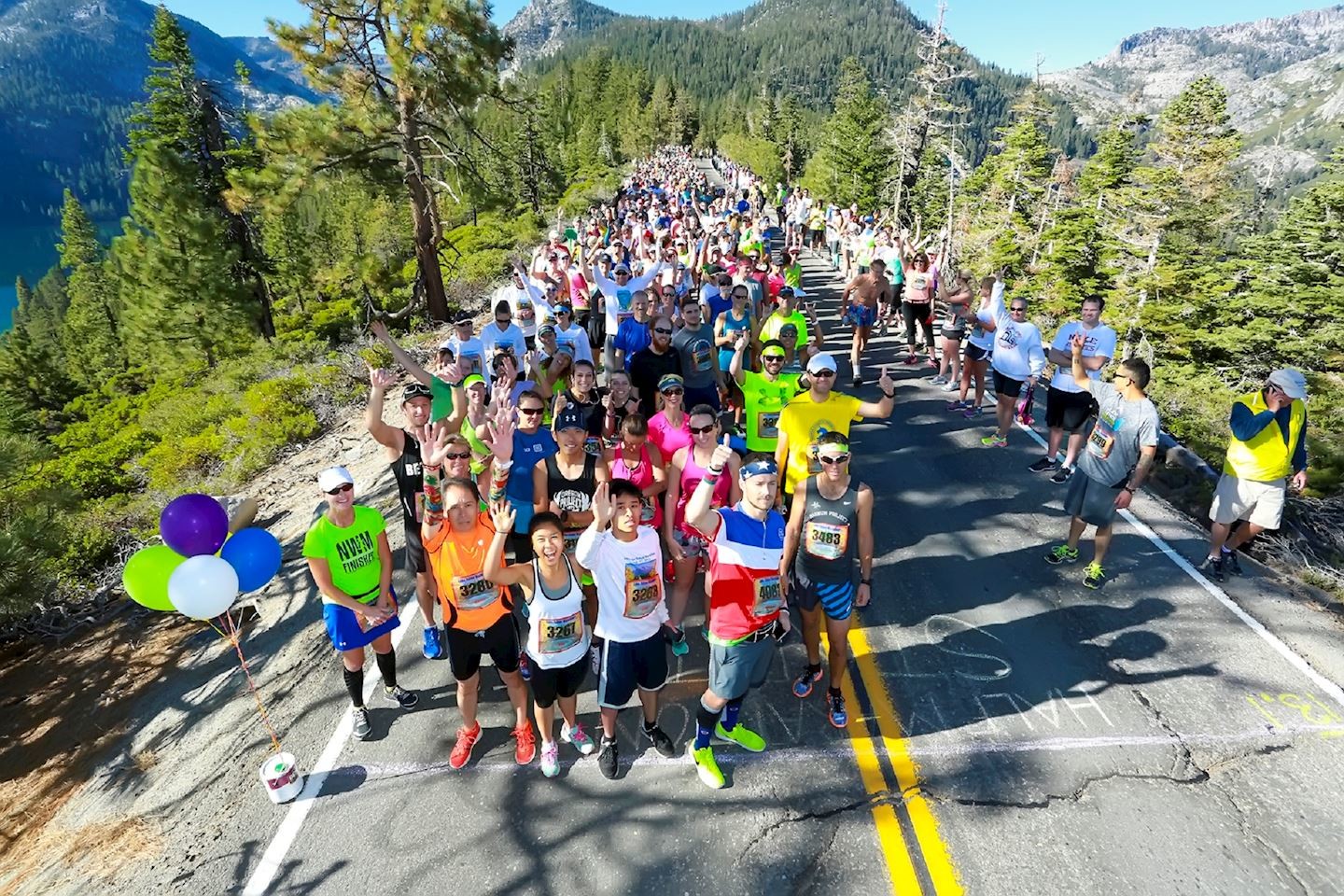
Originally, the 26th marathon was scheduled to take place October 9-11. It's now been moved to October 8-11 in 2021.
Wright went on to say that “CA is on fire right now” and that although he hopes the fires will be over by October the marathon dates this year, he thinks there is “a good chance the Lake Tahoe Basin will still be smoky then as well.”

Despite COVID-19 and wildfires, Wright thinks people will still show up and run regardless.“If I can help you with running on your own, I will be glad to give you advice," he said. "Meanwhile, wear your mask, social distance, and keep running when you can.”
Organizers around the world have been forced to cancel marathons as the COVID-19 pandemic spread across oceans and continents. Amongst the casualties: the New York marathon, the Boston marathon and the Berlin marathon.
(09/17/2020) ⚡AMPby Fernando Martinez
Lake Tahoe Marathon
3-Days of Running: Tahoe Triple 3 x 26.2M Tahoe Trifecta 3 x 13.1M Friday: Lakeside Marathon & Nevada Half Saturday: Cal Neva Marathon & Carnelian Bay Half Sunday: Lake Tahoe Marathon, Emerald Bay Half, 16.4 miler, 10K, 5K 4-Person Marathon Relay, 72 Mile Midnight Express Ultra, Kids Pumpkin Runs....
more...Why young Kenyan Sandra Chebet cannot wait for London Marathon?
It’s baffling that, at just 22 years of age, Sandrafelis Chebet has fallen in love with road running.
Ideally, one would expect her to gain some track experience from the middle distance to the 10,000 meters before hitting the asphalt.

The dearth of Kenyan talent in the 5,000 and 10,000 meters, with just Hellen Obiri to bank on, means Kenyan coaches needed to have enticed the likes of Chebet to work on the track, hoping to stop the potentially dangerous streak by Dutchwoman Sifan Hassan that could threaten Kenya’s gold medal hopes at the Tokyo Olympics next year.
Nonetheless, the 2015 World Under-18 Championships silver medalist in the 2,000 meters steeplechase hopes that her enlisting to pace the women’s lead group at next month’s London Marathon will motivate her to bigger things.

Chebet has been tasked with pacing for the lead group of women in London who include world record holder and defending champion Brigid Kosgei, world champion Ruth Chepng’etich, 2018 champion Vivian Cheruiyot, Frankfurt Marathon champion Valary Aiyabei and debutant Edith Chelimo.
Nation Sport caught up with Chebet at Lemotit Athletics Camp in Londiani, Kericho County, where she said her featuring in a major marathon will help improve her performance.
“I’m lucky to have been selected as one of the ‘rabbits’ who will be pacing for the lead group in London,” she said.
“It’s a tough task, but I will do my best to make sure I deliver good results,” said Chebet who is under the Italy-based Rosa Associati management, the same stable as Kosgei and Chepng’etich.
Chebet admitted that when the coronavirus struck, everything came to a standstill and with the closure of training camps, she decided to continue her training following the guidelines from the ministry of health of social distancing.
“It was tough training in a group of three or less but I’m happy because I was not discouraged knowing that the virus will be contained and competitions will resume.
“I went on with my training and with the big assignment ahead, I will do what I can to deliver,” she said.
She praised her training partner Beatrice Chebet, who is also the World Cross Country Championships’ junior title holder, for her assistance in speed work session.
“Beatrice has been of great help to me because she has good techniques in finishing which is good for an athlete, and I have been always ready to listen from her,” added Chebet who has a half marathon personal best time of 68:14.
Still only 22, Chebet looks forward to graduating to the full marathon in future and believes that pacing the best athletes in the world in London gives her the much needed drive.
She looks at it as a learning experience.
“I have participated in various half marathon races and by next year, I will be shifting to the full marathon where I want to register my name as one of the best in the distance, but I have to start slowly before becoming a world beater,” she added.
She said her mentors are Kosgei and Cheruiyot who make her work hard as she seeks to venture into marathon races and build up from there.
With silver medals at the World Under-18 Championships (steeplechase, Cali, Colombia), Africa Under-20 Championships (5,000m, 3,000m, Tlemcen, Algeria) and a 3,000m bronze at the Africa Under-20 Championships (3,000m, Addis Ababa), Chebet hopes to graduate to become the golden girl of distance running.
(09/17/2020) ⚡AMPby Bernard Rotich
TCS London Marathon
The London Marathon was first run on March 29, 1981 and has been held in the spring of every year since 2010. It is sponsored by Virgin Money and was founded by the former Olympic champion and journalist Chris Brasher and Welsh athlete John Disley. It is organized by Hugh Brasher (son of Chris) as Race Director and Nick Bitel...
more...The Beirut Marathon Association will host a virtual 5k to bring light to the city after recent tragedy
To support and bring relief to the people of Beirut, who are continuing to struggle after a tragic explosion in August, the Beirut Marathon Association will be hosting a global virtual 5k called Embrace Beirut. All of the proceeds collected from the virtual event will be donated to the Lebanese Red Cross, who is currently providing on-site aid to the victims of the explosion.
“Our hopes from this event are to raise awareness about Beirut amongst international communities and raise funds for its victims,” said May El Khalil, President of the Beirut Marathon Association.

More than 300,000 individuals were severely affected by the explosion. A vast majority of individuals have been displaced and need medical supplies, along with basic hygienic necessities.
“Some have lost their loved ones, many have been severely injured, most were left without proper shelter, and surely all have lost a piece of their hearts,” said El Khalil.

Embrace Beirut is encouraging individuals and other organizations to support by spreading awareness for the virtual event through their own communication outlets and on social media.
“We would like most marathon associations around the world to be aware of this event and to even promote it amongst their loyal participants and audience,” said El Khalil.
The Beirut Marathon Association is partnering with the premier technology provider, haku, to help bring the virtual event to life through haku’s virtual suite of products.
“We are honored to help support the people of Beirut through our partnership with the Beirut Marathon Association and to provide innovative resources to assist in delivering an amazing participant experience throughout the event,” said Carlos Escobar, haku Founder and CEO.
“haku’s reputation and experience with handling registrations for sports events is unprecedented, and we are flattered that they are handling this event,” said El Khalil.
Registration for Embrace Beirut opens on Thursday, September 17th. The event will take place from October 1-8.
(09/17/2020) ⚡AMPBlom Bank Beirut Marathon
On the morning of October 19th 2003, Lebanon witnessed a unique event in its history and hosted its first international Marathon. It all began with a dream that May El Khalil had of bringing the running culture to Lebanon. After surviving a near fatal accident while running, May El Khalil began to actualize her dream: from her hospital bed...
more...Salvador Wirth runs fastest ever Half Marathon for age 13
13-year-old from Annandale, Minn., set a single-age world record on the weekend at the Brookings Half-Marathon in South Dakota. Salvador Wirth stopped the clock in 1:16:11, the fastest half-marathon ever run by someone his age and the second-fastest time on the day.
He wasn’t far off the win, finishing just 28 seconds behind the first-place finisher’s top time of 1:15:43. Wirth ran an average pace of 3:37 per kilometre over the course of the 21.1K race, which was his first official half-marathon.

Wirth didn’t just happen to set the record — he knew the time to beat heading into the race, as his father told The Brookings Register before the event. According to the Association of Road Racing Statisticians database, the previous half-marathon best for a 13-year-old boy was 1:18:53, set by an Australian runner in 2013.
Earlier in the summer, Wirth ran a 1:18:00 in a virtual half-marathon, but since it was not run at a legitimate race on a set course, that of course was not ratifiable as a record. Even so, it gave Wirth confidence that he could top the existing record, which he accomplished handily, smashing the previous world best by well over two minutes.
(09/16/2020) ⚡AMPRunCzech is getting ready for its first half marathon this year in Ústà nad Labem
RunCzech is aligning its activities in accordance with the incoming regulations and we are constantly working on the 10th edition of the Mattoni Ústí nad Labem Half Marathon, which will happen on Saturday, 19th of September.
The race program will include the dm Family Run, the Spolchemie Czech Handbike Championship, and of course the spotlight will be aimed at the main race. Race organisers from all around the world had big ambitions for this year. However, most of the races got cancelled and organisers had to look for other solutions.
Some are organizing races for elite runners only. Others are experimenting with virtual runs or coming up with interesting online challenges. Instead, the Mattoni Ústí nad Labem Half Marathon will be held in full shape - participation will consist of both amateurs and Pro runners from the Czech Republic and other European countries.

RunCzech had to reschedule its races to Autumn, and the Prague races had been cancelled for this year completely. This has motivated the organizing committee to incredible actions. At the beginning of September, the World Record for the women-only half marathon was broken and the male runners contributed to achieve the 5th best time of all times in men’s half marathon.
Now it seems that RunCzech could be one of the few, if not the only organizer in the World that will be able to organize mass participation events as we know them. Everything will be, of course, aligned with the recommendations of the local hygiene station, that is in daily cooperation with the RunCzech team.
A safety protocol has been created, which enables us to host the race, summarizing and communicating to runners all necessary rules. Among other things, it mainly covers the regulations regarding the risk of spreading the virus, the specific hygienic requirements, and the cooperation with healthcare providers.

In agreement with the director of the Hygiene Station of the Ústí region, Dr. Lenka Šimůnková, the representatives of the city and the region and following the Ministry of Health's special regulations, RunCzech prepared the following instructions:
Time of start is changed so that there is larger difference between the races
dm Family Run at 11AM (and possible start in waves)
Handbike race at 1PM (25 participants maximum)
Half Marathon at 3PM (start in waves - first 1000 people at 3PM, next wave starts minutes later)
Technical area will be divided in two sectors monitoring the right amount of people and making sure the two groups never meet before or after the race.
Only healthy runners will participate controlled by runners’ declarations and by preventively measuring their temperature.
Runners will be allowed in the starting corridor for a minimum amount of time. Corridors have been enlarged to secure 2 meters distance between runners.
Runners will be requested to wear masks before and after the race, including in the technical area. The technical area is adjusted to secure a fast way out without any possible delays.
Technical adjustments:
Significant increase of disinfection stations and information signs around the technical and start/finish area.
Usage of safety gloves for transporting refreshments or giving out medals.
Regular disinfection of sanitary equipment (toilets).
Cancellation of foam sponges for refreshment.
Refreshment points served without any physical contact.
No fruits at refreshment stations. Only whole bananas served at the finish.
Sugar and salt served only in full and closed one-use packages.
Changing rooms will be placed outdoor.
Taping services - cancelled
Showers - cancelled
Massages - cancelled
After race party - cancelled
Good luck to everyone and stay safe.
(09/16/2020) ⚡AMPMattoni Usti nad Labem Half Marathon
Enjoy the urban run at the Ústí Half Marathon. The course leads alongside the river Elbe opening a view to impressive rock formations, Strekov castle and then crossing the area of a chemical factory which is a perfect example of industrial architecture of the First Republic. The Ústí nad Labem Half Marathon is an annual half marathon race which takes...
more...Government announced its proposal for anti-coronavirus measures to Compete in Tokyo Olympics
On Sept. 15 the Japanese government announced its proposal for anti-coronavirus measures that would allow non-Japanese athletes wishing to compete at next summer's postponed Tokyo Olympic and Paralympic Games to enter the country. Along with at least five tests for COVID-19 prior to competition, foreign athletes must submit a detailed itinerary of their planned movements within the country and a written oath to abide by the submitted plan.
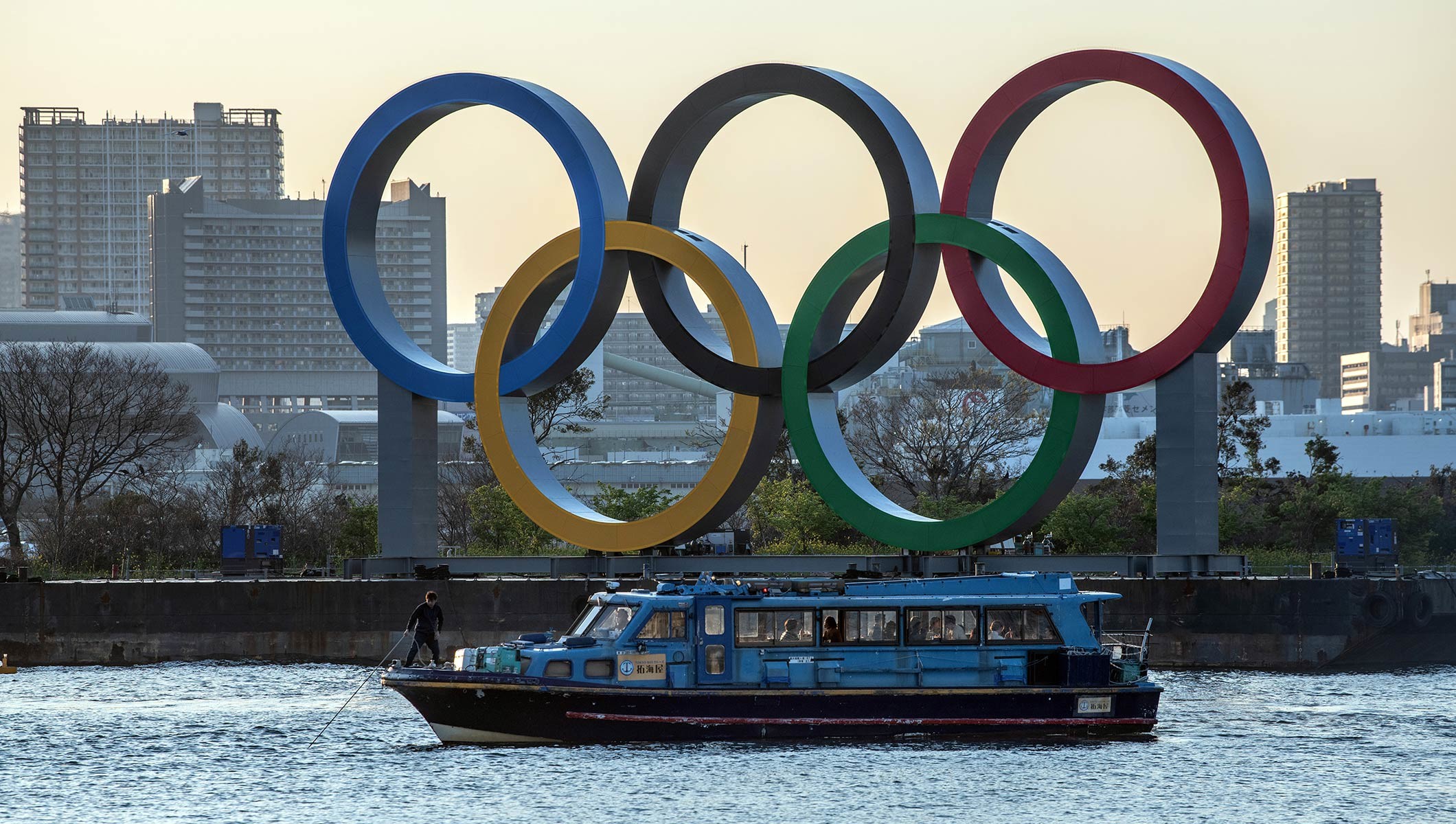

Rules and consequences for dealing with violations are still under discussion. The complete proposal is expected to be presented at a government planning meeting next week.Under the proposal, the first test must be carried out less than 72 hours prior to departure and must return a negative result. Another test must be done at the airport upon arrival in Japan, another when entering the team's pre-Olympic base or host town, another when entering the Athletes' Village, and another before competing. Beyond these five tests, athletes will be regularly tested depending upon the length of their stay in the Athletes' Village.Olympic officials, athlete support personnel and others who may come into contact with athletes will be required to undergo the same protocol.
Athletes who are Japanese citizens residing in Japan will have to undergo at least three tests, the same protocol excluding the tests before and after a flight. The Games organizing committee will have responsibility for testing in the Athletes' Village and at competition venues, with local governments bearing responsibility for testing in host towns.The itinerary and action plan detailing where athletes and personnel will be located and how they will travel is intended to allow them to continue to function during the 14-day self-quarantine period. Each country will have a manager assigned to ensure the system's effectiveness by monitoring compliance and dealing with violations as per the to-be-established regulations.
(09/15/2020) ⚡AMPby Brett Larner
Tokyo 2020 Olympic Games
Fifty-six years after having organized the Olympic Games, the Japanese capital will be hosting a Summer edition for the second time, originally scheduled from July 24 to August 9, 2020, the games were postponed due to coronavirus outbreak, the postponed Tokyo Olympics will be held from July 23 to August 8 in 2021, according to the International Olympic Committee decision. ...
more...The best ways to reduce recovery time between runs
One of the best ways to get exercise without having to commit to heavy equipment or changing gym schedules is running. Running has numerous health benefits. However, it’s easy to feel worn out and sore after a long run. Whether you’re a seasoned runner or are new to the experience, here are some tips to help your body bounce back faster and feel ready for your next run sooner.
Warm Up and Cool Down:

It’s crucial to stretch before and after your workout to avoid extra strain on your muscles. A simple 10-15 minute stretching session before you begin running will prep your body for the upcoming strain. An equal amount of stretching afterwards will help your muscles to relax back to their normal resting state without risking a shock.
An ideal stretch to warm up or cool down will focus on the core muscles you’ll use during your run. Try focusing on your quads, hamstrings, hip flexors, glutes, calf muscles, and ankles.

Massage Your Muscles:
Who doesn’t love a nice massage on any day? After intense exercise, it feels incredible to work out any kinks and stiffness that you may be feeling. Even easier than booking an appointment in-person is using a handheld massage gun. Not only can you focus the pressure wherever you need some extra attention, but you can utilize the device at any time and fit a massage into any busy schedule.
Different models of massage guns come with varying head attachments and pulsation levels to get the perfect massage every time. Since it is also only a one-time payment, using one of these devices is far more cost-effective than booking a professional masseuse every time you’re feeling sore.
Stay Hydrated:
Make sure you’re drinking an appropriate amount of water both before and after your run. If you plan on a long run, perhaps bring a water bottle along with you. As you exercise, your body will work up a sweat and begin stretching different muscles in your body. If not properly hydrated, you’ll feel tired faster, and your muscles will take longer to bounce back to normal.
After your run, you’ll want to replenish your electrolytes as well with Gatorade, Powerade, or another electrolyte-packed drink.
Eat Something Healthy:
Having a small snack directly after your run will help your body to replenish some nutrients it used during your workout. It’s also helpful to eat a well-balanced meal one to two hours after your run to help your muscles rebuild themselves. An ideal meal will have plenty of protein, carbohydrates, and hearty vegetables.
If you’re planning on exercising for an extended period, granola or fresh fruit can be an easy way to get a little energy boost during your workout.
Soak in the Tub:
Whether you want to take the plunge in an ice bath to reduce potential inflammation or soak in a hot tub to relax your muscles, both options will have excellent effects on your body post-run. Placing Epsom salts in a hot bath can be incredibly relaxing. It reduces swelling, addresses general soreness, and provides a little aromatherapy as well.
Conclusion:
Running can have significant benefits and lead to a longer life. It is an effective and cost-efficient way to exercise, but the activity-related soreness can be a discouraging factor for deciding how frequently to run. With these easy tips on caring for your body before and after a run, it’s super easy to avoid strain and help your body feel its best!
(09/15/2020) ⚡AMPby Colorado runner
Britain's Mo Farah will race only 10,000m at Tokyo Olympics
Four-time Olympic champion Mo Farah has said he will not defend his 5,000 meters title in Tokyo next year and will focus on the 10,000m race instead as age catches up with the Briton.
Farah, 37, won gold in both events at the 2012 London Games as well as the 2016 edition in Rio and is bidding to become the first athlete to win the 10,000m three times at the Olympics.

“I’m getting on a bit and I think the key thing is to stick to one event and see what I can do,” Farah told the BBC.
“I’m definitely motivated, I’m still hungry and I still want it more. It would be history, and I’ve already made history in terms of long distance and I was the first British athlete to achieve back-to-back Olympics (gold medals).

“I have to keep enjoying it, keep smiling and I love what I do. It’s going to be hard but it is possible.”
The Tokyo Olympics, originally scheduled for this year, were postponed to July-August 2021 due to the COVID-19 pandemic.
Earlier this month, Farah returned to the track after three years away to break the world record for the one-hour run.
Farah ran a distance of 21,330 meters at the Brussels Diamond League meeting to eclipse Ethiopian Haile Gebrselassie’s mark, set in Ostrava 13 years ago, by 45 meters.
(09/15/2020) ⚡AMPby Ken Ferris
Tokyo 2020 Olympic Games
Fifty-six years after having organized the Olympic Games, the Japanese capital will be hosting a Summer edition for the second time, originally scheduled from July 24 to August 9, 2020, the games were postponed due to coronavirus outbreak, the postponed Tokyo Olympics will be held from July 23 to August 8 in 2021, according to the International Olympic Committee decision. ...
more...Victor Chumo will be the lead pacesetter at the London Marathon
Pacesetters are the unsung heroes in athletics.
Theses are the men and women who set up the main contenders in a race for first finishes and records, besides the titles.

Marathon races, run over two hours require meticulous planning, disciplined pacing and tactical awareness.
Enter pacesetters, who, as the name suggest, are used to pace the contenders through the required time lines on the way to a world record, meet record, course record attempt, as the case may be.

The dynamics at the London Marathon that will be held on October 4 will be no different.
The race has attracted easily two of the fastest marathon runners in the history of athletics, Kenya’s Eliud Kipchoge, and Ethiopia’s Kenenisa Bekele.
Kipchoge needs no introduction. He is the world record holder, reigning Olympic champion and reigning London Marathon champion.
Bekele is the reigning Berlin Marathon champion, his winning time of 2 hours 01 minutes 41 seconds last year just two seconds shy of Kipchoge’s world record of 2:01:39.
Of course Kipchoge has run faster, 1:59:40- during the Ineos 1:59 Challenge in Vienna, Austria last October.
Victor Chumo was one of the runners who paced Kipchoge to that historic feat. Chumo is indeed a high profile pacemaker.
Nation Sport caught up with Chumo, who is one of the pacesetters tasked with leading the athletes in the London Marathon next month through their splits in the 42 kilometres race with a fast finish the clear objective.
The other Kenyan pacesetters for the London race are Noah Kipkemboi, Eric Kiptanui, Alfred Barkach and Shadrack Kimining.
Kaptagat-based Chumo also paced Kipchoge in his earlier failed mission to run a sub two hours marathon in Monza, Italy in 2017.
“I’m privileged that I have been selected to pace for some of the best athletes in the world. It is a hard task given that the athletes will always depend on the pacemakers during the race but I’m ready for the task because it’s not my first time to help top athletes run fast times,” said Chumo.
In fact, pacing Eliud Kipchoge in his first attempt to break the 2-hour marathon barrier in a project dubbed “Breaking2”, and sponsored by Nike, was Chumo’s first major assignment as a rabbit.
He trained hard for the assignment and was as disappointed as Kipchoge when the mission failed.
Kipchoge missed the magical barrier by only 25 seconds, after running 2:00:25.
Chumo joined Global Sports Communication stable in May 2019 and here again he was chosen among 41 pacesetters in the Ineos 1:59 Challenge that saw Kipchoge become the first and only man to run a marathon in under two hours.
“Pacing Eliud in the Ineos 1:59 Challenge was one of my best experience in my athletics career and I will remember that day for the rest of my life, he says."
(09/15/2020) ⚡AMPby Bernard Rotich
TCS London Marathon
The London Marathon was first run on March 29, 1981 and has been held in the spring of every year since 2010. It is sponsored by Virgin Money and was founded by the former Olympic champion and journalist Chris Brasher and Welsh athlete John Disley. It is organized by Hugh Brasher (son of Chris) as Race Director and Nick Bitel...
more...Tommy Hughes sets half marathon world record for M60
All eyes were on Mo Farah on Saturday at the Antrim Coast Half-Marathon, but the most impressive result of the day came from 60-year-old Tommy Hughes, who shattered the M60 half-marathon world record, finishing in 1:10:09. The previous record was held by Martin Rees who ran 1:10:26.
Hughes, the Irish runner who turned 60 in January, has run a 2:27:52 marathon, also a world record for his age. While Hughes’ times continue to be extremely impressive, he has a long history in the sport and even competed in the marathon at the 1992 Olympics, where he finished 72nd. His lifetime personal best is 2:13:15 from the Marrakech Marathon.
With his son Eoin Hughes, he broke the Guinness World Record for fastest marathon by a father and son at the 2019 Frankfurt Marathon. Tommy ran a blazing 2:27:52 and Eoin ran 2:31:30 for a combined time of 4:59:22, two minutes and 50 seconds better than the previous record of 5:02:12, set in 2015 by Graham and Ben Green.
(09/14/2020) ⚡AMP
MEA ANTRIM COAST HALF MARATHON
The MEA Antrim Coast Half Marathon 2022 has been approved by World Athletics as an Elite Event. The World Athletics certified course takes in some of the most stunning scenery in Europe, combined with some famous landmarks along the route. With it's flat and fast course, the race is one of the fastest half marathons in the world. Starting...
more...Kenyan Ruth Chepng'etich, is the world champ that trains without coach
Ruth Chepng’etich kept postponing the interview but it was quite understandable considering the Covid-19 contagion in the country.
There have been no sporting activities in the country since March this year after the government instituted measures to curb the spread of the novel coronavirus following the first case in the country.

By Saturday, Kenya had reported 35,969 cases with 22,771 recoveries and 619 deaths from the disease.
We checked into Vapor ground, Ngong, Kajiado County, where she had directed us and found her warming down after her morning workout in readiness for the delayed London Marathon due on October 4.

The diminutive athlete was alone.
On a normal day, Vapor ground could be teeming with elite and the not so serious athletes going through their paces.
Though well-kept, the place looked like a ghost arena...thanks to Covid-19 restrictions on social gatherings and social distancing.
Only a handful of athletes were working out separately at the venue but observing strict Covid-19 guidelines.
Well, many top athletes whether in athletics or other sporting disciplines can barely perform without the input of a coach.
They will go to greater lengths to hire or take along their coaches to major championships so that they reap the benefits of the “second eyes” to the maximum.
Majority of professional athletes have made it big after aping or getting inspired either by family members or friends, who were great sportsmen or women in a particular event.
However, there are always unique cases where some sportsmen and women are self-made right. Some have gone on to perform well at the highest level without a coach.
Chepng’etich is one of them.
The only time she had a coach, briefly, was when she was still in Kericho before shifting her base to Ngong in Kajiado County in 2015, a move that would toss her into a roller coaster of athletics achievements.
She has never thought about engaging a coach since setting foot in Ngong, an area that has produced some of Kenya’s top athletes like World 5,000m champion Hellen Obiri.
It would sound strange but self-coaching and group training are what have unleashed the best in the 26-year-old Chepng’etich and the best is yet to come through.
Within four years of moving to Ngong, she already has a world title and is ranked the fourth fastest women in marathon history, an accomplishment most female athletes can just but dream about.
(09/14/2020) ⚡AMPby Ayumba Ayodi
World's Largest Women Marathon, will go ahead with entires limited to residents of Japan
Following the Fukuoka International Marathon's announcement last week that it would limit this year's race to those able to enter Japan under the government's coronavirus immigration policies effective Sept. 14, the Nagoya Women's Marathon, the world's largest women-only marathon, announced on Sept. 14 that it plans to go ahead with its tenth anniversary race on Mar. 14 next year but will limit entries to residents of Japan.In its last full edition in 2019 Nagoya had 20,717 finishers, all women, with another 9,626 men and women in its accompanying half marathon and 4,565 in its quarter marathon.
On the leading edge of the coronavirus crisis this year it canceled all but its elite women's marathon, where Mao Ichiyama (Wacoal) ran 2:20:29 for the win, a new national record for an all-women race.In 2021 the field will be limited to 11,000 plus elite division and invited athletes. A wheelchair race is also planned, and the half marathon is also scheduled to take place with a field of 9,000. Only the quarter marathon has been cut.

Both the marathon and half marathon are planned to have wave starts to reduce runner density. Further details are still to be released in English, but more information can be found here in Japanese on the marathon, half marathon and wheelchair race.

by Brett Larner
Nagoya Women's Marathon
The Nagoya Women's Marathon named Nagoya International Women's Marathon until the 2010 race, is an annual marathon race for female runners over the classic distance of 42 km and 195 metres, held in Nagoya, Japan in early March every year. It holds IAAF Gold Label road race status. It began in 1980 as an annual 20-kilometre road race held in...
more...50th Anniversary of New York City Marathon
Given the current status of the New York City Marathon, it is a little hard to believe that the genesis of a race, which many regard as the world’s most iconic marathon, had such humble beginnings.
Yet 50 years ago, the inaugural New York City Marathon took place with little fanfare and limited media coverage – with a short article and no photos in the New York Times - on an unremarkable route within the confines of Central Park.

While the historic Boston Marathon – first run in 1897 – was long regarded as the world’s most prestigious city marathon – New York was keen to establish a 42.2km event of its own and Fred Lebow and Vince Chiappetta stepped in to organize the 1970 event.
Charging an entry fee of $1 that first race attracted just 127 entries, 126 men and one woman.
Organised in later summer, participants were greeted to temperatures close to 30C and high humidity as they set off by the current finish line next to Tavern on the Green.
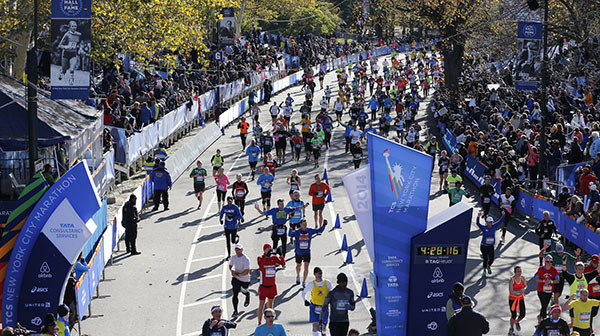
Running a counter clockwise route, the participants of the inaugural race completed a small loop near the southern end of the part, followed by four laps of the undulating main drive of the park.
One person present on that historic day was current New York Road Runners Chair of the Board George Hirsch, who described his memories of the race to the New York Times.
“On that Sunday morning in 1970, I decided to run the Central Park loop in the opposite direction from the runners,” he recalls. “It was a fun way to log a long training run while cheering for my many friends in the race.
“I was among the few bona fide spectators that day. Most of the cyclists and pedestrians weaving in and out among the runners were just folks enjoying a car-free Sunday in Central Park. They didn’t seem to realise that a race was taking place.”
The New York City Marathon has also mushroomed in size. In 1979 it attracted more than 10,000 runners for the first time and in 1997 is smashed through the 30,000 barrier.
Last year the event witnessed a global record number of 53,627 finishers for a marathon.
The race survived the cancellation of the 2012 race because of Hurricane Sandy and it has every intention to bounce back bigger and better next year from the disappointment of the cancellation of this year’s 50th anniversary race due to the global pandemic.
“After 1976 no-one, absolutely no one, even questioned whether the city-wide marathon should be run again,” adds Hirsch.
“We all knew that we had an instant hit on our hands – one that would become an annual institution and the best day in the life of New York city."
(09/14/2020) ⚡AMPby World Athletics
TCS New York City Marathon
The first New York City Marathon, organized in 1970 by Fred Lebow and Vince Chiappetta, was held entirely in Central Park. Of 127 entrants, only 55 men finished; the sole female entrant dropped out due to illness. Winners were given inexpensive wristwatches and recycled baseball and bowling trophies. The entry fee was $1 and the total event budget...
more...Training for the mental side of ultramarathons
Dave Proctor finished the Great Virtual Race Across Tennessee (GVRAT) 2,000K route on June 11, although he should have been partway through his cross-Canada speed record attempt. He was forced to cancel the cross-country run when COVID-19 hit, but he still plans to go for the record (which is 72 days and 10 hours, set by Al Howie in 1991) next year. Proctor’s body is used to taking a beating on long runs, but his mental game also plays a huge role in his success as an ultrarunner. Canadian Running spoke with him about the GVRAT, the run across Canada and how he trains his mind for such gruelling events.
Tuck the past away

Proctor is well known in the Canadian ultrarunning community. He has run treadmill world records, he’s organized races and he is consistently among the top athletes at any event he runs. He’s used to running long distances, and he finished the GVRAT after 42 days of running. For his cross-Canada run, he planned on running 105K each day, which would have gotten him across the 7,200K route in 67 days. Running can be hard for him, too, but it’s how he deals with those tough times that makes him a great runner.
“Everyone gets tired after an hour of running,” he says. “If you automatically think, ‘OK, I have 12 more hours of this,’ then you’re going to crumble.” Instead, Proctor says to “tuck the past away,” not to worry about the future and to “focus on right now.” He says there are too many factors out of your control, and to worry about them will just hurt your psyche.
“A storm might blow in at any moment during a race,” he says. Deal with that when it comes your way, but in the meantime, he says to embrace the “mindlessness of living in the moment. There’s that big component of being in the now.”
The difficulty plateau
Proctor admits that it’s not always easy to live in the moment, but he says he gets to a certain point when he knows things won’t get any worse. When this happens, he asks himself, “’Are you OK with staying here for a while?’ If the answer is yes, then I know I’m good to keep going.” He continues to check in with himself throughout these long runs, and as long as he knows he can physically keep moving, he pushes forward.
Go in with a plan
Whether you’re running a 100-miler or aiming to run 100K every day for weeks like Proctor as he crosses Canada, he says having a set plan is important. “Go in with a plan,” he says. “A lot of the time, your ego, fear or other things will take you away from that plan. There will be days when I want to run an extra 20K, but physiologically that can mess you up.” Having a set plan for pacing or nutrition or how much you’ll run each day will ease your mind. Just be sure to stick with it.
Cut yourself some slack
“Take what your body gives you,” Proctor says. “We’ve all woken up on the right side of the bed and we’ve all woken up on the wrong side, too.” He says it’s important to accept those tough days and to “be kind to yourself” and realize that day won’t be your best. Freeing yourself from your pre-run expectations can take a mental load off and help you push through those tough times.
(09/14/2020) ⚡AMPby Running Magazine
Summer heat could be a 'nightmare' for Tokyo Games
Even if the COVID-19 pandemic does not prevent the Tokyo Olympics from going ahead next year, the blazing summer heat in the Japanese capital could still make the Games ‘a nightmare’, an advisor to the organizing committee has told Reuters.
Although Japan enjoyed a mild summer this year, Makoto Yokohari said that the highest temperatures in a typical August -- when most of the delayed Games will take place -- could mean a dangerous mix of heat and humidity.

Yokohari, a professor of environment and urban planning at the University of Tokyo, analysed data going back to the 1984 Olympics in Los Angeles and said he found that in the period where the Games were held, Tokyo had the highest average temperature and precipitation of any host city.
“When it comes to heat stress or heat stroke, the problem is not only the temperature but also the humidity as well,” Yokohari told Reuters on Tuesday.
“When you can combine these two ... Tokyo is the worst in history.”
Temperatures this July, when the Olympics were due to start before the new coronavirus forced a postponement, were significantly cooler than the five-year average for the month of 30.4 degrees Celsius (87 F).
With August averaging highs of 30.8 degrees Celsius (88 F) and lows of 24.2 (75 F) over the 30 years over his study, Yokohari said organisers should be prepared for the worst.
“The temperature was not that high so if we could have this kind of weather next year, maybe it will be okay,” Yokohari added.
“But, if the weather turns out like right now, or like last year, then it is going to be a nightmare.”
HOTTEST TIME OF YEAR
The main reason for this year’s cooler July temperatures was the extended rainy season, which is often followed by the hottest time of year.
Yokohari said this was very unusual and that the rainy season in Tokyo habitually ended on or around July 20 -- three days before the Olympics are due to start.
The 1964 Tokyo Olympic were held in October but for various reasons, including television deals and to avoid a clash with other major events, the International Olympic Committee (IOC) wanted the July dates kept even after postponement.
“If we could plan this postponed Olympic Games in November then I am sure the situation could be much, much better but unfortunately the IOC said ‘no, no, it is going to be in July,’” said Yokohari.
“Having said that, I am afraid that there isn’t going to be much we can do, especially for spectators.”
Last year, in response to a particularly hot summer, the IOC acknowledged the issues Tokyo’s heat would bring and moved the marathon and race walk events to the cooler northern city of Sapporo.
Yokohari said this was very unusual and that the rainy season in Tokyo habitually ended on or around July 20 -- three days before the Olympics are due to start.
The 1964 Tokyo Olympic were held in October but for various reasons, including television deals and to avoid a clash with other major events, the International Olympic Committee (IOC) wanted the July dates kept even after postponement.
“If we could plan this postponed Olympic Games in November then I am sure the situation could be much, much better but unfortunately the IOC said ‘no, no, it is going to be in July,’” said Yokohari.
“Having said that, I am afraid that there isn’t going to be much we can do, especially for spectators.”
Last year, in response to a particularly hot summer, the IOC acknowledged the issues Tokyo’s heat would bring and moved the marathon and race walk events to the cooler northern city of Sapporo.
Before the COVID-19 pandemic struck, battling the heat was the major challenge for Games organisers.
“Tokyo 2020 and all the Japanese organisers are not optimistic about the summer weather in Tokyo at all,” Tokyo 2020 spokesman Masa Takaya said on Tuesday.
“We will be working closely together with the key delivery partners ... to combat heat weather.”
With temperatures rising around the globe, Yokohari said the Tokyo Games could be a “gamechanger”.
“I would say that Tokyo should be a gamechanger of the whole story because, in the future, no cities in the world will be able to host Olympic Games in summer anymore,” he said.
(09/14/2020) ⚡AMPGrandma's Marathon adds a female runner to logo
Grandma’s Marathon is adding a female runner to its logo, a move race organizers say is “long overdue.”
“We thought with the 45th anniversary coming up it would be a great time to make that update,” said Shane Bauer, executive director of Grandma’s Marathon. “It’s been talked about for years.”

The logo was adapted from founding sponsor Grandma’s Saloon and Grill and features black-and-white drawings of three runners in a loop. The middle runner was replaced with a woman.

An increasing number of women have run Grandma’s nearly every year since it began in 1977, and a majority of half-marathon runners have been women since that event began in 1991.
“Thinking about Kathrine Switzer pushing her way into the Boston Marathon, that wasn’t so long ago,” Bauer said about the first woman to run that race in 1967.
“There has been quite the flip.”
Duluth native and Olympic long-distance runner Kara Goucher said she’s “proud” that organizers updated the branding.
“I think we women want representation and I think to have it in the logo is a really big deal,” said Goucher, who lives in Boulder, Colo., but was visiting Duluth this week.
“Those are small steps that make a huge difference for their audience.”
Goucher is an advocate for getting more women and girls into running. After handing out water at Grandma’s Marathon and “loving the race” as a spectator while growing up, the 42-year-old said it was important to “see what was possible.”
“I think it’s one of the great sports where there is equal representation — you’re never going to see that in football or basketball or soccer,” she said. “It’s one of the places where we have equal access most of the time.”
Bauer said that women have also played an important role in the Grandma’s Marathon organization, making up a majority of the paid staff.
“If you look at our history, women have really run the show,” he said. The logo change was prompted by Grandma’s Gazette, the official race publication from Grandma’s Restaurant, which added a woman to its line-art logo in 2019, Bauer said.
Next year’s marathon will be run at half capacity — 4,000 each for the full marathon and the half and 1,500 for the 5K. Race weekend typically draws 18,000 runners and is a major boost for Duluth’s tourism economy.
The race runs along the North Shore between Two Harbors and Canal Park in Duluth and is a Boston qualifier.
Bauer said “we’re choosing to be optimistic” about running the race in person next year, but the pandemic may have other plans.
The 2020 race scheduled for June 22 was canceled at the end of March, marking the first cancellation since the marathon began.
The 45th-annual Grandma’s Marathon and Garry Bjorklund Half Marathon are scheduled for June 19.
(09/13/2020) ⚡AMPby Brooks Johnson
Grandmas Marathon
Grandma's Marathon began in 1977 when a group of local runners planned a scenic road race from Two Harbors to Duluth, Minnesota. There were just 150 participants that year, but organizers knew they had discovered something special. The marathon received its name from the Duluth-based group of famous Grandma's restaurants, its first major sponsor. The level of sponsorship with the...
more...Runners, Spectators Making Most of Virtual Boston Marathon
Organizers were forced to turn this year’s event into a safer, virtual alternative due to COVID-19
Spectators won’t see the millions of people they’re used to seeing in the Boston Marathon this year.

Some things, however, haven’t changed.
"It’s not a marathon without a cowbell," said Joe LeBlanc of the Run Club of Malden, as he rang his cowbells from the sidelines.
Something else that hasn’t changed are the supporters on the marathon route, cheering the runners on. Leo and Deborah Buckley cheered their daughter, Ashley, from the sidelines on Commonwealth Avenue in Newton Saturday morning.
Still, running a marathon during the coronavirus pandemic has been less than ideal.
"She was a little bit nervous at first but she was determined to do it anyway," Debroah Buckley said of her daughter.
Organizers were forced to turn this year’s event into a safer, virtual alternative due to COVID-19. It’s being run from Sept. 7-14 and includes a week of online events.
Despite the changes, running 26.2 miles is no less challenging. Supporters say that’s why it’s so important to be encouraged, whether you make it to the 20-mile marker or to the finish line.
Dan Fitzgerald of the Heartbreak Hill Running Company cheered on their 1,000 or so members along the marathon route in his 1989 Volkswagen vanagon.
"It’s not just the expectation that there are hundreds of thousands of fans," Fitzgerald said. "It’s more surprise and delight at the fact that people are out here and still care."
That encouragement can be pretty sweet when you need to recharge, which is why LeBlanc and Vinny Oliver -- also of the run club of Malden -- showed up to the marathon route in Newton with candy and water to support the runners.
"Being here to support them is just amazing so it’s a really great day to run," Oliver said.
(09/13/2020) ⚡AMPWhy Altitude Training Helps Some but Not Others
A new analysis casts doubt on the idea that people are born as "responders" or "non-responders" for training in thin air
To understand the latest data on altitude training for endurance athletes, it’s worth looking back at a seemingly unrelated study published in 2015. In it, 1,000 subjects undertook a three-month exercise program to see whether it would lower their blood pressure. Sure enough, the average change in diastolic blood pressure was a clinically significant reduction of five mmHg, which is good news. But not everyone benefits equally. Here’s what the individual results looked like, with positive and negative changes in blood pressure shown on the vertical axis:

On the left, some of the subjects—call them super responders—saw a drop of more than 20 mmHg. On the right, we have some non-responders, and even some negative responders, whose blood pressure increased by more than ten mmHg. That’s bad news, and receiving it might understandably tempt you to sign up for one of those genetic tests that promises to tell you how you’ll respond to exercise.
Here’s the catch: this data is fictitious. It was generated by researchers to illustrate what can go wrong when you try to classify people as responders or non-responders based on a single set of measurements. They took simulated blood-pressure data and subtracted exactly five mmHg from everyone’s baseline value. But to simulate real-world conditions, they also added some random measurement error to both the pre and post values. For some people, their apparent baseline measurement was a little higher than its true value; for others, it was lower. Same for the final measurement. If you got a randomly low baseline and a randomly high final value, it looked like you were a non-responder—even though everyone in the simulated study was really a true responder.
This question of response and non-response has been a controversial topic in exercise science (and health more generally) for at least a few decades. Researchers have rightly realized that individual variation is just as important as the average response to an intervention. But that creates a temptation to label everyone in a study who doesn’t respond as a non-responder. It’s like flipping ten dimes and saying, “Look, dimes always land on heads, as long as you ignore those five non-responders.”
Which brings us back to altitude training. Ever since the first live-high, train-low protocols were devised back in the 1990s (with an initial study that saw 17 out of 39 subjects improve their 5,000-meter times), there’s been a widespread belief that some people are responders and others non-responders. I’ve lost count of the number of times I’ve seen secondhand altitude tents for sale on running message boards or chat groups with a note along the lines of “I tried it for a few months, but it turns out I’m not a responder.”
But, as noted above, you can’t actually sort responders from non-responders based on a single stint at altitude. To their credit, altitude researchers have been trying for several decades to identify the factors that predict whether you’re likely to see an increase in oxygen-ferrying hemoglobin, which is the main goal of altitude training for endurance athletes. But the results have been mixed at best, and it’s still not at all clear if an athlete who responds to one altitude camp will respond again to the next one.

That’s the long-standing controversy addressed by the latest altitude-training data, which is published in the Scandinavian Journal of Medicine and Science in Sports. It comes from a group led by Ari Nummela of Finland’s Research Institute for Olympic Sports, and it reanalyzes data from 59 national-team endurance athletes (cross-country skiers, runners, swimmers, and assorted others) who completed a total of 82 altitude-training camps between 2009 and 2015. The camps lasted between 16 and 42 days, at altitudes of between 4,400 and 8,200 feet (1,350 and 2,500 meters).
“Success” was defined as an increase in total hemoglobin mass of greater than 1.7 percent, which exceeds the typical error inherent in the measurement of hemoglobin mass. Overall, athletes had successful camps in 46 of the 82 cases, for a hit rate of 56 percent. That may seem unimpressive, and (as I wrote earlier this year) some scientists would argue that you’d see something similar if you simply sent the athletes to a super-focused training camp at an idyllic sea-level location, no altitude required. But if you assume that altitude works, then you’re left with two possibilities: either some athletes aren’t wired to respond to altitude, or half of them were doing something wrong.
To address the first possibility, we can look at the 15 athletes who participated in at least two (and as many as five) altitude camps during the study period. Did those who benefited once consistently benefit again? Here are the individual results for those 15 athletes, with upward bars indicating an increase in total hemoglobin and downward bars indicating a decrease:
Four of the athletes (on the left) always benefited, and two of them (on the right) always saw neutral or negative responses. For the other nine, it was a mixed bag. Subject F1 had two good camps, then a bad one; subject F2 had two terrible ones, then an amazing one. The firm conclusion here, Nummela and his colleagues write, is that altitude response is not a fixed trait.
The harder question, then, is: What determines whether you’re going to have a successful camp? One solid finding was that the success rate jumped to 65 percent when the altitude was at least 6,500 feet (2,000 meters). As it turns out, the authors of this paper were the ones advising the Finnish national team on its altitude camps, and they can’t resist pointing out that this is exactly what they originally told the national-team coaches to expect. But did the coaches listen when they chose their altitude-training destinations? Apparently, not always.
The physiologists also had two other pieces of advice for the coaches: don’t let your athletes come to altitude if they have low iron stores (defined as serum ferritin below 30 micrograms per liter) or if they’re ill (as indicated by levels of the inflammation marker C-reactive protein above three milligrams per liter). These rules, too, were not enforced, so the researchers checked whether those with low iron or high inflammation were less likely to respond. The results were unconvincing: if anything, the non-responders had slightly higher baseline ferritin and lower C-reactive protein than the responders.
Other studies, in contrast, have found that having good iron levels and avoiding illness are crucial to getting good results from an altitude camp. And the physiologists who work closely with elite athletes have plenty of other ideas about what it takes to ensure a successful training block in thin air. The real conclusion, yet again, is that getting the most bang out of your altitude buck is complicated and highly individual. You can take that as a glass half empty: simply booking a plane ticket guarantees nothing. Or you can take it as a glass half full: even if your first stint at altitude didn’t work out, you might still be able to make it work the next time—if you get the details right.
(09/13/2020) ⚡AMPby Outside Online
Upcoming running events in Oregon and virtual runs from anywhere
Race season hasn't totally stopped; in fact, it's only kind of getting started.
This year we've seen racing directors all over the country implement virtual run designs to help limit contact between runners. This has been cool for many reasons. One, it's allowed runners from other places to run non-traditional routes and be a part of races in other regions. Second, it lets runners do things at their convenience—always a luxury.

As we hit the end of summer and head into fall, here are a few races still happening in Oregon—and even some fun virtual races runners can do from anywhere, on their own time.
Stranger Distances - Through Oct. 31 - Virtual
*Cue the "Stranger Things" theme song*
Stranger Distances lets runners take on any number of unusual distances, including 3.2, 6.7, and 11.11 miles. This race symbolizes how 2020 itself has felt like "being in the Upside Down" during this strange year. Runners get a certificate, Stranger Distances long sleeve and can add a medal for $9.99.
You can find Stranger Distances on runsignup.com.
The Scooby Doo Family Run - Through Oct. 4 - Virtual
This run, chugging along and available since July, encourages participants to get out and run or walk it with your entire family—dogs included! Racers get a medal, bib, water bottle and a long sleeve Scooby Doo tech tee with a hood! I might register for the gear alone, honestly. You can even add in a Scooby Doo collar or bandana for your furry friend. Run or walk this fun run anywhere.
Oakridge Triple Summit Challenge – Oakridge, Oregon - Sept. 25-27
Take on three days of different trail races and climb 8,500 feet of elevation in 40 miles total. Or, sign up for an individual day and do either a 20K, 15K or 30K. The inclines will be worth all the epic views over the three-day race.
Bigfoot 10K – Bend, Oct. 4.
This downhill road race is perfect for people looking to keep it in the 5- to 10K range. You'll fly as you head from the Cascade Lakes Welcome Center and finish at Riverbend Park.
ultrasignup.com/register.aspx?did=72351
Portland Marathon, Half Marathon, 10K and 5K - Virtual in Portland
The team behind the Portland Marathon has partnered with On Your Own to create a more individual experience for racers this year. Runners will still be going through a USATF-certified marathon course, as timing technology placed throughout the route syncs runners' paces. But this time around, runners can show up and run on their own time. Download the On Your Own app for turn-by-turn instructions and to make sure the time gets recorded. After registering, OYO will mail a racer's box with everything runners need to get started.
https://runoyo.com/opd/register
Happy Girls Sisters – Sisters, Nov. 11 – In-person or virtual!
A gorgeous run through the town and trails of Sisters, Oregon. This year there are offerings for either an in-person race or virtual. Sign up for a 5K or Half Marathon in person. Virtually, runners can up it to a full marathon this year or find some middle ground with a 10K. This is a great race to celebrate women who love running.
happygirlsrun.com/sisters/
(09/13/2020) ⚡AMPRyan Hall completes 69K ultramarathon, calls it ‘the hardest thing I’ve ever done’
Despite running just five times in 2020, the former U.S. Olympian made it through his first ultramarathon
Since retiring from professional running in 2016, American half-marathon record-holder Ryan Hall has not raced too much, and in 2020, he has only gone for a total of five training runs.


Despite this extremely low mileage for the year, he ran his first ultramarathon, completing the 69K Grand Traverse Mountain Run in Crested Butte, Colo., in 12:47:46.
In an interview after the race, Hall told the Grand Traverse team that he had hoped for “an epic adventure” that was “super hard,” and he said the event “exceeded super hard — it was super, super, super hard.”
The Grand Traverse
Local athlete Cam Smith of Crested Butte won the 69K race in an extremely tight finish, crossing the line just two seconds faster than second-place finisher Nick Coury. Smith won the race in 7:03:04. Hall was almost six hours back of the top finishers, but as he said before the race, he wasn’t running to compete for the win, he was just looking to finish.
“It was not pretty, it was not fast, but I got to the finish line,” he said in an Instagram video after the race. “I got the job done.” In his post-race interview, he said he has “never been more excited to reach a finish line.”
While he of course knew it would be a tough race, especially with no training, he said he still underestimated the challenge.
“It’s a really unique kind of pain,” he said, adding later on in his own video that the race was the hardest thing he has ever done.
No training
Hall works out a lot (he has been heavily invested in powerlifting since retiring from running), but deadlifts and benchpress reps won’t prepare you for any running race, let alone an ultramarathon. This isn’t his first time taking on a running challenge with little training under his belt.
In 2017, he ran the World Marathon Challenge (WMC) — an event in which he ran seven marathons in seven days on all seven continents — on next to no training. He finished in fifth place at that race, but he had no illusions that he could register a top result in Colorado over the weekend. He noted that the no-training approach likely isn’t a good idea for ultramarathons, saying, “I usually don’t recommend these kinds of races off five days of training a year.
Do as I say, not as I do.”
(09/13/2020) ⚡AMPby Running Magazine
World Athletics Half Marathon Championships Gdynia 2020 mass race cancelled
The Local Organising Committee of the World Athletics Half Marathon Championships Gdynia 2020 has today announced that Covid-19-related health and safety restrictions have forced the cancellation of the mass participation race that was to accompany the elite championships on 17 October.
A record number of more than 27,000 amateur runners had registered to compete on the streets of Gdynia. Instead they will be offered the opportunity to join a virtual competition with the goal of participating in the world’s largest individual half marathon.

The #AllYouNeedIsRunning project has already been endorsed by running and athletics greats including Eilish McColgan, Stefano Baldini, Marek Plawgo, Robert Korzeniowski and the President of World Athletics, Sebastian Coe.
Since the beginning of March, when the event was postponed from 29 March to 17 October, intensive discussions and efforts have been made to find a solution that would enable the Local Organising Committee to hold the event in its original format, featuring both the championships race and the record-breaking mass race.
A comprehensive document outlining modifications to the event setup and extra safety procedures was created and presented to the Polish government and relevant healthcare and sanitary bodies.
Unfortunately, holding a mass race for thousands of runners proved to be impossible in the current circumstances.
World Athletics and the LOC continue to prepare for the elite championships and will make a final decision on their future as soon as possible.
“Surely, that’s not how we imagined the outcome of three years of preparations to this event,” said Michal Drelich, head of the LOC. “I would like to thank the entire team and our partners from World Athletics and the host city of Gdynia for their incredible effort to develop alternative event formats, race courses and new procedures that were supposed to make both the elite run and the mass race happen in the safest possible way, with massively enhanced social distance and minimised touchpoints between athletes, staff and volunteers.
“However, under the current restrictions regarding mass participation events and seeing no perspective for these to be released soon, we are forced to cancel the mass race. We have postponed this decision as long as possible but now it is time to accept the reality. Our efforts are now focused on the virtual mass race and doing whatever it takes to stage the elite competition.”
Registered mass race runners are invited to join the virtual competition with their starting kits – including bib number, official Asics t-shirt, official event backpack and the unique finisher medal – planned to be shipped to them successively in the coming weeks.
The virtual race is also open for new running enthusiasts from all over the world. You only have to create your account on the newly launched platform at www.AllYouNeedIsRunning.com.
Joining the race is free of charge but you can purchase a medal, t-shirt or other merchandise items as an option. Additionally, a loyalty program and three months of complimentary subscription to TIDAL and Runkeeper Premium are offered to registered runners.
Drelich said that despite the difficult and frustrating situation, organisers want to show that #AllYouNeedIsRunning.
“We are runners ourselves,” Drelich said. “We miss spectacular events which not only give us motivation but also allow us to meet friends and deliver all those positive emotions. In the recent months, it was often going out for running session that made us refresh our brains and focus on our goals. We truly hope that 17 October, despite all the adversity, will be a great exhibition of love for running. Wherever you are on that day, let’s run together.
(09/13/2020) ⚡AMPby World Athletics
2020 Fukuoka Marathon will go ahead, but with limited field size
On Sept. 12 the Fukuoka International Marathon announced that this year's race will go ahead as scheduled on Dec. 6. Usually a two-tier elite/sub-elite men's race with a field of around 400, this year's race will be cut back dramatically.

Along with an elite invited field of probably 10 men, the field this year will be limited to the 80 fastest applicants with marathon qualifying marks under 2:25:00 and the 10 fastest with half marathon bests under 1:04:00.

This eliminates the B-group start in Ohori Park, with the entire field starting on the track at Heiwadai Field.Most notably for the event's "international" self-designation, applications will be "limited to runners who are able to enter and stay in Japan as of September 14 (Mon.), the day on which applications open."
That pretty well eliminates anyone who is not a Japanese citizen or already a resident, even in the event of liberalization of Japan's restrictive anti-COVID immigration policies between now and race day.
How that's going to apply to the invited athlete field remains to be seen, but Fukuoka is definitely capable of putting together a field that meets World Athletics gold label requirements using only Japanese and Japan-based African athletes.
(09/12/2020) ⚡AMPby Brett Larner
Fukuoka Marathon
The Fukuoka International Open Marathon Championship is one of the longest running races in Japan, it is alsoan international men’s marathon race established in 1947. The course record is held by Tsegaye Kebede of Ethiopia, running 2:05:18 in 2009. Frank Shorter won first straight years from 1971 to 1974. Derek Clayton set the World Record here in 1967 running 2:09:37. ...
more...Mo Farah and Lily Partridge were the winners at Antrim Coast Half Marathon
Mo Farah takes first as Marc Scott, Ben Connor, Stephen Scullion and M60 Tommy Hughes impress, while Lily Partridge enjoys women’s win
Mo Farah was first across the line in the Antrim Coast Half Marathon on Saturday (Sept 12) in 60:31 but the most eye-catching performances came from those following in his slipstream.

Runner-up Marc Scott was close behind with 60:43 on his debut at the distance to go No.3 on the UK all-time rankings. In third, London Marathon-bound Ben Connor took 16 seconds off his PB with 60:59 to go equal fourth with Steve Jones in fourth on the UK all-time lists.
Stephen Scullion, in fourth, smashed the Northern Ireland record by a big margin with 61:12. Like Connor, the Belfast man is set to run the London Marathon on October 4 too as the popular local athlete took more than two minutes off his best.

Lily Partridge, another London Marathon-bound Olympic hope, impressed as well as she broke away from Sam Harrison to win the women’s race in a Northern Ireland all-comers’ record of 71:36 – around a minute outside her PB but 23 seconds ahead of Harrison (71:58) as Clara Evans was third 72:21 and Becky Briggs, in fourth, ran a UK under-20 record of 72:54.
Perhaps most impressive of all, though, was masters sensation Tommy Hughes, who broke Martin Rees’ world half-marathon record for an M60 with 71:09 (even quicker than the 71:26 originally publicised shortly after he finished).
An Olympian in the marathon back in 1992, the Irish runner Hughes has been on a record-breaking spree recently and continued his great form here.
Ordinarily Farah and others might have been racing in the 40th Great North Run this weekend but with the event cancelled due to coronavirus he came to Northern Ireland instead to run in an event organised by his old friend and fellow athlete from his student days, James McIlroy.
McIlroy put together a fine domestic field for the event and Farah certainly did not have it all his own way as he only broke away from the in-form Scott in the final mile.
Scott has broken the UK 5km road record this summer and took the British 5000m title last week. He was leading in the closing stages but had no answer to Farah’s breakaway surge in the final mile.
A lead quartet of Farah, Scott, Connor and Scullion broke away early and ran together for much of the distance. Behind, Kevin Seaward was fifth in 63:09 followed by Josh Griffiths (63:12), Tom Evans (63:19), Adam Craig (63:28) and Adam Hickey (64:37).
There had been talk of Farah potentially attacking his UK record of 59:32 from Lisbon in 2015 but during media interviews on Friday he said winning the race was the main goal and he did not want to underestimate his rivals and treat it as a time trial.
Runners in this elite-only event, which was sponsored by P&O Ferries, enjoyed decent weather on a picturesque course that proved a great advertisement for athletics in Northern Ireland. The only frustration for fans was the poor quality of the live stream, which made following the race difficult after organisers had, ironically, encouraged spectators to stay at home instead of supporting from the side of the road.
(09/12/2020) ⚡AMPby Jason Henderson
This guy smashed the world record for running a backwards mile
Run a mile in this guy’s shoes and you’ll probably fall on your arse. That’s because Aaron Yoder is famous for his backwards running style – and recently broke the official Guinness World Record for fastest backwards mile.
Yoder completed the unusual feat just 5 minutes and 30 seconds. Yes, you read the correctly. By the way, the previous backwards mile world record was set by Yoder in 2015. That speedy run was completed in 5 minutes and 54 seconds.

Yoder ran his latest backwards mile on Sept. 4 in Lindsborg, Kansas as part of the New Balance 5th Avenue Mile. The event, which is in its 40th year, moved 'off 5th Avenue and onto your street' this year due to social distancing measures. Runner were encouraged to remotely participate in the run anytime between September 4 and 13, and asked to 'visualise racing 20 blocks of tree-lined 5th Avenue with thousands of other virtual runners.'
Yoder ran the mile on straight stretch Kansas road, which was free of any obstacles like moving vehicles or stray pedestrians – barring a small construction crew which seems understandably puzzled by the display.
Prior to his backwards-running success, Yoder was a competitive runner for more than 20 years, spanning from his childhood to young adult life. A severe knee injury stunted his career, with doctors instructing him to stop running all together. But Yoder found a solution to keep running a part of his life.
'Backwards running feels great on my knee,' he told Great Big Story in 2018. 'I don’t feel anything, which is the reason why I really enjoy it'
According to a study from the National Centre for Biotechnology Information, backwards running uses more leg muscles than forwards running with virtually no knee strain. And there's actually a pretty robust community of backwards runners out there.
'When I’m running backwards, it almost feels like I’m flying,' Yoder told Great Big Story. 'Because it’s such a different visual perspective seeing how far I’ve gone as opposed to how far I need to go.
(09/12/2020) ⚡AMPby Runner’s World
4 ways to reset your running goals and stay motivated
If you’re having trouble keeping on top of your running with an absence of races to set your sights on, you’re not alone. For many runners, having a race in the diary is what drives us forward to keep pounding the pavements week in and week out.
A race not only forces you to maintain your mileage but also helps you to focus on things like pace and nutrition; a constant motivator to keep your fitness goals on track.


Whether you’re the kind of runner who uses a race to stay active or you’re just desperate to improve and get that new PB, here are some of the best ways to keep motivated without an IRL event on the horizon.
1. FALL IN LOVE WITH A DIFFERENT STYLE OF RUNNING-Quite often when people become involved in the sport, they fall into habits that dictate the type of runner they are for years. A lack of races is the perfect opportunity to experience what else running has to offer.
For road runners, that might be heading out to the wilderness to try trail running for the first time (consider specialist trail running shoes if so), or visiting the track to tackle speed training if your usual focus is endurance events.
Not only might this exciting new world fill you with motivation to keep going, but varying your training style can result in improvements to your usual running, from building ankle strength on the trails to increasing your explosive power by hitting the track.
2. FILL YOUR WARDROBE WITH KIT YOU LOVE-Nothing saps your psychological drive to go out running like pulling on an uncomfortable pair of trainers or baggy old T-shirt. It can make running feel like a chore and whole experience unnecessarily unbearable.
Picking up the latest shoe technology, like the New Balance Fresh Foam X collection, ensures that you can head out of the front door looking great and feeling like you’re protected with every stride.
As well as being available in a wide range of eye-catching colourways, the Fresh Foam X has a midsole that’s designed to deliver energy return and cushioning, making you look forward to that next run instead of dreading it.
3. JOIN THE VIRTUAL RACE REVOLUTION-In the world of modern sports technology, there’s more than one way to run a race. Sure, there may be no replacement for the crowds and atmosphere of a big event, but if your main focus is having a competitive milestone in the calendar, it’s time to look at virtual races.
The New Balance Virtual 10K is an opportunity to experience the challenge of a big event in a safe way – no crammed trains or kilometre-long toilet queues in sight.
Whether you're a new runner focussing on building up your distance or more experienced and looking to unlock your speed potential, this is the challenge for you.
Once you've signed up on Strava and your 10K run is complete, you'll earn yourself 20% off performance footwear with New Balance. A great way to set goals, keep running and feel supported with the right kit.
Sign up, share your training with runners from all over the world and start working towards the finish line.
4. DON’T BE AFRAID TO THINK BIG-Running a speedy race may be the most obvious challenge for runners to maintain a training plan, but there’s more to goals than chasing PBs and pushing up your heart rate.
Setting yourself a mileage target is another great way to motivate yourself. Whether that’s a goal to cover a certain distance in an individual session or to hit bigger miles over a longer period. If your sights are set on increasing mileage then New Balance Fresh Foam X 860v11, specially designed for longer distances, will have your back.
(09/12/2020) ⚡AMPby Runner’s World
Runners push back against new World Athletics shoe rules
Norway’s Sondre Nordstad Moen pulled out of the Brussels Diamond League due to new shoe rules
Norway’s Sondre Nordstad Moen, a seven-time national record holder, pulled out of Friday’s Brussels Diamond League citing World Athletics’ new shoe rules as the reason. According to Inside the Games, the 2:05 marathoner felt that he couldn’t safely compete in a shoe with only 25 mm of cushioning. “I’m not sure I would be any of those things if I raced in Brussels because I’d have to race on the track for something like a half marathon – and hopefully a bit further – in shoes which only have 25 mm of cushioning. To be honest, I’ve decided I just can’t do that as I feel pain in my feet after only a few kilometres in such shoes.”

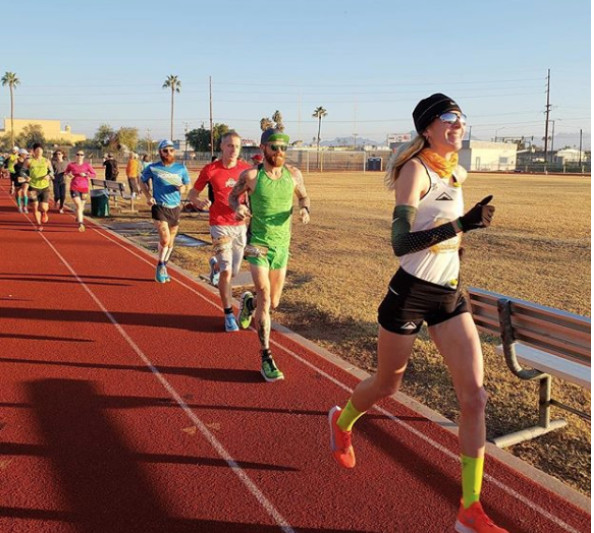
The new WA shoe rules put a limit on the stack height of any shoe worn on the track. This means for people running the 800m through ultramarathons, their shoe height can only be a maximum of 25 mm. On the road, shoes can reach 40 mm. For middle-distance events, this is an entirely fair stack height, however, other runners have pointed out that they miss the cushioning over the long haul (for example, a one-hour effort).
Camille Herron is an American ultramarathoner who holds the 24-hour track world record. She suggested on Twitter that the maximum stack heigh of 25 mm should only apply on the track through the 10,000m, so that runners competing longer could have the extra cushion.
In the ever-evolving landscape of carbon-plated racing shoes and mega stack height, WA has changed their rules several times in the last year. Their latest guidelines were only announced seven weeks ago, and could certainly change again between now and the Olympics next year.
(09/12/2020) ⚡AMPby Running Magazine
16-Year-Old Rheinhardt Harrison Trying To Become The Youngest Runner In History To Break The 4-Minute Barrier At The Atlanta Track Club Classic
An attempt to become the youngest runner in history to break the four-minute mile barrier headlines Saturday night's Atlanta Track Club Classic. Start lists for the middle distance-focused meet, which will be held at an undisclosed high school facility in Atlanta, were released today.
Rheinhardt Harrison is already the fastest 16-year-old in American history. Last month, the Florida high school junior ran 4:01.34 at the Music City Distance Carnival in Nashville. On Saturday, he will attempt to become just the 12th American high school runner to break four minutes in the mile and the first junior to do so since Jim Ryun's historic run in 1964. Harrison would also become the youngest person ever to run under four- minutes at 16 years, 6 months and 28 days old. Jakob Ingebrigtsen of Norway was 16 years, 8 months and 18 days old when he broke four-minutes at the Prefontaine Classic in 2017.

Harrison will be joined on the start line by former Florida State standout Kasey Knevelbaard (3:58.08). Multiple pacemakers have been assigned to the race with a goal pace of 1:59 through 800m for Harrison.
The District Track Club's Edose Ibadin leads the men's 800m having run a season's best of 1:44.81 last month in Washington D.C. Teammate Alex Amankwah (1:44.80) and Atlanta Track Club's Abraham Alvarado (1:46.62) will challenge Ibadin for the victory.
The women's 800 includes two women on the cusp of breaking two minutes. New Balance's Hannah Segrave (2:00.18) and The District Track Club's Jazmine Fray (2:01.18) lead a field that will also include high school national record holder Sammy Watson (Adidas) and former NCAA runner-up Allie Wilson (Atlanta Track Club).
The Atlanta Track Club Classic will kick off with a series of masters races including a men's and women's 100m and a men's mile. Elite races will be streamed on Atlanta Track Club's Instagram account (@atlantatrackclub) beginning with the men's 800m at 7:45 p.m. EST.
Atlanta Track Club will follow strict COVID-19 safety protocols as required by USA Track & Field's sanctioning requirements to ensure the safety of the athletes, coaches and staff. All athletes must submit two negative COVID-19 tests within seven days of the event. Wellness checks will be administered on site. No spectators will be permitted inside the venue.
(09/12/2020) ⚡AMPWorld Athletics incurred $17.4m loss in 2019, despite RusAF payment
World Athletics registered a loss of $17.42m (€14.71m/£13.58m) in 2019, further eating into its cash reserves in the year before the Covid-19 pandemic struck the sports industry.
Although revenues at the organisation increased by 13 per cent on the previous year to $51.1m, this was outstripped by expenditure for the same period, which stood at $67.8m.
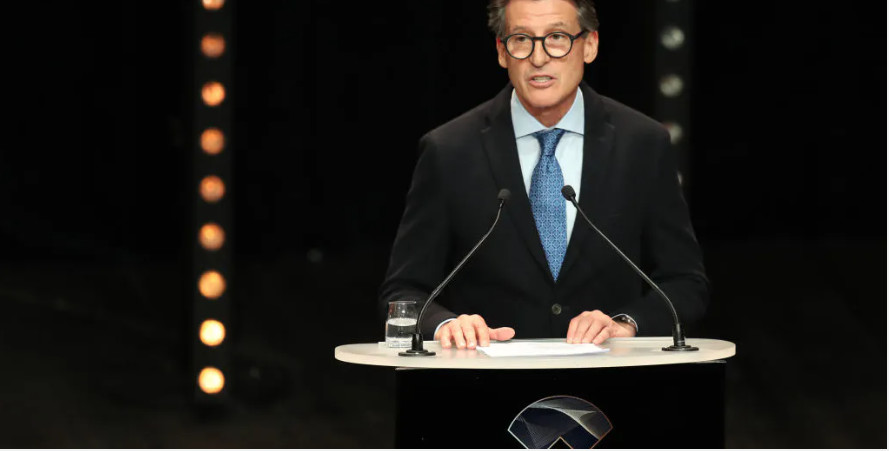
The losses could have been worse had the organisation not received a one-off payment of $3.38m from the Russian Athletics Federation as part of the sanctions imposed on the country for breaching the sport’s anti-doping rules. The bottom line was also helped by expenditure being down 5.5 per cent on the previous year due to having held just three World Athletics Series events versus five in 2018.
The figures continue an unenviable sequence of losses for the organisation, leaving it with cash reserves of $34.3m at the end of its four-year funding cycle. This was a significant decrease on 2018, when reserves stood at $45.25m, and 2017, when they were declared at $64.8m, leaving the impression of a federation that is consistently spending beyond its means.
Broadcast rights revenue in 2019 totalled $14.7m, while commercial rights revenue was $18m.
A global federation would expect to balance the books over a four-year cycle but the organisation is also reported to have incurred a $20.3m loss in 2017, the year the World Athletics Championships were held in London.
SportBusiness understands the federation has historically aimed to never to exceed a $10m loss in any financial year, the equivalent of the amount it receives each year in funding from the International Olympic Committee.
The steep downward trajectory becomes more troubling given the accounts refer to the period before Covid-19 laid waste to sports events around the world and threatened the cash flows of most global sports federations.
The postponement of the Tokyo 2020 Olympics means the athletics federation is facing an additional one-year wait for the $40m it receives every quadrennial from the International Olympic Committee and it remains to be seen what kind of event will be delivered and if the IOC’s sponsors and broadcasters will demand rebates.
World Athletics is one of several IFs to receive a portion of $63m in emergency loans and donations from the IOC to see them through the crisis. The Association of Summer Olympic International Federations (ASOIF) said in June that it does not anticipate international federations will face bankruptcy thanks to a combination of financial support and reserves being put in place.
In its latest accounts, World Athletics make a commitment to stem the outflow of money from its reserves from 2020 onwards saying: “to safeguard the organisation, the new Executive Board has agreed that the organisation should hold reserves of $25m at all times, which amounts to approximately 50 per cent of the organisation’s annual revenue”.
In his introduction to the annual report World Athletics president Sebastian Coe suggests the organisation will try to achieve this by controlling its costs and striking new commercial partnerships.
“A root-and-branch review of all HQ expenditure during 2018 and 2019 led to HQ staff freezes and excess costs cut from across the organisation,” he said. “The benefits of many of these decisions will be seen from 2020 onwards.”
A World Athletics spokesperson said there had been no cuts to athlete programmes in 2020 and the organisation did not anticipate reducing spending in this area in 2021 or 2022. World Athletics said it delivered US$17.2m in new grant funding directly to member federations over the four-year cycle.
Dentsu renegotiations
Coe said a new sponsorship deal with Qatar National Bank and a renegotiation of the federations’ 10-year global media and marketing partnership with Japanese marketing agency Dentsu had helped to plug revenue shortfalls left by other sponsors leaving the sport.
As reported previously by SportBusiness, the original 10-year deal with Dentsu, agreed unilaterally by former president Lamine Diack, and covering the global media and marketing rights – excluding Japan and Europe – to the World Athletics Series, was the source of some consternation for those who inherited the deal at the organisation.
In a written exchange with a French judge investigating the previous regime, the federation’s own lawyer Régis Bergonzi complained that the money accruing to the global federation was calculated “solely on the money actually received by Dentsu” and there was effectively nothing in the contract to prevent the agency from declaring whatever it wanted when calculating the profit share.
The agreement also stipulated that profit share revenues were only payable to World Athletics at the end of the 10-year contract, harming the federation’s cash flows and adding to the sense that the contract that was heavily weighted in the agency’s favour. The deal is understood to have been the reason Olivier Gers resigned as chief executive of the organisation in 2018, citing its ‘pre-existing commercial framework’.
The new leadership at the governing body, mandated by the World Athletics Council, renegotiated the 2020-29 contract in 2018, sometime after Gers left, even though it was not due to expire until 2029. The latest accounts shed new light on this renegotiation and reveal that Dentsu now has to make a profit share payment every two years “based on the surplus realised each year by the event related to these rights”. This led to a recognition of a contract asset of $8.4m as of January 1, 2018 which was paid during the 2018 financial year.
The federation had also previously complained about the opacity of the original Dentsu agreement which prevented it from auditing the sums involved in the sponsorship and broadcast deals signed by the agency. But a World Athletics spokesperson said the federation had secured some significant concessions in the renegotiation.
“As part of the renegotiated deal with Dentsu, there is greater transparency as it relates to sponsorship incomes received. Unlike the past, there is no deduction for expenses incurred by Dentsu to source these partnerships from the profit share pool,” the spokesperson said. “Profit share calculation is based on contracted party revenues that are validated between Dentsu and ourselves. While not formally audited, the calculation is also reviewed by [accountants] EY before they sign off on our accounts.”
The report said the Japanese agency concluded 10-year renewals with TDK, Asics and Seiko at an uplift of 10 per cent to their previous deals and renewed the organisation’s equipment supplier partnership with Mondo through to 2023. TBS, a World Athletics official media partner, were also extended in 2019 for a further 10 years.
The publication of the financial report also marks a new chapter of transparency for World Athletics and the first occasion it has sought to comply with International Financial Reporting Standards. Previously, the media has been left to parse leaked financial statements such as the 2018 set of accounts revealed by the Sports Examiner in June this year.
Coe said the appointment of former DuPont executive Vineesh Kochhar as the organisation’s new chief financial officer would bring a new discipline of corporate financial management. He added that new chief executive Jon Ridgeon would also help to drive revenues and manage expenditure.
The president said of the results: “These 2019 consolidated financial accounts come at the end of a tough and turbulent four years for our sport. Four years of extensive reforms across the sport have been driven by our Council and implemented by our Member Federations, Area Associations and Head Office.
“I will not pretend this has been easy. Tough decisions have been taken by everyone at all levels of the sport, but I believe we have emerged stronger, more resilient and ready to build and grow the sport at every entry point.”
This story was corrected at 14.51 BST. The original story said World Athletics received $6.31m from RusAF in 2019 related to doping sanctions but the actual figure was $3.38m. The governing body received a further $6.31m from the Russian federation in August this year that will be recognised in next year’s accounts.
(09/12/2020) ⚡AMPThe new drug in endurance doping works similarly to EPO, but is harder to detect
Operation Aderlass, an investigation into the doping allegations brought against German physician Mark Schmidt, has discovered the use of a new endurance drug called synthetic hemoglobin H7379. The drug reportedly works in a similar manner to EPO, as it is a synthetic form of oxygen-transporting hemoglobin, but is harder to detect. While most doping organizations have the capability to detect this drug, its detection would only come from a second round of tests, which aren’t included in the initial assessment. This round of tests would only be performed if its use was suspected.
The drug is reportedly produced in freeze-dried powder form and boosts oxygen transfer around the body, similar to various methods used in endurance sport over the years, including EPO. Clinically, it’s used as a blood substitute (basically, fake blood).

Currently, the sport of cycling is retesting riders’ old samples to asses the drug’s prevalence in their sport. While there haven’t been reports of its use in running, EPO is extremely common, and it’s possible that runners haven’t been tested for synthetic haemoglobin H7379 thus far.

Cheating is on the rise
The biological passport was introduced in elite running in 2011 to catch cheaters by monitoring changes in their blood samples (which can catch blood doping, a version of what is happening with synthetic hemoglobin H7379). A research article in Frontiers in Physiology looked at a total of 3,683 blood samples from the 2011 and 2013 Track and Field World Championships and analyzed the data on athletes from 209 countries.
The study found there are massive discrepancies between countries, meaning that some countries are playing by the rules and others aren’t even making an effort. While the section that compared nations’ rates of doping doesn’t identify these countries by name, it’s clear that elite sport is far from a level playing field. Some nations had a completely clean card, with none of their athletes showing blood doping on their biological passport, while other countries were hitting numbers as high at 74 per cent of athletes showing infractions. This was the first study of its kind on blood doping.
(09/11/2020) ⚡AMPby Madeleine Kelly
Valencia Marathon has announced that it will hold a top-level elite-only event on December 6, 2020
Within a week of cancelling the Valencia Marathon Trinidad Alfonso EDP has announced that it will hold a top-level elite-only event on December 6, 2020.
The event will be held together with a separate half marathon race also only for elite runners. It is expected that both races will include elite athletes who will approach the world records for both distances.

This elite edition will be possible thanks to the financial support of businessman Juan Roig through the Trinidad Alfonso Foundation, over which he presides. The Foundation is driving this top-level double event within the #EActíVateSport strategy that it launched to promote the reactivation of sporting events in Valencia.

This elite edition will be held for about 250 professional runners who will be attempting to qualify for the Tokyo Olympics in the summer of 2021. This year, due to the COVID-19 crisis, only the London Marathon, which celebrates its 40th anniversary in 2020 like the Valencia Marathon, will also offer top-level international competition at the Marathon distance. Participants in the MyBest42 elite programme will be in the hunt of the Olympic qualification as well as another 50 athletes looking for their best in the Half Marathon.
The two races will not be held concurrently. The organization plans to create a health zone around the event and will take exceptional safety measures to minimize any health risk. The races will be held on a reduced circuit coordinated with local authorities, to reduce the impact on the city.
(09/11/2020) ⚡AMPVALENCIA TRINIDAD ALFONSO
The Trinidad Alfonso EDP Valencia Marathon is held annually in the historic city of Valencia which, with its entirely flat circuit and perfect November temperature, averaging between 12-17 degrees, represents the ideal setting for hosting such a long-distance sporting challenge. This, coupled with the most incomparable of settings, makes the Valencia Marathon, Valencia, one of the most important events in...
more...Three-time London Marathon champion Mary Keitany Predicts Winner of the London Marathon
Three-time London Marathon champion Mary Keitany won't be at the starting line when this year's race blasts off near The Mall on October 4.
One of Kenya's greatest women marathon runners ever won't be in the elite-only field tackling the 19.6 laps of the 2.12-kilometre loop course crafted in a "biosecure bubble" orchestrated by the coronavirus pandemic.

As the athletes power down Horse Guards Road onto Birdcage Walk, Spur Road past the iconic Buckingham Palace and back to The Mall, Keitany won't be in the mix.
And she will be missed in the final, extra 1,345 metres to the finish line...

"Many are wondering why I'm not in the line-up this year, but I had been invited for the Boston Marathon race which I later cancelled due to an injury.
"The race has been postponed to next year and I have enough time to prepare because this will be my debut in the race," she told Nation Sport.
"One has to prepare well and you can't predict a race up to the last few kilometres because anything can happen with your body."
"A good example is the Boston and Chicago marathon where we saw athletes competing in a group up to the last 50 metres when Lawrence Cherono won both races in a sprint finish," she explained.
"When I broke the (women's only) world record in 2017, we just started the race in a high pace with my pacemaker, and by the time the other athletes reacted, I was very far and that's how I won the race.
"Even elite athletes have pressure during training and before the race starts, but for me that disappears when the race starts and I have to get focused to the finish line."
"Many athletes will hang on until the 35km mark where they will start dropping," she added.
Her prediction for the men's race on October 4 is that Eliud Kipchoge will carry the day, but that it will be a tight race.
(09/11/2020) ⚡AMP
by Bernard Rotich
TCS London Marathon
The London Marathon was first run on March 29, 1981 and has been held in the spring of every year since 2010. It is sponsored by Virgin Money and was founded by the former Olympic champion and journalist Chris Brasher and Welsh athlete John Disley. It is organized by Hugh Brasher (son of Chris) as Race Director and Nick Bitel...
more...Grandma’s Marathon 2021 will take place but at half capacity
This past year saw big changes for Grandma’s Marathon. The race was cancelled for the first time ever and runners were allowed to participate virtually. As for next year’s event, the plan is that it will be back to in-person, but with a few changes.
The 45th annual Grandma’s Marathon, the Garry Bjorklund Half-Marathon and the William A. Irvin 5K will take place at half capacity.

That means the marathon and half marathon will be limited to 4,000 runners, while the 5K will have just 1, 500. Registration will be open on October 1st at 7 p.m. central time and organizers expect it to fill up fast.

“Obviously, Minnesota guidelines aren’t permitting that size of a gathering yet. But there’s no way to tell what next June is going to be like. We want to do everything we can to put on a Grandma’s Marathon 45th anniversary weekend for our runners that we can possibly do.
We’re going to budget for right now the middle of the road. And if things get better with this virus and things are able to open up, we’ll absolutely open up registration to accommodate more people,” said executive director Shane Bauer.
Grandma’s Marathon is also making a long overdue update to its logo, which now includes a women’s division runner.
(09/10/2020) ⚡AMPby Sam Ali
Grandmas Marathon
Grandma's Marathon began in 1977 when a group of local runners planned a scenic road race from Two Harbors to Duluth, Minnesota. There were just 150 participants that year, but organizers knew they had discovered something special. The marathon received its name from the Duluth-based group of famous Grandma's restaurants, its first major sponsor. The level of sponsorship with the...
more...2021 Tokyo Marathon examining alternative plans
Tokyo Marathon is reported to be examining a plan to hold next year’s race, currently scheduled for 7 March, in October 2021 with a maximum field of 15000.
The plan is among the leading candidates for a solution to dealing with the ongoing coronavirus crisis. The Tokyo Marathon Foundation continues to examine the options and projections for the future and intends to make a final decision at its executive board meeting in early October.

This year’s race on 1 March was run as an elite-only event due to the effects of the coronavirus crisis. 38,000 mass participation runners had been scheduled to run through the city’s streets before the mass participation race was cancelled. Those who had been entered have the option to run in either 2021 or 2022 instead.

The countdown to next year’s race continues in the midst of uncertainty. Back in August there was a clear statement from the Foundation that “We are not considering an elite-only race.”
The postponed Tokyo Olympic and Paralympic Games are set to take place next summer. Some athletics officials are worried that if the Tokyo Marathon goes ahead with a large number of people on 7 March a cluster outbreak there would have serious repercussions for the Olympics’ and Paralympics’ chances of happening.
If the 7 March date is judged not to be feasible, the October date with a half-sized field of 15,000 seems like the most likely alternative. But with the Paralympics set to end on 5 September it remains to be seen whether another large-scale event could be realistically staged just a month later.
(09/10/2020) ⚡AMPby Brett Larner
Tokyo Marathon
The Tokyo Marathon is an annual marathon sporting event in Tokyo, the capital of Japan. It is an IAAF Gold Label marathon and one of the six World Marathon Majors. Sponsored by Tokyo Metro, the Tokyo Marathon is an annual event in Tokyo, the capital of Japan. It is an IAAF Gold Label marathon and one of the six World...
more...Be part of the 2:01:39 Challenge – BMW BERLIN-MARATHON on September 26-27, 2020
Are you ready for the 2:01:39 Challenge on September 26 and 27, 2020? How many kilometers can you cover in 2:01:39 hours, the world record time set by Eliud Kipchoge in the BMW BERLIN-MARATHON 2018? No matter where in the world you may find yourself, be a part of the #berlin42united community and run your personal record. #20139
But you can become part of the 2:01:39 Challenge from September 26 to 27, 2020. How many kilometers can you cover in 2:01:39 hours, the world record time set by Eliud Kipchoge in the 2018 BMW BERLIN-MARATHON 2018. No matter where in the world you may find yourself, be a part of the #berlin42united community, achieve your personal record and immortalize yourself in a ranking.
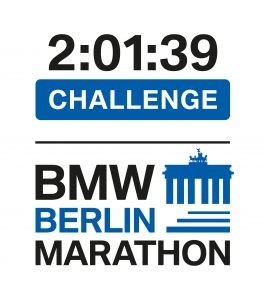
The only cost to participate is your sweat and muscle power. The 2:01:39 Challenge App provides the needed support. Starting in mid-September, the free app will be available for download for iOS and Android devices.

In addition, on September 27, 2020, a team of German top runners in the form of a relay is trying to break the time of 2:01:39 hours over the marathon distance around the Berlin Victory Column (Siegessäule). Due to the current situation, viewers can only follow this action, which takes place in compliance with the current hygiene regulations, on the screen.
The motto of September 27 is “Berlin bewegt sich” and will be broadcast live on rbb television from 9 am to 11.30 am.
In the next few weeks we will present more detailed information.Until then we wish you continued success in training for your 2:01:39 Challenge.
Stay tuned! #20139
(09/10/2020) ⚡AMPWADA threatens U.S. Olympic ban if they withdraw funding
Last week, the U.S. threatened to pull funding from the World Anti-Doping Agency (WADA), which in turn caused WADA to threaten their expulsion from the Olympic Games. WADA suggested there could be new legislation that, if they pulled funding, would find the U.S., and by extension their athletes, non-compliant with WADA rules.
WADA is an international independent agency dedicated to to monitoring the World Anti-Doping Code.

The feud stems from a June report from the Office of National Drug Control Policy, which was presented to U.S. Congress and was critical of WADA. The report said that WADA needed to implement immediately reform and requested that the Americans have more representation on their boards and committees. Reuters reports that the U.S. is the highest single contributor to WADA, giving “over $2.7 million into the 2020 budget of $37.4 million, half of which comes from the IOC.”

According to USADA President Travis Tygart, WADA’s threats are empty. “If the U.S. government stops paying, the only consequence specified in the WADA rules and UNESCO treaty is that the U.S. could no longer sit on any WADA committees. You can trust the federal government looked at the legal ramifications in the event they stopped paying.”
If the U.S. does decide to pull funding, it would leave a gap between themselves, their athletes and anti-doping worldwide. Without participating in the standardized testing pool (which is run by WADA), American athletes would have a hard time proving their clean record. For now, the U.S. remains affiliated with WADA, but that could change in the coming weeks.
(09/10/2020) ⚡AMPby Madeleine Kelly
Tokyo 2020 Olympic Games
Fifty-six years after having organized the Olympic Games, the Japanese capital will be hosting a Summer edition for the second time, originally scheduled from July 24 to August 9, 2020, the games were postponed due to coronavirus outbreak, the postponed Tokyo Olympics will be held from July 23 to August 8 in 2021, according to the International Olympic Committee decision. ...
more...Kenya has experienced far fewer coronavirus deaths than other countries with similar infection rates and no deaths in last 48 hours
(Many of the top runners in the world are Kenyans. Hundreds of these runners make their living running races, winning prize money and having sponsors. Right now because of COVID-19 many of these athletes are barely surviving. The good news is that few Kenyan runners have gotten COVID-19 and as far as we know no elite runners have died from the virus. Let's look at the overall scene in Kenya as compared to the rest of the world.)
In March, Kenya was bracing for coronavirus. Duncan Nyukuri, an infectious disease physician at Kenyatta National Hospital in Nairobi, was listening to reports coming in from China and Italy with trepidation. “Our healthcare infrastructure is not as good as in those areas,” he said, and even as Kenya implemented strict lockdown policies, it wasn’t clear how the country would cope.
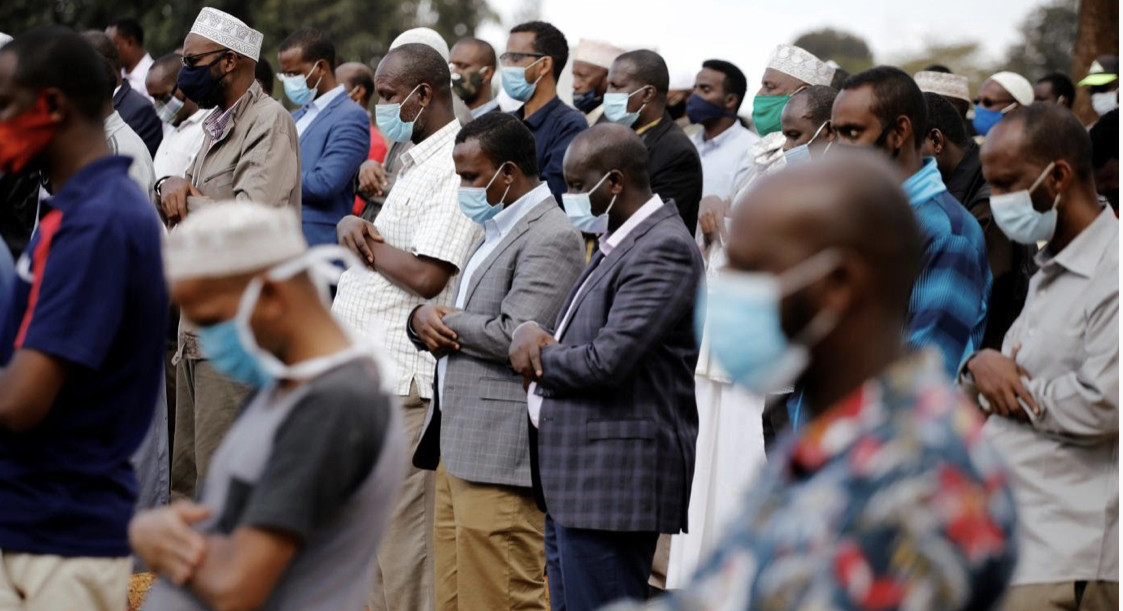
Six months on and, while Kenyans aren’t quite breathing a sigh of relief, many are cautiously optimistic. “It’s better than what I feared initially,” says Nyukuri. The majority of Kenyans who get coronavirus—around 80%, according to health cabinet secretary Mutahi Kagwe—seem to be asymptomatic. And Kenyans seem to be dying of coronavirus at far lower rates than elsewhere in the world.
Officially, 599 people have died of coronavirus in Kenya. The true total is likely higher, as the country’s testing capacities are limited, especially in rural areas. But it’s still a strikingly small proportion of official case counts: less than 2% of the 35,356 I people who have tested positive for coronavirus. This figure is distinct from the mortality rate, since many cases are never diagnosed. But still, Kenya’s numbers stand apart: Coronavirus infected 272,912 people in Italy, according to government figures, and 13% died, creating a death toll of 35,507.
Coronavirus antibody testing in Kenya puts the country’s relatively low number of deaths in even starker context. Immunologists from the KEMRI-Wellcome Trust Research Program in Kilifi, Kenya tested 3,174 people across the country from the end of April to the middle of June, and found that 5.6% tested positive. “We estimate that 1 in 20 adults in Kenya had SARS-CoV-2 antibodies during the study period,” wrote the authors in their paper, which has not yet gone through peer review but was published as a preprint in July. And yet, by midway through the survey, Kenya had only reported 71 deaths from coronavirus—far lower than the number of deaths reported globally in countries with similar levels of antibodies.

If the survey’s results accurately reflect Kenya’s overall infection rate, then 2.5 million Kenyans had coronavirus in that period. According to the World Health Organization’s conservative estimate of a 0.5% morbidity rate, that many infections would have resulted in around 12,500 deaths. Even factoring in the likelihood that official testing hasn’t captured the full impact of coronavirus, Kenyan hospitals simply aren’t reporting the number of patients expected given national antibody levels.
“Our peak is not as overwhelming as we thought it would be,” says Anne Barasa, an immunologist at the University of Nairobi who works at Kenyatta National Hospital. “At my hospital, the majority who test positive are asymptomatic. We’re not overwhelmed by those with severe disease.”
The reason for Kenya’s low death count is unclear. “Coronavirus is a new disease and there’s a lot of unknown. We are still speculating,” says Nyukuri. But Kenyans’ youthfulness is likely a major factor. Half of the population is younger than 20, and only 4% are 60 or older, according to a report from the United Nations University World Institute for Development Economics Research.
So far, coronavirus has predominantly affected cities in Kenya, particularly Nairobi and Mobassa. These areas are filled with particularly young demographics. “Most of our older population are in rural areas, as people tend to go back to rural areas when they retire,” says Nyukuri. Keeping older people apart from their younger relatives and support networks during lockdown created its own problems, including food scarcity, but it could well have protected them from infection.
Other possible theories for Kenya’s low number of deaths, including whether medications and vaccines for other conditions could help prevent severe effects, are still being investigated. HIV, unexpectedly, doesn’t seem to increase the likelihood of severe Covid-19 infections. Barasa says it’s possible that antivirals taken for HIV provide a broadly protective effect. Close to a million people, around 2% of the population, are on antiviral HIV medication.
“There’s talk that BCG [bacille Calmette-Guerin tuberculosis vaccine] and oral polio vaccines could be protective, but India has the same vaccines,” says Barasa. Kenyans could have also boosted their immune systems from exposure to other, less deadly, strains of coronaviruses, though again this theory is unproven. “There’s research being developed, but we don’t have a lot of hard evidence,” says Barasa.
No explanation can be definitively ruled out. Genetics could be a factor, says Barasa, while some speculate that Kenyans’ exposure to sunlight and resulting high vitamin D levels could somehow help. Nyukuri is less certain of this last theory: “In the US and India it’s summer and they still have these cases,” he says. “Unless our sunlight is different.”
As in the rest of the world, Kenya’s epidemic is far from over; Nyukuri says he saw between 20 and 30 coronavirus patients in the past two weeks, and the country’s healthcare system can struggle even if severe symptomatic reactions remain relatively low. Elsewhere in Africa, several other countries report similar low mortality rates to Kenya. Scientists are still unraveling why coronavirus has had a less severe effect on some countries compared to others. When they do determine a cause, the answers could help other countries bolster their defenses.
(09/09/2020) ⚡AMPIn a virtual way, Bill Romito completes 34th straight Boston Marathon
Leeds resident Bill Romito, 66, completed his virtual Boston Marathon on Tuesday, running 21 laps around Look Park in Northampton.
It was Romito’s 34th straight Boston Marathon and 214th marathon overall. He finished in 5 hours, 27 minutes, 15 seconds.

“I told myself I’d finish under 5:30 and I did,” Romito said. “Very happy about that. I’d have to say the last 8 miles were tough because of the warm weather.”
Romito is a member of the Quarter Century Club of the Boston Marathon, which was formed in 2001 to honor the achievements of Johnny Kelly. There were 82 active runners in the club as of Monday, which was the first day of the virtual 124th Boston Marathon. The event ends next Monday for runners who qualified for the 2020 edition and who signed up for the virtual event. About 30,000 runners typically participate in the Boston Marathon, which was canceled due to the COVID-19 pandemic. About 17,000 runners worldwide have signed up for the virtual run.

Romito said on Monday that road races “are more social events for me. I just miss the camaraderie of being with the some of the other local runners I don’t see that often.”
Romito said several friends lined Look Park throughout his run. He said he was thankful for their support.
(09/09/2020) ⚡AMP
by Mike Moran
Boston Marathon
Among the nation’s oldest athletic clubs, the B.A.A. was established in 1887, and, in 1896, more than half of the U.S. Olympic Team at the first modern games was composed of B.A.A. club members. The Olympic Games provided the inspiration for the first Boston Marathon, which culminated the B.A.A. Games on April 19, 1897. John J. McDermott emerged from a...
more...

